

One Week Uruguay Itinerary: A Comprehensive Uruguay Travel Guide
Posted on Last updated: March 16, 2023
I recently got the opportunity to spend one week in Uruguay , exploring every inch of its beautiful coastline to create this comprehensive Uruguay Itinerary. During my time in Colonia del Sacramento, Montevideo, Punta del Este , and road tripping up the coast, I put together the perfect Uruguay itinerary with the best places to see, stay, eat, and even watch the sunset all over Uruguay.
This itinerary is for those who want to make the most of their time in this country, accomplish the best things to do and see in Uruguay from big cities to beach towns, and make sure to explore as much as possible.
In my opinion, Uruguay is totally underrated in terms of countries to visit in South America. I’m not sure if it’s the small population (3.5m) or the fact that it’s a popular holiday destination mostly for rich Argentinians and Brazilians (and not much else). But, I’m here to try and launch Uruguay travel onto the radar of more travelers far and wide.

Introduction to Uruguay
Before, I would never have thought “Uruguay” was synonymous with ‘miles of pristine sandy beaches,’ ‘luxurious beach parties,’ ‘colorful bohemian towns,’ or ‘fascinating colonial history,’ but my one week in Uruguay changed all that for me.
This quite affluent country really has it all. They quite literally have all the cows (there are 12 million cows to 3 million people… go figure) but in terms of scenery, the views during Uruguay travel can’t be rivaled – both of the coast and of rolling farming knolls for miles and miles.
I traveled by bus for some of my journey, and by rental car with Hertz Uruguay for the rest – which I also highly recommend in order to see more points of interest – I’ll go into more detail below!
I traveled like quite the flashpacker during my trip and stayed in cozy private rooms at El Viajero Hostels (as I love the privacy of my own room but the social aspects of a hostel as a solo traveler), but I will recommend accommodation in Uruguay for a range of budgets.
Uruguay Travel Itinerary: Getting to Uruguay
Ferry: To get here, I took the easily accessible ferry to Colonia del Sacramento from Buenos Aires. There are ferry connections multiple times a day on Colonia Express between the two South American cities, and each day there are also connections to Montevideo and Punta del Este. So, it would be quite easy to take a ferry to Colonia and also ferry back to Buenos Aires from Punta del Este, which would obviously just take a little bit longer.
Fly: You can fly into Montevideo from many international airports. Punta del Este has an airport too!
- Check the cheapest flights to and from Uruguay on CheapoAir
Quick Uruguay Travel Tips:
- Montevideo Sunday Market: Try to be in Montevideo on a Sunday, the day they have their incredible and massive city-wide street market.
- Renting Cars in Uruguay: You can rent a car and do this whole journey, or you can bus between places and spend a couple of days in each place. The main cities are easily connected by bus. However, in this Uruguay Itinerary, days 4-5 require a car so you can make the most of the coast and see lots of points along the coast that you cannot see by bus. But, you can always take a bus and spend an extra day on the beach rather than making these road trips (although I would recommend them!) Check out my guide to driving in Uruguay for reference.
- Uruguayan Foods: While in Uruguay, keep your eyes out for these popular foods: Asado (meat cooked over hot coals), mate (a tea that nearly everyone drinks), dulce de leche (a caramel-like spread eaten for breakfast and in sweets), Chivito (A Uruguayan steak sandwich).

URUGUAY ITINERARY FIRST STOP: COLONIA DEL SACRAMENTO
On the first day of your 1 week in Uruguay, you’ll arrive in the tiny, beautiful, UNESCO world heritage site of Colonia del Sacramento. A quick stroll down its tree-lined cobblestone streets and you’ll be reeled in by Colonia’s unique charm.
It’s located on a little peninsula, with the world’s widest river, the Rio de La Plata, visible from all sides. Little colorful colonial buildings make up most of the old town, often with equally picturesque flowers and vines crawling up the old, cracking walls.
Colonia del Sacramento used to be a Portuguese colonial town, and you can see how well lots of the parts of this old walled town have been preserved. It really feels like you have stepped back in time as you walk these streets -a true highlight in South America. Spend a couple of days here to get a cozy and nostalgic feeling of a time long passed.
Getting to Colonia del Sacramento
Ferries leave from Buenos Aires multiple times a day, so getting there by the early afternoon should be no problem. Colonia’s ferry terminal is right next to the bus station, and both are about a 10-minute walk to the center of town or to El Viajero.

Where to Stay in Colonia del Sacramento
Here are my best recommendation of where to stay in Colonia for a range of budgets.
Budget to Mid: El Viajero Colonia
El Viajero is just outside what used to be the old town walls, and within walking distance to everything you could need to see. There’s a cozy common room, an outdoor patio where they have Uruguayan asado BBQ’s on the regular, a rooftop terrace for warm summer days, and beautiful design throughout.
As with all El Viajero Hostels, there are both private and dorm rooms available for a very affordable cost. All come with free delicious Uruguayan breakfast and the expert advice of workers, who helped me effectively plan out my day and a half in Colonia.
Mid to Luxe: Posada Plaza Mayor and Charco Hotel
If you want some ADORABLE boutique hotel options with original stone walls, leaf covered courtyards, and quaint spaces, both of these hotels are in the perfect locations.
Posada Plaza Mayor is a bit easier on the budget, and Charco hotel also offers a pool and balcony views.
Uruguay Itinerary Day 1: Colonia del Sacramento Town + Museums
For day one of your Uruguay itinerary, I recommend getting to Colonia del Sacramento as early as you can, to experience as much as possible! Once you get settled into your room, I recommend exploring the old town today.
My favorite thing to do in a new city, especially one as quaint and manageable as this, is to simply grab your camera and get wonderfully lost among the little streets.
While you do that, though, make sure to check out Colonia’s many museums. There are eight, and if you go inside the Municipal museum near the lighthouse you can purchase a ticket that is good for all of them! So today is all about exploring the old town and its museums.
Today, make sure to check out these spots (all visible on Google Maps):
- The Lighthouse + Plaza Mayor ( Faro de Colonia del Sacramento ) and the two main parks near it, for these are some of the best photo ops and most beautiful and colorful places in the town.
- Teatro Bastion del Carmen – This beautiful theater/art exhibit looks out on the water and is a beautiful space to explore.
- Rambla del Colonia del Sacramento – The riverfront boardwalk (remember it’s a river and not the sea! you can even see Buenos Aires on a clear day) faces the sunset pretty perfectly, so it might be a good idea to end your adventure here to watch the sunset over the water.
- Basilica del Santisimo Sacramento – a beautiful old white church right in the center of town
- Wander the cobblestone streets – All the streets are lined for miles with massive trees, making them incredibly scenic and great for photos – especially in fall!
- Feria Artesanal – this market is just past Teatro Bastion del Carmen, and has all sorts of local crafts to browse through.
- Porton de Campo (The drawbridge entrance) – This used to be the drawbridge entrance to the old town, and is now a memorable stone wall and entrance that’s perfect for a photo op.
And these main museums as you go: (also visible on Google maps or maps you can get from the hostel)
- Portuguese Museum – learn all about the Portuguese occupation of the town
- Municipal Museum – general history and archeological sites of Colonia
- Indigenous Museum – learn about the indigenous populations of Uruguay
- Tile Museum (Museo de Azulejo) – history and various tiles from Europe and beyond
- Regional Archives Museum – An old Portuguese house with documents and history of the city’s founding
If you’re up for it, finish up your day with dinner on the water at one of a few restaurants along the northern part of the peninsula. Alternatively, you can cook at the hostel, or grab a cheap bite from a restaurant two blocks from El Viajero that offers half price for takeaway food orders, and another 10% off if you pay with card. Done, and done!

Uruguay Itinerary Day 2 Part 1: Colonia
Although I recommend just one night in Colonia, I recommend making it into an almost-two days situation. Spend the night in Colonia, enjoy the breakfast, and then rent a bike to head up the Rambla.
Just outside the city are some gorgeous coastlines that are perfect for a morning bike ride up the street ‘Rambla Cristobal Colon.” You can rent bikes from El Viajero! This will take you past the artesanal market and past plenty of beaches and small hills to your right that serve as mini-lookout points across the bay and towards the old town.
Eventually you will reach Playa Urbana Real de San Carlos , where you can make your way into town and check out the Plaza de Toros. Enjoy some time up the coast and then head back into town for a last goodbye before grabbing a bus to Montevideo from the bus station (you can also rent cars – see below!)

URUGUAY TRAVEL ITINERARY SECOND STOP: MONTEVIDEO
You can’t have a Uruguay itinerary without the capital! Montevideo is the capital of Uruguay, and a big Metropolitan city centered around some beautiful squares and interesting historical quarters.
A Brief intro to Montevideo
Montevideo was actually formed by the Spanish as a sort of answer to the Portuguese colonizing in Colonia – there was a bit of a tiff between the two at that time. The Spanish gave land to a few families from Buenos Aires and the Canary Islands, and just like that, created the city.
The city has a very interesting history from that point – being ruled by the Spanish and Portuguese, becoming independent at the same time as Argentina, having the UK come in to help with disputes and control the ports for a time, and sadly like many other places in the world, having a genocide of indigenous people. To this day, 88% of Uruguayans are of European descent – leaving 10% of African descent mainly from the slave trade, and only 2% indigenous. Wow, right?
Today, Montevideo and Uruguay as a whole is one of the most progressive places in South America . It was one of the first in the area to legalize both cannabis and abortion, and is known for its forward-thinking ways and also for its super chilled out president who used to show up to his office in flip-flops. Like Colonia, the main town is situated on a little peninsula, but much bigger.
As I said above, try to be in Montevideo on a Sunday to experience the incredible Feria de Tristan Narvaja , honestly one of the host incredible, huge, and eclectic markets I have every been to on my travels. It would be perfect to have day 3 of this itinerary fall on a sunday, so you could go to the market in the morning and then leave for Punta del Este in the early afternoon.

Getting to Montevideo:
For the easiest Uruguay travel, busses run from Colonia to Montevideo ever hour or so, and cost 350-ish pesos. You can also choose to rent a car in Colonia and drive to Montevideo.
The Montevideo bus station, Tres Cruces, is a little bit out of town. Once you arrive you’ll want to grab either a public bus or a taxi to your accommodation.

Where to Stay in Montevideo
Budget to mid: el viajero montevideo.
El Viajero Montevideo is located near the heart of downtown, within walking distance to anything you could need to visit and within two blocks of the city’s main road. It’s got a huge open main room, with a high ceiling covered by a thin sunroof that lets natural light in.
There’s a common room to hang out, eat, and watch TV, along with a huge outdoor courtyard and hostel bar. There’s also a rooftop terrace for hot summer days – truly all you could need to meet people, hang out, and have space to chill.
Mid to Luxe: Alma Historica Boutique Hotel
Definitely the cutest boutique hotel in the city, Alma Historica Boutique Hotel is located at the end of the peninsula near the plaza and ferry port.
It’s in a historic building and has immaculate gaucho-themed rooms with incredible decor that will truly scream ‘Uruguay.’ It’s elegant yet modern and perfect for photo ops.
Montevideo Drink Tours
If you prefer tours, there are a few of them in this city you can squeeze into your itinerary:
- Montevideo Beer Tour – This city loves its craft beer!
- Tannat Wine Tasting Tour – A good alternative to a road trip
Uruguay Itinerary Day 2 Part 2: Arriving in Montevideo
Once you arrive at your accommodation, take some time to chill out. You can always check out some bars if it’s the weekend, but it has already been a busy day and this is the perfect afternoon to rest and prepare for the next couple of days. If you’re a nightlife person, this may be a good opportunity to try some bars and taste Uruguayan wine!
Uruguay Itinerary Day 3: Montevideo Old Town and Sights
Rise and shine, time to explore! After the free breakfast, I would recommend checking out the free walking tour, which meets in Plaza Independencia each day around 10:30 am (but maybe be different with weekends – check with your accommodation). Make sure to tip!
The free walking tour is the perfect introduction to the main areas of the city and the old town. In about 3 hours, the walking tour will take you through these sights (also visible on Google Maps):
- Plaza Independencia and the buildings and history surrounding it
- Artigas Mausoleum
- Old Town Entrance (Puerta de la Ciudadela)
- Teatro Solis
- Constitution Square (Plaza Matriz)
- Matriz Church
- Sarandi – shopping street
- Plaza Zabala

Montevideo Food Market
Once the tour is over, head a few blocks over Mercado del Puerto and grab a classic Uruguayan lunch of meat, meat, and more meat! Even if you’re a vegetarian, this place is worth walking around. It’s quite a spectacle to see all the different restaurants squeezed into this one, old train station-like building, with seats all around an open counter surrounding MASSIVE asado barbecues cooking everything you could imagine.
It’s not the cheapest meal, but it’s a Uruguayan classic – so you can write it off under ‘experiencing local food and culture!’ The streets around here are also very lively with markets and shopping. You can’t miss it while traveling Uruguay!
Montevideo Museums + Main Street
Next, wrap up anything else you may have wanted to return to in old town and head out on the main road, Av 18 de Julio . There are a few more main squares along this road, lots of shopping, and a few more points of interest you may want to check out. Here are some of the places you can spend the remainder of your afternoon at:
- Museo del Tango Tango Museum (Plaza Independencia)
- Museum of Cannabis – yes, I’m serious 😛
- Centro de Fotografia de Montevideo – Photography Exhibits
- Future Museum of Natural History
- Andes 1972 Museum – info about and tributes to a mysterious 1972 Andes plane crash
- Squares + Plazas – Plaza Juan Pedro Fabini, Plaza de Cagancha
- Fuente los Candados – A fountain covered in locks that lovers are destined to return to have their love be locked, should they place a lock on it.
- Contemporary Art Apace – this is an old jail turned into a center for art exhibitions.
If you have time, today or tomorrow you can also make your way to the end of Av 18 de Julio to the central stadium the Estadio Centenario . Much like Argentina, futbol can be considered the ‘local religion’ here, and Uruguay has actually won the world cup twice!
No Uruguay travel guide would be complete without mentioning futbol. At the estadio Centenario, you can find a huge park, a few historical statues and monuments, and the main point of interest, a futbol museum.
If you can make it back, I suggest watching the sunset tonight from the long jetty on the outside of the old town. This old jetty perfectly faces the sunset over the water, and if you’re lucky you might even get to watch a huge old tanker ship sail out of the harbor!
Tonight, you can either check out one of Montevideo’s many highly rated restaurants, cook in the hostel, or find some takeaways to eat before a night out. As always, choose your own adventure!

Uruguay Itinerary Day 4: Montevideo: Rambla and Punta Carretas
Now that you’ve seen just about all of the city center, it’s time to explore Montevideo’s many amazing beaches. The best way to do this is by renting a bike, of course!
I rented a bike from Hertz Uruguay in Punta Carretas before renting a car there, and it was quite easy and foolproof and allowed me to have the bike for 24 hours before riding it back to Hertz to pick up my car. But you can also rent bikes from most hotels and other places in the city too.
Ride the Rambla
Montevideo’s Rambla, or waterfront path, is actually a full 22km long. If you’re a super-adventurer you might even want to ride the whole thing today – it’s totally not impossible in a day on a bike; in fact, it could be quite leisurely if you took your time to stop at different beaches all day.
The Rambla runs from the old town (where you watched sunset yesterday) to a smaller neighboring town called Ciudad de la Costa. For a good adventure, I would look to maybe make it to Playa Honda or Playa Verde (visible on google maps!) but you can bike as long or as short as you’d like.
You will pass by tons of beaches, viewpoints, parks, overlooks, and views on the Rambla, and can, as always, choose your own adventure on where to stop and hang out.

Montevideo Beaches
On your adventure, make sure not to miss the first beach on the other side of the peninsula: Playa de los Pocitos . This is the classic Montevideo view that you see in photos and postcards. It’s the long, sandy beach bordered by tall modern buildings, and it’s absolutely beautiful! There’s also a big ‘Montevideo’ sign at the eastern side (farthest from the city) that faces said beach and buildings for the best photo op in the city.
After your big bike ride, you can check out the other main part of town apart from old town: Punta Carretas and Trouville. This is an affluent part of town with beautiful streets, nice eateries, and shopping galore. They actually have another free walking tour through this part of town each day at 3pm if you would be so inclined.
Sunset today: Today, make sure not to miss the sunset from the point right across from Punta Carretas of the same name. You can drive right to the end of the point to the Punta Brava Lighthouse , and the sunset from there is equally spectacular and right over the water behind the town.
For dinner, feel free to grab a bite in that area or head back into the main town. I do recommend renting a car today to be ready for tomorrow morning to have a full day on the road.

Scenes from the Sunday Market
Uruguay Itinerary Day 5: Montevideo to Punta Del Este
Today is a big road trip day – the first of two! If you were able to make this day fall on a Sunday, it would be the perfect opportunity to check out Montevideo’s incredible city-wide street market. The Feria de Tristan Narvaja is a market in South America that happens each week without fail.
Like I said above, it’s one of the most diverse and eclectic markets I have ever been to. Need a remote? Seaweed? A fish tank? An ancient camera? Any possible second-hand clothing or accessories you could think of? New boots? Lensless glasses frames? Fresh fruit and veg? Perfect, because they have it here. The market starts around 8 but gets busy around 10 or so – spend a few hours getting lots and finding bargains; I guarantee you won’t leave empty-handed.
If you decide not to rent a car, you can get the bus to Punta Del Este and it takes about 2-3 hours. But, renting a car is truly the best way to get the most out of the amazing coastline. You know I have terrible fomo and wanted to see all the possible points of interest, so I truly think you’ll want to rent a car for the best Uruguay travel options.

I recommend finishing with the market by the early afternoon in order to have plenty of time to stop along the beautiful coast for your road trip. If you can, take the coastal route the whole way so you’ll always be next to the ocean!
Montevideo to Punta Del Este Road Trip
As I have already mentioned multiple times, I rented my car for my Uruguay road trip from Hertz Uruguay. They made it painless and easy for me to rent a car in Montevideo and return it in Punta del Este, and as I mentioned they also made it easy for me to rent bikes to make the most of these cities too (see day 4 in Montevideo!).
Before you get on the road, make sure to check out my Tips for Driving in Uruguay. Then, you’ll be all set!
Here are some great road trip stops on the way from Montevideo to Punta del Este (mostly visible on Google Maps – or view them in full deatil in my Uruguay Road Trip blog post right here (recommended!).

- Sand dunes along the rambla – the Montevideo Rambla keeps going past beautiful expanses of beaches and small sand dunes
- El Aguillo – A huge eagle statue that used to be the home of an Italian artist
- Atlantida – cute tiny beach town
- Castillo de Francisco Piria – A castle to visit just off the main highway
- Piriapolis – beautiful beach town
- Cerro San Antonio – a hill with an incredible view of the sunset and Piriapolis
- Casapueblo – incredible and famous white beachfront hotel and museum.
Casapueblo is a VERY special stop in this Uruguay travel guide, so make sure to leave enough time to get here far before sunset. They actually close just before sunset (the last entry is about 30 min before) so make sure to time it right!
This is an absolutely incredible work of architectural art by famous artist Carlos Páez Vilaró. The hotel also serves as a museum displaying all sorts of different mediums of his art, and quite possibly is home to the best sunset in the country (although there are so many good ones!) Apparently they read his poetry each evening too, so it’s a great place to end the daylight of this awesome day and watch the sun go down.
Punta del Este is about 30 mins from here, so you’ll be able to catch the last few ounces of daylight before arriving! Since you’ll be arriving after dark there’s not too much point to explore today, but as one of the nightlife capitals of Latin America you are perfectly on time to head out to the bars.

URUGUAY TRAVEL ITINERARY THIRD STOP: PUNTA DEL ESTE
I’ve been told that Punta del Este is the ‘St Tropez of Latin America,’ and I could totally see how that’s a thing. Although I was here in winter, I could just picture the long sandy beaches lined by huge Miami-style hotels + apartment complexes just bustling with people in the summer sun. This is where the elite of Buenos Aires and Brazil come to party, and spend money on lavish beach clubs and yachts along the coast.
Brief Intro to Punta Del Este
Situated on a little peninsula with a protected harbor on one side and the Atlantic Ocean on the other, Punta del Este is perfectly situated to be a party city – and an expensive one at that. There are high-end shopping streets in the center of the city, with artisan markets to balance them out. There are points in the center of the peninsula where you can see the sea on all 4 sides!
Needless to say, there are beautiful beaches everywhere. On the west, the sun sets right over the bay and many city-dwellers gather along the coastline with their mate gourds and thermoses to watch the sunset while sharing their tea. On the east, there are sandy beaches for miles and some pretty famous sculptures, such as Los Dedos (the fingers) in a massive hand coming out of the sand.
The party doesn’t stop here, though – the bustling towns continue all the way up the coast almost to the border of Brazil, where you can find quaint little beach towns with colorful buildings and surf schools all along the coast. Of course, I wanted to discover these little towns too, which is why I have included a road trip day in this adventurous Uruguay itinerary so you can discover them too!

Where to Stay in Punta del Este
Budget to mid: el viajero.
El Viajero Punta del Este, just like the other locations, is centrally located right at the base of the peninsula and within walking distance to the beach, the harbor, and everything else! This one has a lovely outdoor bar and restaurant that gets packed with travelers in the busy season.
As it was in the past few days, my private room was beautiful and hotel-like and looked out over the street. I really appreciated to have my own space to work but still to be able to socialize and meet fellow travelers in the common area.
Mid to Luxe: The Grand Hotel
This is a a bit more of a splurge, but if you want to get amongst the high-rise buildings and luze lifestyle of PDE, this is a great choice. This hotel is right on the beach ad offers great views and high-class amenities!

Uruguay farmland views
Uruguay Itinerary Day 6: Punta del Este Road Trip up the Coast
To fully pack out your Uruguay travel guide with adventures, I would spend today driving up the coast with your rental car. Hertz was totally fine with me dropping the car off in Punta del Este, and after an epic road trip from Montevideo, you’ll be even more blown away by this road trip along even more beaches.
Start your day early, and make sure to fill up breakfast as fuel for the journey. Make sure to get going as early as you can, though, so you have enough time to enjoy some amazing Uruguay coastal road trip stops.
Don’t forget to read all about the Uruguay driving tips to know before your Road Trip. Click Here!
And, here we go! Here are the places you should stop on your Uruguay road trip from Punta del Este – reaching as far as Punta del Diablo. I did this road trip in one jam-packed day, but if you have more time in the summer you should totally stay a few nights in these different beach towns to get a great feel for the amazing boho-chic vibe of the Uruguayan coast.
Don’t forget to chekc my Perfect Uruguay Road Trip Route for more info on all the stops listed below.

Here are the best road trip stops from Punta del Este, all visible on Google Maps!
- Puente de la Barra – This is a super cool, literally wavy bridge. It’s really interesting and it feels like a rollercoaster to drive on.
- La Barra – super trendy strip of bars, cafes, and restaurants along the water. Might want to consider getting brekkie here.
- Jose Ignacio – This is a tiny little beach town with beautiful, massive mansions and a lighthouse. There’s a good coffee shop in the main square.
- La Paloma/La Pedrera – Surprise! More beautiful beach towns with amazing homes overlooking them.
- Cabo Polonio National Park – You’ll have to time this one right. Cabo Polonio is a National Park located on a sand dune peninsula, and you cannot actually drive in. You have to take a big 4WD safari-type vehicle that goes in every hour or two. The journey takes 30 mins and you can explore the little sandy town and, as usual, beach it. This could be a good place to end your day for sunset or spend a night if you are so inclined.
- Aguas Dulces – A colorful little beach town with miles of sandy coastline and even a nude beach.
- Punta del Diablo – A bit bigger beach town that truly comes alive in the summertime. It’s lovely and sleepy in the winter – with beachy boardwalks, fisherman, and a great sea views by day (or in winter). The population explodes in the summer where there’s a colorful strip of bars and clubs right on the beach that explore with party people and vacationers.
Phew! That was fun, wasn’t it?! It’s definitely a fast pace for a one day trip, but if you’re like me you want to see it all no matter how much time you have. If nothing else take these tips as a road trip guide and take as much time as you need! Today you can grab dinner on the road, or when you get back to Punta del Este.

Uruguay Itinerary Day 7: Punta del Este
Hopefully you got some good rest after your road trip, because today it’s time to explore Punta del Este Uruguay itself! There’s loads to do in this little city, and luckily you can reach most of the points of interest on a nice little walk from the hostel.
Today I recommend doing just that – taking yourself on a city walking tour (or taking a walking tour from the hostel) to enjoy the main points of the city, watching the sunset over the water, and checking out the bar scene if you feel so inclined! It’s the last day on this Uruguay travel guide so make sure to make the most of it.
I actually have a specific guide to Punta del Este that gives you all the details on things to do in Punta del Este in one day along with extra things to check out if you have more time. Check it out by clicking here.
In summary, here are a few things you can check out (visible on Google Maps):
- Los Dedos – famous hand sculpture
- Atlantic beaches and surf spots
- Isla de Los Lobos and the 3rd tallest lighthouse in the world
- Punta del Este’s old lighthouse ( Faro de Punta del Este )
- The intersection of the Atlantic Ocean and the Rio de la Plata – at the end of the peninsula near Great Britain Square
- Punte del Este Harbor – sea lion-spotting and fresh fish
- Bar strip along the water on Rambla G’ral Artigas
- High-end shopping and artisan markets on Calle 20
- Sunset views all along the western Rambla
Alternative Options: Punta del Este Tours
- Gourmet Winery Experience from Punta del Este
- Wine Tasting in Jose Ignacio
After watching the sunset over the western Rambla – from the gazebo, a picnic spot on the grass, or even one of many little piers – you should take yourself out or one last Uruguayan dinner before wrapping up your one week in Uruguay with a night out on the town.
Did you enjoy this adventurous one week in Uruguay itinerary?! Was it too much to squeeze in, or was it just right? Let me know in the comments, and thanks for coming along!

The Perfect Uruguay Road Trip: Places to Visit in Uruguay Along the Coast
Wednesday 25th of July 2018
[…] you’d like to start in Colonia del Sacramento, check my Uruguay Itinerary for things to do there and in Montevideo. This route will start in Montevideo and go through all […]
Visiting Iguazu Falls: A 2-3 Day Itinerary + Hotel from Puerto Iguazu
Tuesday 24th of July 2018
[…] One Week Uruguay Itinerary […]
Saturday 21st of July 2018
This is absolutely exquisite! I love the colors, especially in Colonia del Sacramento. And a walking tour of Old Town Montevideo would definitely be on my to-do list. I had no idea Hertz rented bikes in some cities, so thanks for that tip!
Uruguay has just moved a couple of spots towards the top of my to-do list thanks to this really detailed and inspiring post. Well done, Kimmie.
Sunday 22nd of July 2018
haha so glad I could help you move it up a few spots and so glad you enjoyed the post! Thanks so much!
I have been dying to go to Uruguay and now that feeling is even stronger after reading this post! Although oh my gosh you did so much in a week! Amazing.
I know right - it was truly a jam-packed week but thats how I like it! :) Let me knoe if you need any trip planning help when you go!
Privacy Overview
- South America
- 10 Things To Know Before...
10 Things to Know Before Visiting Uruguay

Uruguay is an amazing place to visit, although it’s not very well known. It’s always exciting to visit unheard of places, because it feels like more of an adventure, but it can be daunting if you don’t have a lot of information to help with planning your trip. Check out our insider tips so that you’re better prepared for your journey into the great unknown.
The currency in Uruguay is the Uruguayan peso. There are plenty of currency exchange locations throughout Montevideo and the big cities, but you should convert your money before going to a smaller town, just in case there isn’t one there. The airport, as in most cities, is the worst place to exchange your currency, as it’s more expensive. It’s sometimes best to convert your local currency to US dollars before travelling, because even though you’ll be converting the currency twice, it can save you money. Uruguay is not as cheap as some other Latin American nations, and tourist destinations at peak season can be difficult if you’re on a budget.

Weather and Seasons

Uruguay is one of the leading countries in the world in terms of diversity. Not only was it the first country in Latin America to allow women to vote, more recently it was the first country to legalise same-sex marriage. Same-sex sexual activity has been decriminalised since 1934, and anti-discrimination laws have been in place since 2003. This means that all people, regardless of gender or sexual orientation and identity, can feel safe and welcome when travelling to Uruguay. There are a number of gay bars and clubs, and a host of LGBT events, such as Montevideo Pride, celebrated on the last Friday of September; Punta Pride, celebrated in February; and the LGBT Chamber of Commerce National Conference, a government-supported event.

Late-Night Culture
In Uruguay, you will be doing everything a bit later than you’re used to. Here, 11pm is a perfectly normal time for dinner, and even though some restaurants open at 7pm to cater to tourists, don’t expect them to be full until at least 9.30pm. Feel free to hit a bar from 12am onwards, as most are open until 4am or 5am. Clubs are usually open until 8am or 9am, just in time to get breakfast the day after. You will see movement in the city streets at all hours, as people are coming and going places at all times.

Free Activities
In Uruguay, and specially in Montevideo, there are plenty of things to do for free if you’re on a budget. For example, all public museums (which means most museums in Uruguay) are free by law. Another way of experiencing some free culture is by going to a street market to people-watch, or finding out when the neighbourhood comparsas will be playing the drums. There’s always something going on in the streets of the city centre, so you might even unknowingly join a march! There are a lot of beautiful parks and squares, and amazing architecture that you can see just by walking around.

Public Transport
There are no trains in Uruguay, so everything is done by car or bus. The buses that go from the capital to other cities are usually very good, with comfortable seats, air conditioning and usually wifi. If you don’t wish to travel by bus, you can rent a car, but never use a taxi to travel from city to city, as it will be very expensive. In cities and towns, it is very common to use bicycles. There are several spots in Montevideo where you can rent bikes straight off the streets, and even go on guided bike tours of the city. You can also use taxis inside the city, but bear in mind that Ubers are usually cheaper; both increase their prices at night.

Street Markets
There are plenty of street markets across the country, and particularly in Montevideo. Street markets are great, because everything is sold there: clothes, artisanal objects, wooden games, fruits and vegetables, cheese, fish, meats, jewellery, packaged goods, shoes, plants and animals, antiques and more or less everything else you can think of. Food and produce are usually of better quality, and cheaper, at street markets than at supermarkets. Going there to shop for souvenirs and goods is a great idea, because you get a taste of the day-to-day experience of the local Uruguayan, with the added value of higher-quality, unique products at better prices.

A lot of Uruguayans speak some English, but you shouldn’t expect very fluid communication. The best way is to learn some basic Spanish phrases to get around with, and brace yourself for a lot of hand gestures. Uruguayans will graciously try to understand and talk to you with great patience and politeness, as these qualities are characteristic of this welcoming nation. Uruguayans are very friendly and curious, and they will try to communicate, even if it’s difficult and frustrating for both of you. If you make some effort to get over the language barrier, you’ll make some amazing friends who will give you tips on where to go and what to do.
When in Doubt, Ask a Local
Locals will help you if you’re in need. It never hurts to ask for assistance, guidance or directions, and most people will go out of their way to assist you. If you’re visiting different cities, get in touch with the staff or owners at your place of accommodation beforehand, and ask if there’s anything you need to know about the place before you set out. Ask for recommendations from people you meet at bars, restaurants or clubs. However, if you’re walking at night, don’t engage with people on the street. It’s likely that nothing bad will happen if you do, but it’s better to be safe than sorry.

Plan Your Sundays
In Sundays, most shops close very early, at around 4pm. A lot of restaurants and bars are also shut, so when you’re making plans, make sure to check the opening times of any place you plan to visit on a Sunday. Another good tip is to always carry some cash in hand, as ATMs are not as common as they could be and a lot of them close when the bank is closed. A good idea is to plan to do outdoor activities on a Sunday so that you won’t be depending on places being open.
Since you are here, we would like to share our vision for the future of travel - and the direction Culture Trip is moving in.
Culture Trip launched in 2011 with a simple yet passionate mission: to inspire people to go beyond their boundaries and experience what makes a place, its people and its culture special and meaningful — and this is still in our DNA today. We are proud that, for more than a decade, millions like you have trusted our award-winning recommendations by people who deeply understand what makes certain places and communities so special.
Increasingly we believe the world needs more meaningful, real-life connections between curious travellers keen to explore the world in a more responsible way. That is why we have intensively curated a collection of premium small-group trips as an invitation to meet and connect with new, like-minded people for once-in-a-lifetime experiences in three categories: Culture Trips, Rail Trips and Private Trips. Our Trips are suitable for both solo travelers, couples and friends who want to explore the world together.
Culture Trips are deeply immersive 5 to 16 days itineraries, that combine authentic local experiences, exciting activities and 4-5* accommodation to look forward to at the end of each day. Our Rail Trips are our most planet-friendly itineraries that invite you to take the scenic route, relax whilst getting under the skin of a destination. Our Private Trips are fully tailored itineraries, curated by our Travel Experts specifically for you, your friends or your family.
We know that many of you worry about the environmental impact of travel and are looking for ways of expanding horizons in ways that do minimal harm - and may even bring benefits. We are committed to go as far as possible in curating our trips with care for the planet. That is why all of our trips are flightless in destination, fully carbon offset - and we have ambitious plans to be net zero in the very near future.

Places to Stay
The best bed and breakfasts in uruguay, south america.

Guides & Tips
The best workspaces for freelancers in montevideo, uruguay.

See & Do
20 must-visit attractions in montevideo, uruguay.

Why Is French Soccer Player Antoine Griezmann in Love with Uruguay?

Food & Drink
How to make the chivito, according to uruguayan chef martín lavecchia.

The Best Cooking Classes to Take in Montevideo, Uruguay

The Best Places to Buy Souvenirs in Montevideo, Uruguay

The Coolest Burgeoning Uruguayan Cities Outside of Montevideo

The Best Hotels in Uruguay for Every Traveler

How Coronavirus Is Changing Mateando Culture in the Southern Cone

Why Uruguay is Giving Away Laptops

Why Uruguay Is a Progressive Millennial Haven
Culture trip spring sale, save up to $1,100 on our unique small-group trips limited spots..

- Post ID: 1551773
- Sponsored? No
- View Payload
- Skip to main content
- Skip to header right navigation
- Skip to site footer

Albom Adventures
Capturing the essence of travel through photography
Inspiring travel through photography
Visit Uruguay: Travel Guide for First-Time Visitors
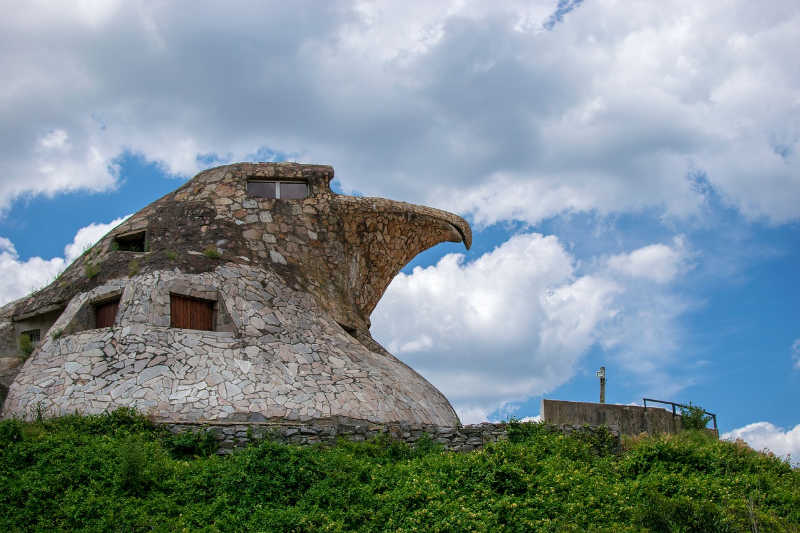
Soccer fans know Uruguay. For the rest of us, Uruguay often seems elusive and mysterious. A modern agricultural nation exporting both wool and beef, it welcomes visitors from the elite to backpackers. However, if you like to travel, it’s easy to visit Uruguay.
It’s a progressive country with a sordid history resulting in a skewed demographic balance that is quite different from its neighbouring nations. Yet, they flock here for holiday, drawn by the mild summers, stunning beaches, culinary delights, liberal laws, and the many things to do in Uruguay.
It’s a small country filled with windswept beaches, sea lions, fishing villages, horse ranches, five-star resorts, and so much more.
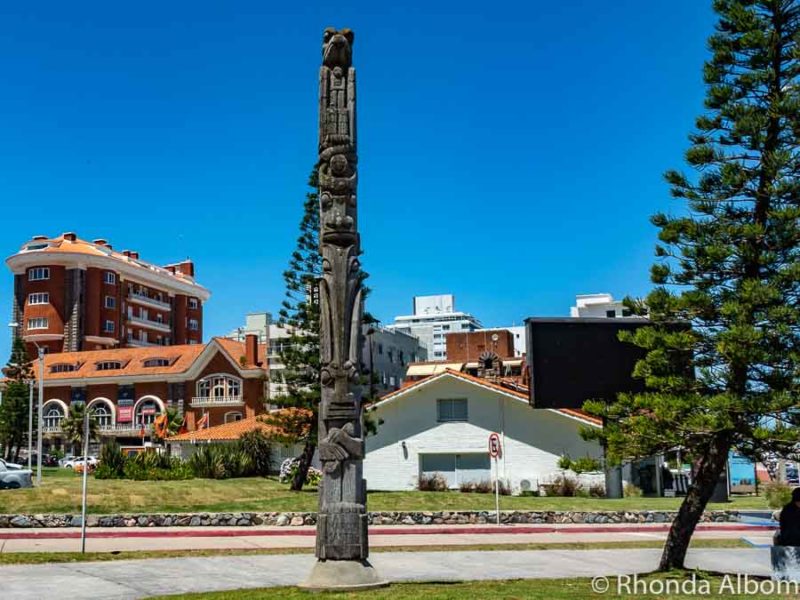
Where is Uruguay?
Nestled between Brazil and Argentina along the Atlantic coast, Uruguay is much smaller than its neighbouring countries. Boasting a population of fewer than 3.5 million residents, Uruguay has a population density of only 19 people per sq km. In comparison, the USA is at 37 per sq km, while Singapore’s population density tops 8,000 per sq km, according to World Population Review .
Uruguay travel guide: quick reference
- Emergency number : 911
- Official Language : Spanish (English is widely spoken in tourist areas)
- Currency : Uruguayan peso (UYU)
- Credit cards : Mastercard and Visa are widely accepted
- ATM Machines : Only found in the larger cities
- Electricity : 230V 50Hz Type I connectors (same as used in Australia, Argentina, and New Zealand). Also, C, F, and L connectors may be used
- Telephone country code : +598
- Water : Tap water is considered safe to drink
- Capital city of Uruguay : Montevideo
Best time to visit Uruguay
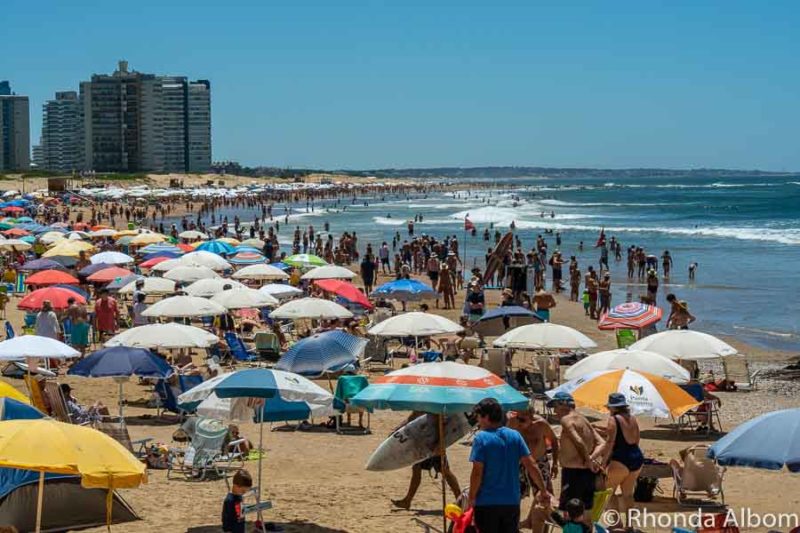
Located in the southern hemisphere, the coastal climate of Uruguay is generally milder than the interior. While spring and summer (October through March) are thought of as the best times for visiting Uruguay, be aware that January is by far the busiest and most expensive month to visit the coastal cities. In fact, many are shuttered for much of the year, coming alive sometime in December and hibernating again from mid-February.
Uruguay Seasons
December to February – Summer
- Warm coastal temperatures. Average temps: 17-28C
- Hotter in the Northwest. (33C)
- More crowded.
- Requires booking ahead.
March to May – Autumn
- Autumn is mild.
- Average temps: 10–26C
- Fewer tourists.
- Less planning is required.
June to August – Winter
- Chilly and damp winters.
- Average temps: 6–18C
- Cold winds possible.
- Shorter days.
September to November – Spring
- Springtime is damp and cool.
- Average temps: 9-24C
- Tends to be windy.
Uruguay holidays that affect travel

- Carnival in Uruguay is a big deal. In fact, Montevideo is home to the world’s longest carnival, lasting six weeks each year and boasting as much fun as Rio de Janeiro.
- January , while it’s not a holiday, is the height of the season, especially in Punta del Este. You need to book early and be aware that prices will be up.
- Additional Public Holidays in Uruguay : New Year’s Day, Día de los Reyes (Jan 6), Easter (varies), Desembarco de los 33 Orientales (Apr 19), Labor Day (May 1), Batalla de las Piedras (May 18), Natalicio de José Gervasio Artigas (June 19), Jura de la Constitución (July 18), Independence Day (Aug 25), Día de la Raza (Oct 12), Día de los Difuntos (Nov 2), and Christmas (Dec 25).
Travel tips: Know before you visit Uruguay
Visas and entry.
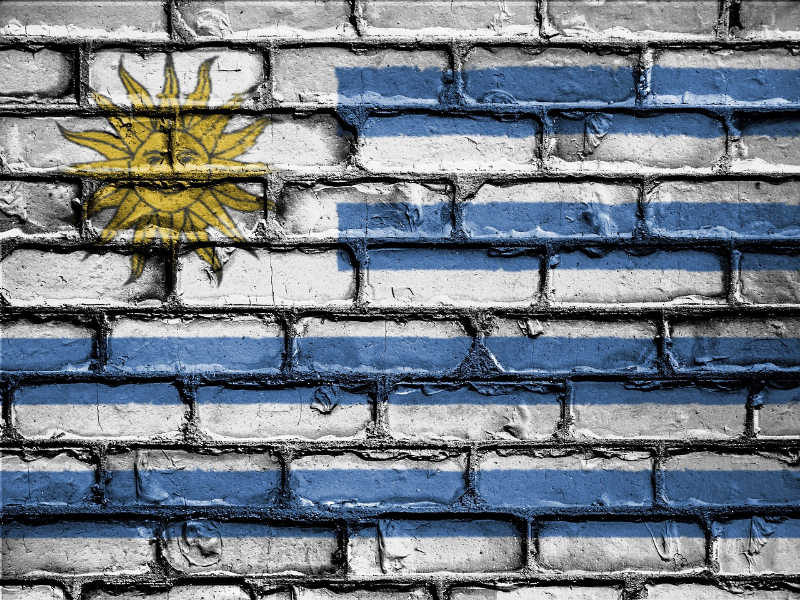
Uruguay’s visa requirements differ based on the citizenship and residency of visitors. However, citizens (passport holders) of Australia, Canada, Germany, Great Britain, New Zealand, United States, and many other countries can fill out a tourist card at immigration and will automatically be granted a 90-day visitor visa. Check the official government site for information.
Safety in Uruguay
Using the world peace index as a measure, Uruguay is considered the safest South American country . However, this is not an invitation to be careless. Even in Uruguay, we practised basic safety guidelines for travelling in South America .
Travel Insurance
We don’t travel without insurance. It’s a personal choice that has paid off well for us. Although Uruguay is well-known for having affordable healthcare, I still would carry insurance. You never know what can go wrong, as I learned first-hand when I got dengue fever while in South America. ⇒ Compare travel insurance companies based on your needs .
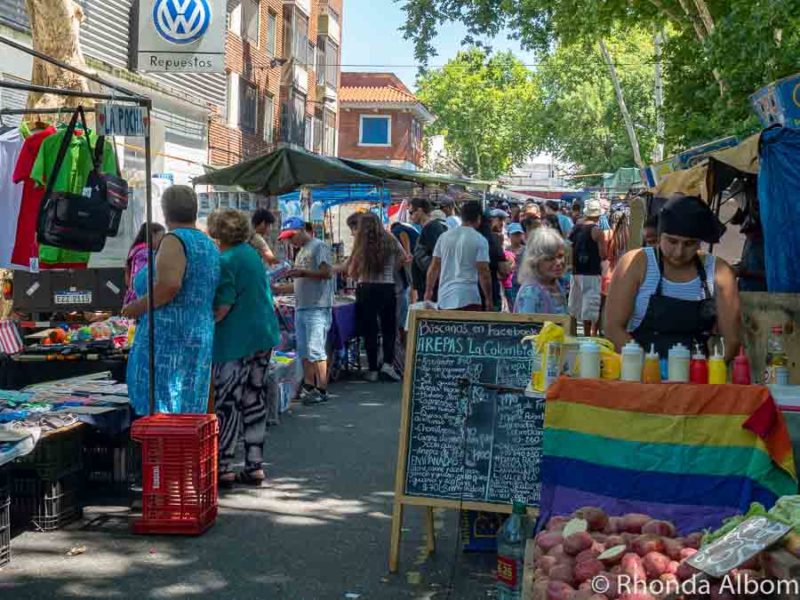
What to bring to Uruguay
We were always comfortable in Uruguay, as it has an overall casual atmosphere. Like at home, we were sporty for the daytime and smart casual for evenings. You will want a good pair of walking shoes, a sun hat, and swimwear.
We always travel light and include clothes and light jackets that can be layered as needed. Therefore, our basic kit needed nothing extra for Uruguay. You can get a free copy of our packing list when you sign up for our newsletter.
Top places to visit in Uruguay
Choosing the best places to visit in Uruguay starts with what you hope to get from your travel. The top three tourist destinations are listed here, along with two other interesting options.
Follow the links for details on what to see and do, where to stay, and other local recommendations for each destination below.
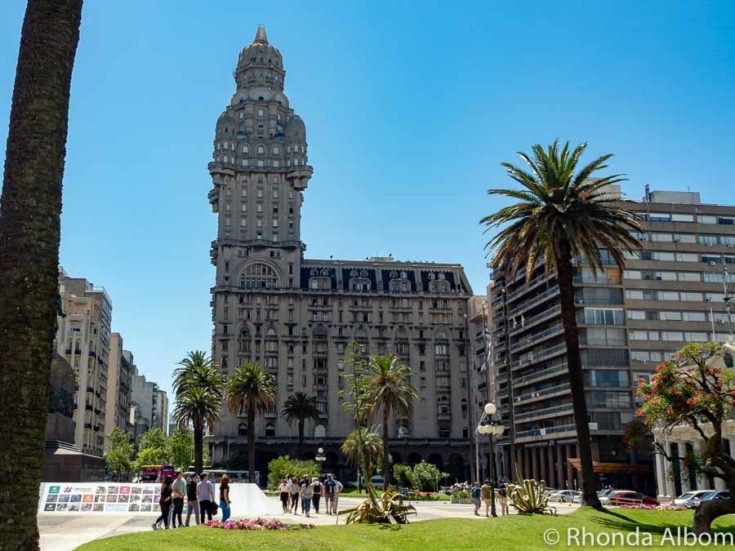
Montevideo, the capital of Uruguay, is an open-minded modern metropolis with old-world European charm. The city boasts an eclectic mix of historical buildings and contemporary designs, as well as being the seat of government.
A liveable city, we found the people friendly, the food both affordable and delicious, the wine flowing, and the marijuana inaccessible to visitors. It's often considered to be the most gay-friendly city in South America. Montevideo is a must-see for anyone visiting Uruguay.
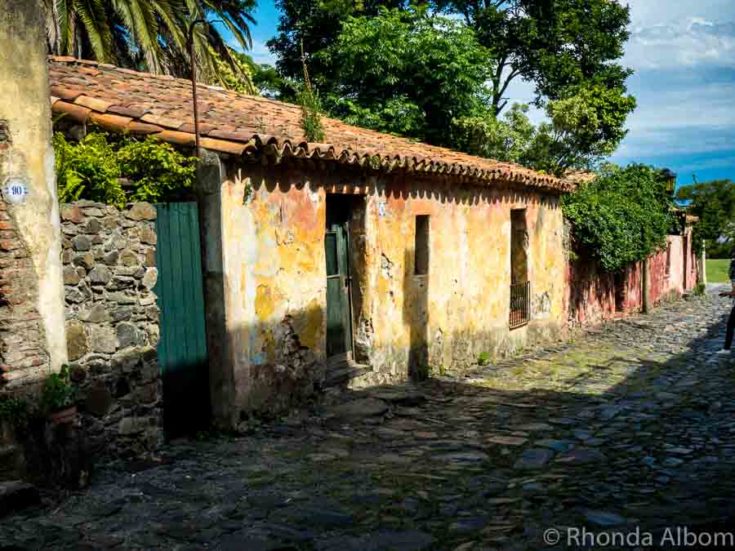
Colonia del Sacramento
Colonia del Sacramento is one of Uruguay’s oldest cities and a visit here is a real treat. From the moment we passed through the historic quarter's city gate, we were captivated by cobblestone streets, picturesque beaches, and colourful architecture.
It's an easy day trip via ferry from Buenos Aires Argentina, although we regretted not staying overnight.
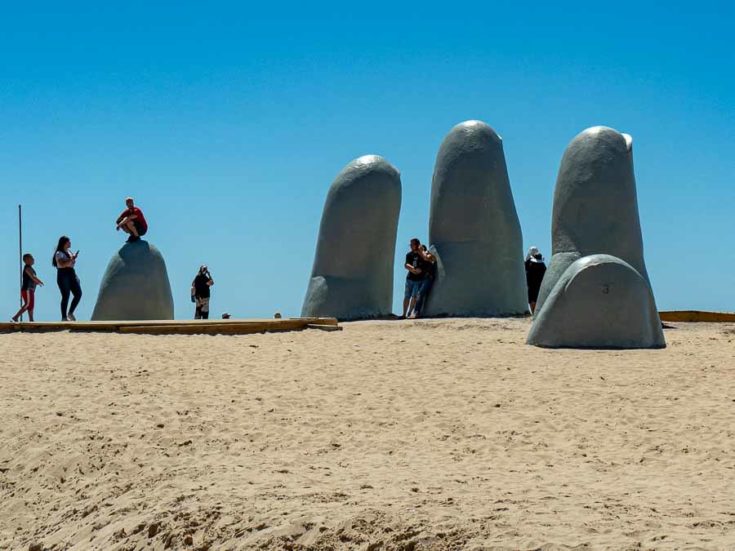
Punta del Este
If you are looking for a South American summer beach holiday in a mild climate, Punta del Este is it. Add to that white-sand beaches, sparkling waters, endless sea views, shopping, restaurants and plenty of nightlife, and you can understand why it is so popular.
However, if you want to visit in January, you had best book early, as the population swells almost 10-fold this time of year. And for good reason.
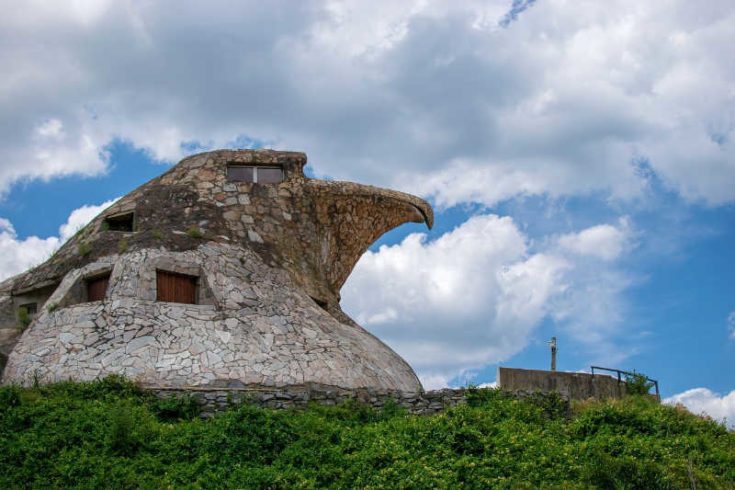
Monumento El Águila
Your eyes are not playing tricks on you. This is a house built to look like an eagle's head, with window eyes facing out to sea. El Águila de Atlantida is its Spanish name, while it is called the Eagle's Nest in English. You can find it on a deserted beach in Villa Argentina, between Montevideo and Punta del Este. As we travelled between the two cities via cruise ship, we didn't get to see it, but it's certainly on my list for another visit.
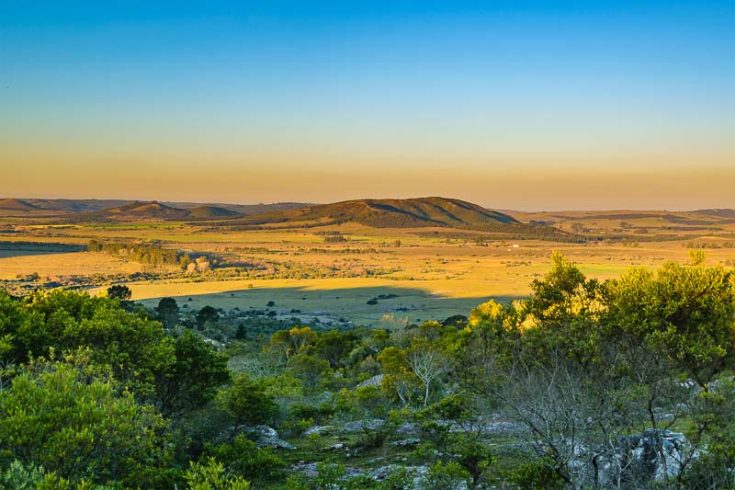
Cerro Arequita
If you are looking for a bit of adventure, perhaps this day trip out to Cerro Arequita for a bit of adrenaline-pumping climbing and rappeling is exactly what you need. The tour from Montevideo also explores the nature reserve at Salus' Park, and visits majestic caves, and enjoys the sunset. The stops are in Minas, which is inland, between Montevideo and Punta del Este.
Travelling within Uruguay
Self-driving – know before you visit uruguay.
In Uruguay, people drive on the right side of the road when they stay in their lane. Driving, we were told, is a bit haphazard and nerve-wracking. And bone-jarring potholes are not uncommon. However, if you are going to drive, there are several things you should know:
- The main highways are fine, but other road conditions vary greatly.
- The Uruguay speed limits on the open road are up to 110 kph (68 mph).
- Importantly, wearing safety belts is compulsory for everyone in the car.
- Children aged 0-12 must be in a rear seat.
- Uruguay has zero tolerance for drinking and driving.
- Dipped headlights are required during the day.
- All cars must carry a first aid kit.
We opted not to drive in Uruguay. If you feel differently, renting a car in Uruguay is easy. RentalCars.com offers options from international and local companies, allowing you to compare prices and company ratings. We have been using Rental Cars worldwide since we discovered them. ⇒ Reserve your rental car at RentalCars.com
Uruguay transportation options
If you don’t want a tour and are not brave enough to drive yourself, other transportation options include buses, trains, planes, and ferries. See other options for how to get around Uruguay here .
Local foods and drinks to try when you visit Uruguay
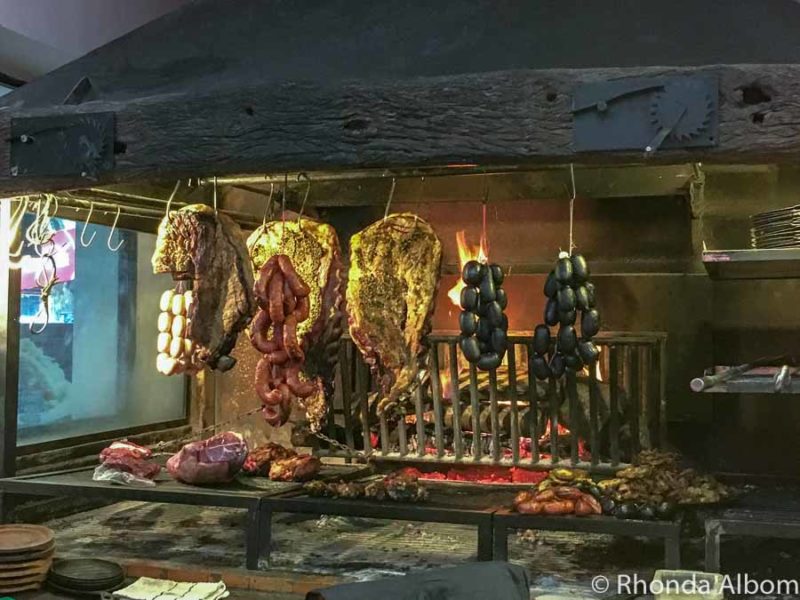
Pro tip: Many restaurants offer tax-free dining for tourists; you simply need to ask for it.
If you’re going to spend any time in Uruguay, even just a day, there are a few things you will want to try.
What to eat in Uruguay
- Chivito: is the national dish of Uruguay, according to Wikipedia. It’s a sandwich of thinly sliced cooked beef steak (churrasco), mozzarella, tomatoes, mayonnaise, and olives. Often, bacon, fried or hard-boiled eggs, and ham are added. It’s usually served with French fries.
- Asado: A slow-cooked barbeque over hot coals with a selection of different cuts of meat, from steaks to intestines.
- Empanada: Savoury pastry, typically filled with meat, ham and cheese, or vegetarian.
What to drink in Uruguay
- Share a mate (mah-tā) with friends. It’s a bitter-tasting tea-like beverage drunk from an open-top cup through a metal straw called a “bombilla.” You will see Uruguayans walking down the street, mate cup in one hand and the hot water thermos wedged firmly under their other arm.
- Sample Grappamiel, often referred to as the national drink. It is a sweet wine with honey.
- Sip some medio y medio, a combination of equal portions of wine and champagne.
Interesting Uruguayan Laws
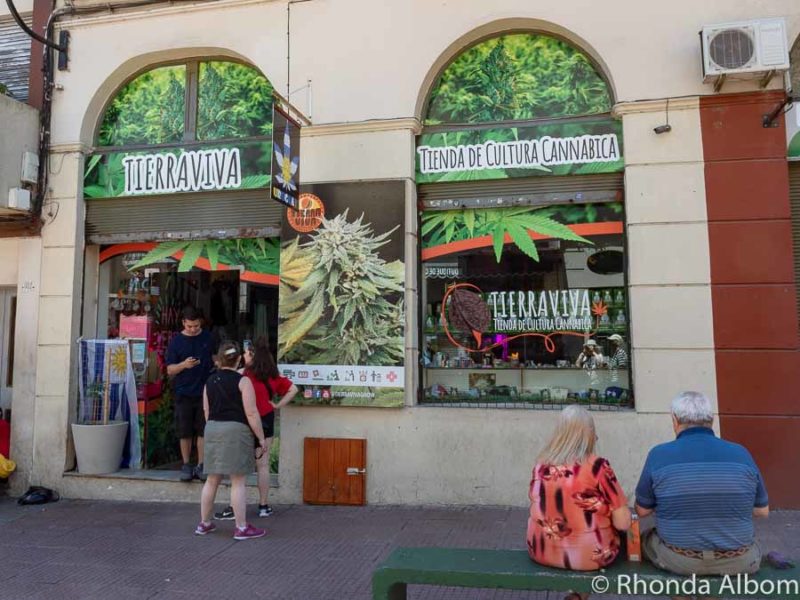
Three laws on the book clearly distinguish Uruguay from other countries in South America. all credited to former sandal-wearing President Jose Mujica.
- A first-trimester abortion is legal , but only for Uruguayan citizens and under a set of government guidelines .
- The cultivation, sale, and consumption of recreational marijuana is legal with limitations and government control; however, only for Uruguayan citizens.
- Marriage equality is on the books.
Uruguay’s Shameful Past
One thing you can’t help noticing, unlike other South American countries we visited, is the high percentage of white European Uruguayans (88%). This is a direct result of the country wiping out its indigenous Charrúa population in 1831. It’s a shameful past that current citizens seem embarrassed by. You can read about it here: Charrúa – Genocide .
More information and tips on visiting Uruguay
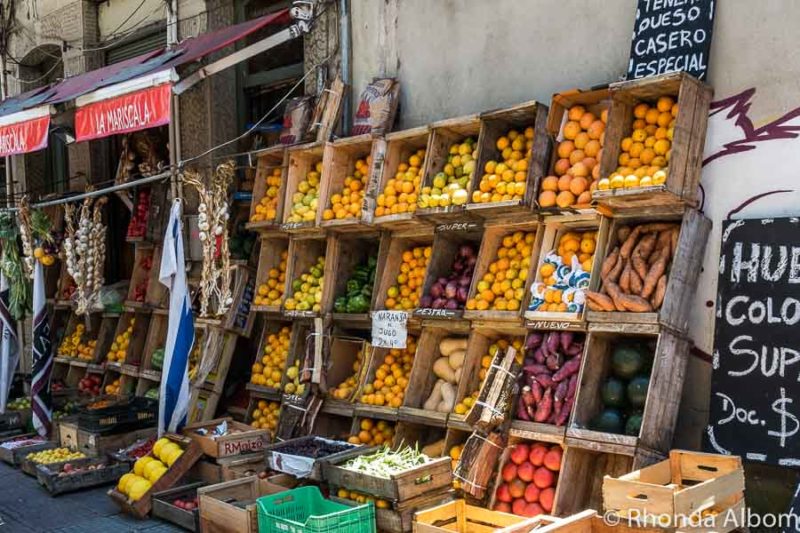
- A 10% tip in restaurants is customary.
- The legal age to purchase alcohol in Uruguay is 18; however, there is no minimum legal age for drinking alcohol.
- While it is legal for Uruguayan citizens to smoke marijuana, it is NOT legal for tourists.
- If you buy gifts that you are taking out of the country, you may still be able to get the VAT tax (22%) refund near the port terminal. Look for the small blue building, or check it out here . It was originally scheduled to end in April, but has rolled over annually and was still valid as of April 2022, with no additional information currently available.
- The weather is unpredictable, especially in the summer, so bring a rain jacket.
- Uruguay is well-known for soccer and has one of the most successful teams in the world. To date, they won 19 official FIFA titles: 2 World Championships, 2 Olympic Games, and 15 Copa América championships. Plus, they were the world’s first Soccer World Cup winners (1930) and won again in 1950.
- The population of Uruguay is about 3.5 million people and 12 million cows.
Save for when you are ready to visit Uruguay
If you enjoyed this Uruguay travel guide, please share it on social media and save it for later on Pinterest.
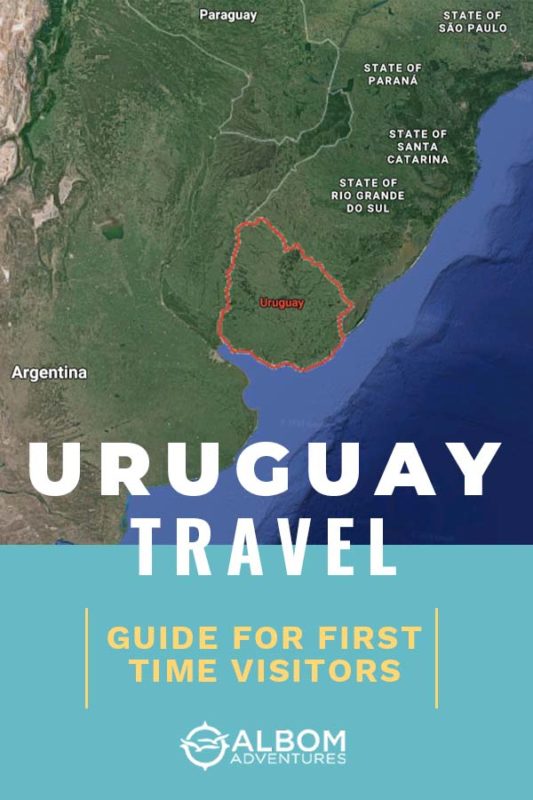
Will you visit Uruguay?
You might also like …
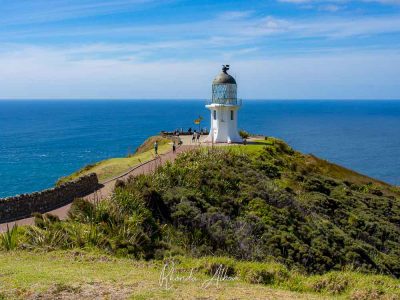
New Zealand Travel Tips for First-Time Visitors
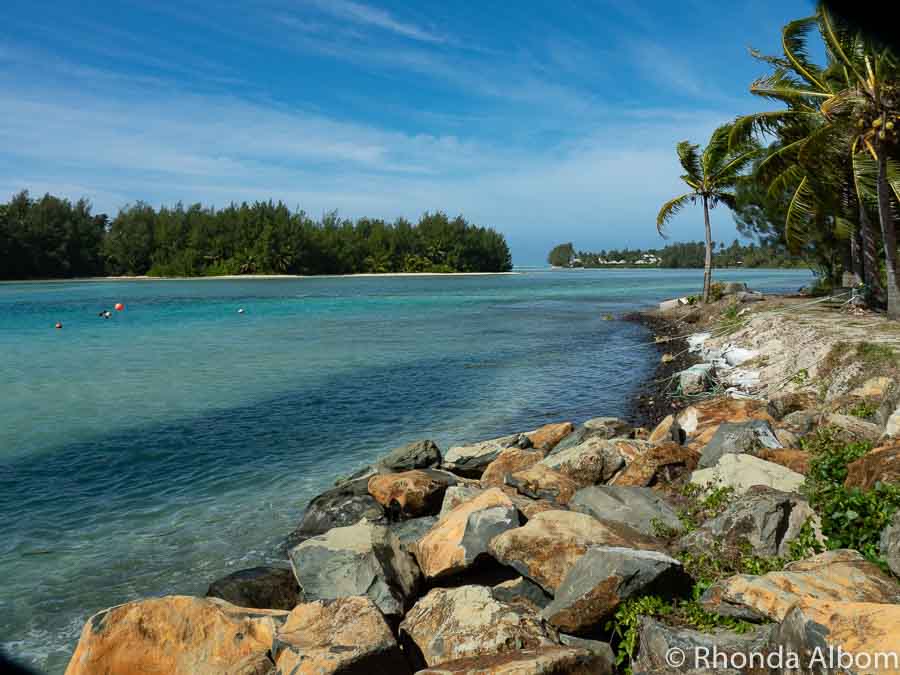
Rarotonga Travel Guide: What You Need to Know Before You Visit
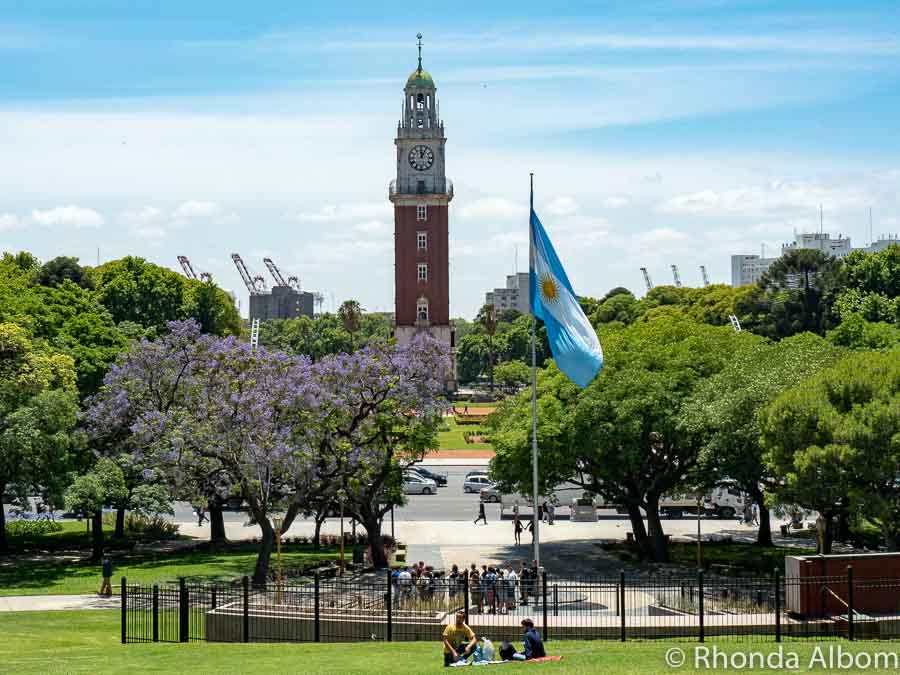
Argentina Travel Tips: A Guide for First-Time Visitors

Travel Tips for the UK: England, Scotland, Wales, and Northern Ireland
Photo Credits
Photos on this page are either shot by our team and watermarked as such, in the public domain, or some stock photos were supplied by DepositPhotos .
About Rhonda Albom
Capturing the essence of travel through photography, Rhonda Albom is the primary author and photographer at Albom Adventures. She is an American expat based in New Zealand. She travels the world with her husband.
Reader Interactions
Kelly Anne Rothaermel
October 17, 2019 at 2:31 am
Uruguay has never really been on my travel radar, but I might have to reconsider! Have a great week.
October 16, 2019 at 12:00 pm
Loved exploring the local food in Uruguay a few years ago. One thing that struck me was how people would walk around with the flasks of hot water and drink at any time of the day and any where. Fascinating!! Truly a football capital. We run into an ex-world champion player at a restaurant in Montevideo. Great country and thanks for highlighting it. Hope more people will visit this small, but amazing country.
October 16, 2019 at 11:52 am
These are wonderful things to expect for a first time visitor, I am sure the weather is fantastic during the prime season. Thanks for sharing the tips! xo – kam
October 16, 2019 at 5:41 am
You seem to have visited so many fascinating places! You must live in a constant state of jet lag!
October 16, 2019 at 12:17 am
Don’t know much about Uruguay, to be honest, so this is quite interesting to read. Fewer than 3,5 million people? I thought the population was much greater for some reason. And how lovely that their carnival in Montevideo lasts for six weeks. That must be one great event to attend. 🙂 Thanks for the info regarding the best time to go, March seems like a good idea for me. Would love to see Montevideo and Punta del Este, and to try some of that mah-tā.
October 15, 2019 at 11:37 pm
Thank you for this informative and educational post ! I went to Montevideo last year and we loved it! Great photos
October 15, 2019 at 2:53 pm
You got me interested about Uruguay! The chart of best time to visit is too good. Can I use the same idea for some of my posts? Little tips like tax free food for tourists, zero alcohol tolerance is all so helpful. Great post. Saving it up for my dreams. 🙂
October 15, 2019 at 5:07 am
What a beautiful place to visit!
Linda (LD Holland)
October 14, 2019 at 1:46 pm
We are excited to be heading to South America in the new year. So this was a quick intro to Uruguay for us. Glad to know it is considered safe if we wander (carefully) around on our own. I love the variety in what is offered in Uruguay. But we will be sure to book our tours early since it is high season when we visit. I appreciate that tip. I had to laugh when I read that there are almost 3 cows per person!
October 14, 2019 at 11:20 am
You’ve captured my imagination with your pics and stories of Uruguay. I’ve never really thought about traveling there, but now I’m tempted. Excellent tip about some places on the coast being shuttered outside of December to mid-February! I’m not great with crowds so Carnival might feel too overwhelming to me, so I’d try to avoid that. Colonia del Sacramento, Punta del Este and Montevideo seem too tempting to miss!
October 14, 2019 at 7:41 am
What a great article and I am so interested to explore more about Uruguay! The street markets and fruit vendors are so similar to what we have back home in India.
Jenn and Ed Coleman
October 14, 2019 at 3:12 am
This was a great article. I have always “heard” of Uruguay, but never enough to prompt a visit. Now I am intrigued. It looks like they have a good selection of adventure travel and ocean sports. Also, the culture of being the safest country with the most liberal laws seems interesting. It’s as if Draconian law enforcement doesn’t actually make a country safer in the end.
October 13, 2019 at 8:23 pm
Great tips here for the first time visitors (and hopefully I be there soon as a first timer) so kept a lot of these tips in mind. Still don’t know much about Uruguay but cant wait to get lost in their culture, their land, their food and to educate myself there.
Ruth Murdoch
October 13, 2019 at 8:26 am
This is a fantastic blog for first time visitors, thanks and very well written.
Laureen Lund
October 13, 2019 at 12:03 am
Thank you for inspiring me to visit. Several years ago we made a cruise stop in Montevideo and I’ve always wondered if I should go back to explore. Now I think I will. Great and very informative post.
October 12, 2019 at 5:27 pm
So it’s seasons are the same as ours, I didn’t know that.
October 12, 2019 at 5:24 pm
I will admit I knew very little about Uruguay, so your post is interesting! I love the colorful beach and streets. The sad genocide history is also new to me. Thanks for putting together this detailed post!
Leave a Reply Cancel reply
Your email address will not be published. Required fields are marked *
Save my name, email, and website in this browser for the next time I comment.
This site uses Akismet to reduce spam. Learn how your comment data is processed .
Privacy Overview
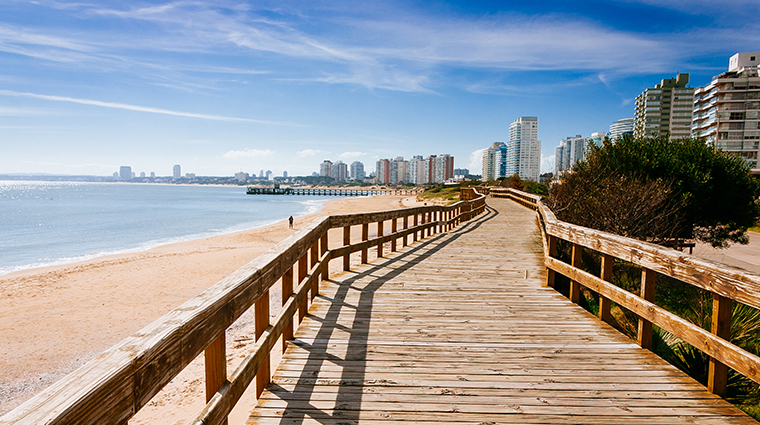
Comfortably wedged between Brazil and Argentina, Uruguay is the gorgeous South American country of your travel fantasies. Its verdant interior, colonial-era architecture (especially in capital city Montevideo) and beach-lined coast hit all the vacation high notes — a sublime food scene (look out for Mercado del Puerto’s sensational steakhouses) doesn’t hurt, either.
Off the radar of North American travelers until recently, Uruguay has a laid-back vibe and sleepy beach towns that have attracted South American glitterati for years with its array of resort destinations like luxe Punta del Este (regarded as the Southern Hemisphere’s French Riviera) and remote retreats such as Cabo Polonio, where you’ll find almost no electricity and few roads.
Despite their relaxed mentality, though, Uruguayans know how to have a good time. Nightlife is huge here with bars and clubs staying open until between 6 and 7 a.m. (most locals don’t even go out for drinks until 11 p.m.) and the longest-running Carnival celebration in the world.
- Attractions and Landmarks
- Food and Wine

Dreaming of your next trip?
I agree to the Forbes Travel Guide Privacy Policy , Terms , and Cookie Policy . I understand I can withdraw my consent at any time.
Sign up for our newsletter

Anna Sherchand
Solo Female Travel Blog
5 days in Uruguay itinerary + Travel Tips
Uruguay, a small yet captivating country in South America, is often overlooked but brimming with charm. As a traveler on a mission to explore all the UN-recognized countries, I found Uruguay to be a hidden gem worth sharing. So, today I am sharing how I spent 5 days in Uruguay to give you insight into the country and travel tips too.
When I arrived in Montevideo, to my surprise it was the country’s 300th independent anniversary so there was a weekend full of music concerts happening over 4 different stages, and the main center of town was even blocked for vehicles. So, a lot of people partying up on the streets into the wee hours of the morning. True local experience if you ask me! That being said, you can still run with the Urguay itinerary I shared below as even with the biggest celebration, the train/bus was punctual and didn’t disrupt my 5 days in Uruguay in any way but of course, it is my experience yours may vary. Uruguay is nestled between Brazil and Argentina and is rich in history, culture, and natural beauty. Despite its small size, this country has a fascinating past, having been inhabited by indigenous peoples for thousands of years before being discovered by the Spanish in 1516 and colonized in the 16th-17th century.
Btw, your support in sharing my blog and socials is greatly appreciated as I strive to inspire others to explore the beauty and diversity of our planet.
Now let’s get into it:
5 days in Uruguay itinerary
Day 1: montevideo, day 2: montevideo, day 3: colonia del sacramento, how to get to colonia from montevideo, day 4: punta del este, where to buy bus ticket from montevideo to punta del este, day 5: punta del este, my route in uruguay , how to get to uruguay, where to stay in uruguay, must try food in uruguay, must try drinks in uruguay:, local currency in uruguay, is it safe for solo female travelers in uruguay.
- Let me know in the comments:
For accommodation, I recommend using booking.com and sorting with price, then consider the ones with highest reviews plus within 1km of center/old town. Below I have researched and linked the best ones with this filter (at the time of writing) For tours, I recommend using get your guide and walking tours available in most places

Morning: Arrive in Montevideo and check into your accommodation (where to stay below). Settle in and prepare for your exploration of the city.
Afternoon: Head to the Ciudad Vieja (Old Town), where you can wander through the historic streets and admire the colonial architecture. Don’t miss the Mercado del Puerto, a lively market known for its grilled meats and local delicacies. Grab a bite to eat and soak in the vibrant atmosphere.
Evening: Take a leisurely walk along La Rambla to witness beautiful sunsets, the city’s waterfront promenade. Enjoy the fresh breeze and panoramic views of the Rio de la Plata as you unwind from your day of travel. Consider ending your evening with a drink at one of the waterfront restaurants, savoring the ambiance of this charming city. For Dinner, you might want to check out yet another Mercado Ferrando- a 30-minute straight walk from downtown or 5 minute Uber ride. Recommend Mostrador Parrilla.
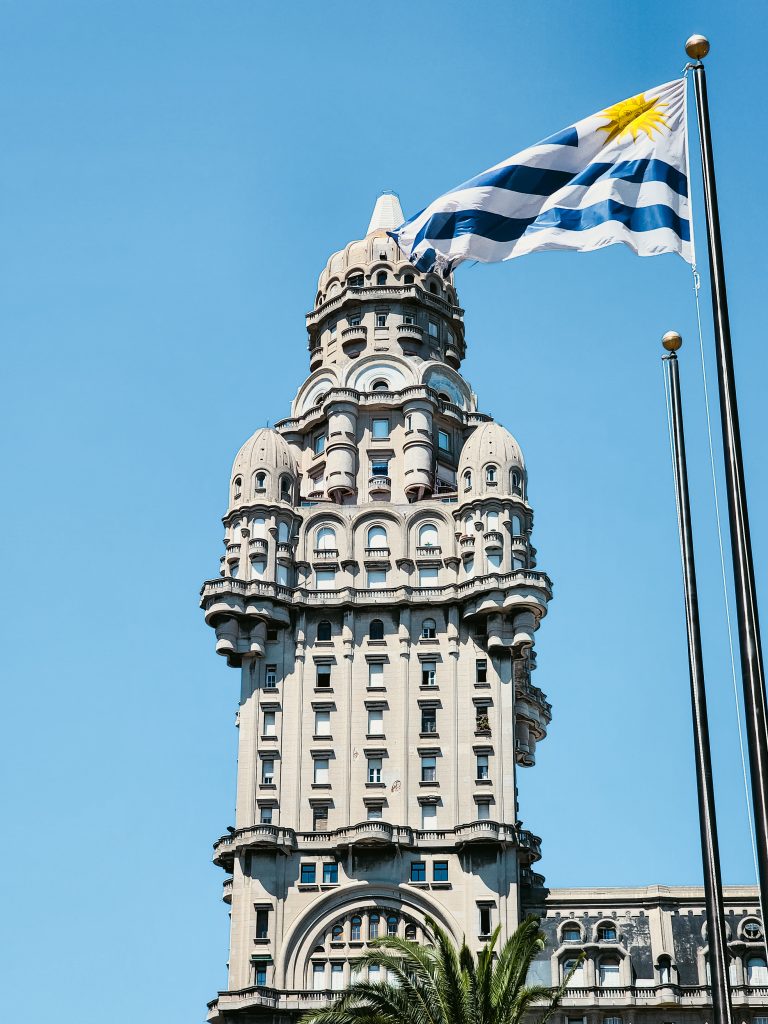
Morning: Start your day by visiting the Legislative Palace, a stunning architectural masterpiece and the seat of Uruguay’s government. Join a guided tour to learn about the country’s political history and admire the grandeur of the building’s interior, including its impressive marble staircase and ornate chambers.
Head to the nearby Artigas Mausoleum, the final resting place of José Artigas, Uruguay’s national hero. The mausoleum is located in Independence Square and is a symbol of Uruguay’s struggle for independence. Explore the museum inside the mausoleum to gain insight into Artigas’s life and legacy.
Enjoy lunch at Cafe La Farmacia (pharmacy turned into a cafe or if you feel like exploring, make your way to the Prado neighborhood, known for its beautiful parks and gardens. Visit the Botanical Garden, home to a diverse collection of plants from Uruguay and around the world. Stroll through the garden’s paths, taking in the sights and scents of the flora.
Continue your exploration of the Prado neighborhood with a visit to the Rose Garden, a peaceful oasis filled with over 3000 rose bushes. Marvel at the vibrant colors and fragrances of the roses as you wander through the garden.
Evening: Back in town, sunsets at the Mirador panorámico de la Intendencia de Montevideo. It offers a fantastic free panoramic view of the city. You can appreciate the different buildings visible from this vantage point also. However, the downside is that the glass isn’t always very clean. Nevertheless, it’s great that the city has this attraction! The cafe at the lighthouse provides free WiFi and is more affordable than most places. Keep in mind that there can be a bottleneck with the elevators, as only six people are allowed in at a time. Dinner: Wrap up your day with a traditional Uruguayan dinner at a local restaurant. Sample local specialties such as chivito (a sandwich made with steak, ham, cheese, and other ingredients), asado (Uruguayan barbecue), and empanadas (savory pastries filled with meat or cheese). Pair your meal with a glass of Tannat, Uruguay’s signature red wine, for a truly authentic dining experience.
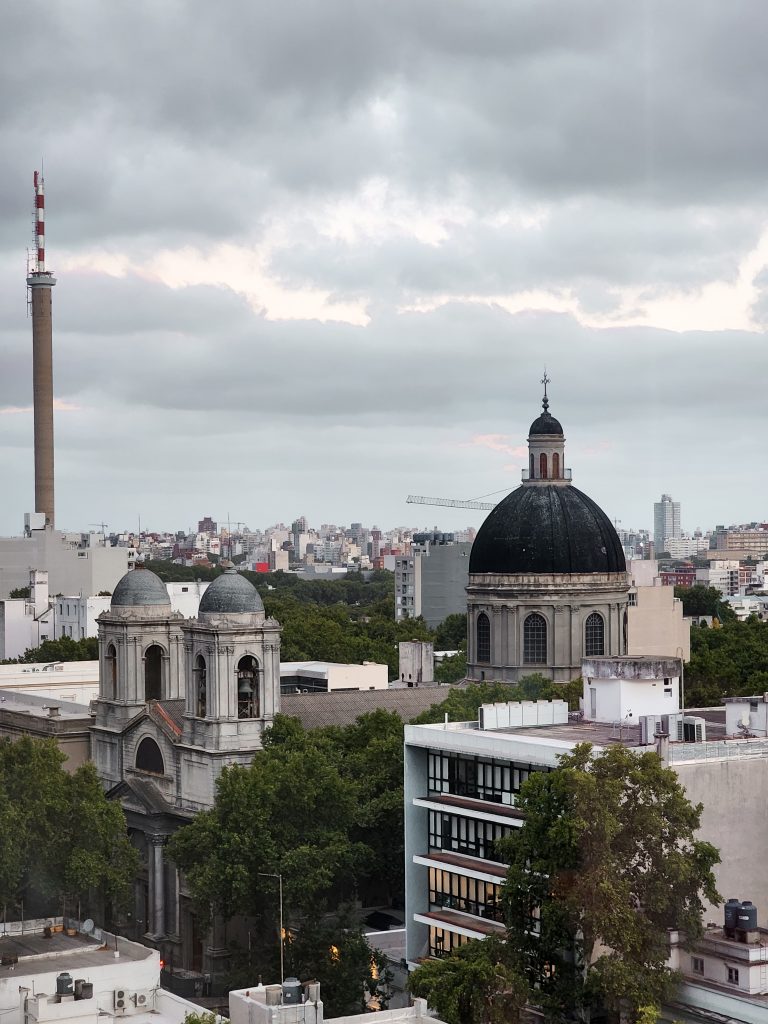
Morning: Start your day by traveling to Colonia del Sacramento, a picturesque city located on the shores of the Rio de la Plata. Colonia is known for its well-preserved colonial architecture and is a designated UNESCO World Heritage site. The journey from Montevideo to Colonia takes about 2-3 hours by bus or car, offering scenic views of the Uruguayan countryside along the way.
Day: Upon arrival in Colonia, begin your exploration of the city’s charming cobbled streets and colonial architecture. Wander through the historic quarter, known as the Barrio Histórico, where you’ll find colorful colonial buildings, quaint cafes, and artisan shops. Be sure to visit the lighthouse, or Faro de Colonia, which offers panoramic views of the city and the river.
Evening: As the sun begins to set, head to the waterfront to relax and enjoy the stunning views. Colonia’s waterfront promenade, the Rambla, is the perfect spot to unwind and watch the sunset over the Rio de la Plata. Consider having dinner at one of the many restaurants along the waterfront, where you can savor delicious Uruguayan cuisine while taking in the scenic surroundings.
In Montevideo, you can purchase bus tickets to Colonia del Sacramento from several locations, including:
Tres Cruces Terminal: This is the main bus terminal in Montevideo, located at the intersection of Avenida Italia and Bulevar Artigas. You’ll find numerous bus companies operating from here, offering services to various destinations across Uruguay, including Colonia del Sacramento.
Bus Company Offices: Many bus companies have their own ticket offices scattered throughout Montevideo. You can visit these offices to purchase tickets directly from the company operating the route to Colonia del Sacramento.
Online Booking Platforms: Several online platforms allow you to book bus tickets in advance. Websites such as Andesmar, COT, and Copsa offer online booking services for bus tickets to Colonia del Sacramento. Simply visit their websites, select your desired departure date and time, and purchase your tickets online.
Travel Agencies: You can also buy bus tickets to Colonia del Sacramento from various travel agencies located in Montevideo. These agencies often provide additional services such as itinerary planning and assistance with transportation arrangements.
When purchasing your bus ticket, make sure to check the departure times, duration of the journey, and amenities provided by the bus company to ensure a comfortable travel experience.

Morning: Begin your day by traveling to Punta del Este, Uruguay’s renowned beach resort town. Located about two hours east of Montevideo, Punta del Este is known for its glamorous beaches, upscale resorts, and vibrant nightlife. Whether you’re looking to relax on the sandy shores or dive into the town’s cultural scene, Punta del Este has something for everyone.
Afternoon: Upon arrival, spend your afternoon soaking up the sun on one of Punta del Este’s beautiful beaches. Playa Brava and Playa Mansa are two popular options, each offering stunning views and crystal-clear waters. If you’re in the mood for some shopping or art exploration, head to Gorlero Avenue, where you’ll find a variety of shops, galleries, and cafes.
Evening: As the day winds down, treat yourself to a delicious dinner at one of Punta del Este’s many restaurants. The town is known for its excellent seafood dishes, so be sure to try the local specialties. After dinner, take a leisurely stroll along the waterfront promenade, La Rambla, and enjoy the stunning views of the Atlantic Ocean before heading back to your accommodation.
Same as above. I went to COT in person and only had to wait 20 minutes for the next bus.
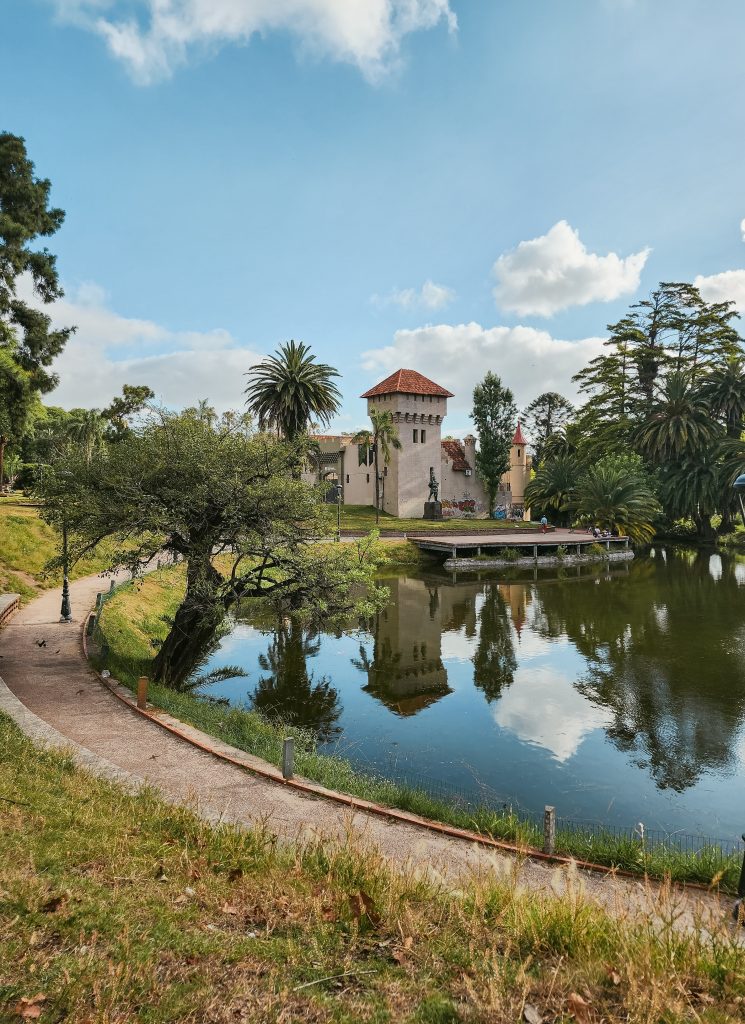
Morning: Start your day by visiting the iconic La Mano sculpture on Brava Beach, hopefully not many people for your photos in the am. Created by Chilean artist Mario Irarrázabal, this sculpture of a hand emerging from the sand has become a symbol of Punta del Este. Take some time to admire the sculpture and enjoy the beautiful views of the beach and the Atlantic Ocean.
Afternoon: After visiting La Mano, head to Casapueblo, a unique building and art gallery created by artist Carlos Páez Vilaró. Located in the nearby town of Punta Ballena, Casapueblo is a sprawling white-washed structure that resembles a Mediterranean villa. Explore the art gallery, which showcases Vilaró’s paintings, sculptures, and ceramics, and learn about the artist’s life and work.
Evening: In the evening, you can choose to either return to Montevideo for your departure or extend your stay in Uruguay. If you have time, consider exploring some beach towns further up the coast like Cabo Polonio or Punta del Diablo. You can even go on a mini road trip as both are slightly remote and picturesque coastal villages in Uruguay, known for their pristine beaches, shifting dunes, and rustic charm.
To extend your stay in both places or turn this 5 days in Uruguay itinerary into one week, you can book accommodation in one of the village’s unique and eco-friendly lodges or hostels, allowing you to immerse yourself in the peaceful and unspoiled natural surroundings for a few more days.
This itinerary offers a mix of cultural experiences, natural beauty, and relaxation, giving you a taste of Uruguay’s diverse attractions. Whether you’re interested in art, history, or simply soaking up the sun on the beach, Uruguay has something for everyone.
If diy not your style, recommend the tours below from a trusted get your guide.
There are 2 most common ways: 1. Ferry across from Buenos Aires to Colonia del Sacramento, a UNESCO World Heritage site, offers a glimpse into Uruguay’s colonial past with its cobbled streets and well-preserved architecture.
2. Fly into Montevideo. My initial plan was to take the ferry, even bought the tickets but I had to change that plan in the end because of Brazil! They were set on Australians needing a visa after Jan 10th so that meant I had to hurry up and get to Brazil before then as I didn’t want to apply for a visa etc But as you would know they pulled back on that decision last minute to April. Anyway, long story short, I flew to Montevideo.
Its capital, Montevideo, is a vibrant mix of old-world charm and modernity, with its historic Ciudad Vieja and bustling markets.
After that, I spent some time in Punta Del Este, known for its glamorous beaches and vibrant nightlife. But Uruguay isn’t just about cities and beaches; it also boasts stunning natural landscapes, such as the picturesque countryside and the rugged beauty of Cabo Polonio.
Getting to Uruguay is relatively easy, as the country is well-connected by air, land, and sea. Here are some common ways to reach Uruguay:
- Carrasco International Airport (MVD) in Montevideo is the main international gateway to Uruguay. It receives flights from major cities in South America, North America, Europe, and other parts of the world.
- Laguna del Sauce International Airport (PDP) near Punta del Este also handles international flights, especially during the peak tourist season.
- From Argentina: Buses run regularly from Buenos Aires to Montevideo and other cities in Uruguay. There are also ferry services between Buenos Aires and Colonia del Sacramento.
- From Brazil: Buses operate from cities like Porto Alegre and São Paulo to Uruguay. You can also take a ferry from Porto Alegre to Montevideo.
- From other neighboring countries: Uruguay is connected by bus services to Paraguay and Chile.
- Ferries operate between Buenos Aires and Colonia del Sacramento, as well as between Buenos Aires and Montevideo. These are popular options for travelers looking for a scenic journey.
Once in Uruguay, domestic flights, buses, and rental cars are available for travel within the country.
View this post on Instagram A post shared by Solo Female Travel (@annasherchand)
In Uruguay, you can find a variety of accommodation options to suit different preferences and budgets. Here are some popular choices:
Montevideo: Uruguay’s capital city offers a range of accommodation options, from luxury hotels to budget-friendly hostels. The Ciudad Vieja (Old Town) and Pocitos neighborhoods are popular areas to stay, offering easy access to attractions, restaurants, and the waterfront. I stayed at Alma Historica Hotel which was right in town so easy to walk around.
Colonia del Sacramento: In this charming colonial town, you’ll find a variety of boutique hotels, guesthouses, and hostels. The Barrio Histórico (Historic Quarter) is a popular area to stay, with its cobblestone streets and colonial architecture. Here are some suggestions for accommodations in Colonia del Sacramento.
Punta del Este: This glamorous beach resort town is known for its upscale hotels, luxury resorts, and beachfront apartments. The Playa Brava and Playa Mansa areas are popular among tourists, offering stunning views and easy access to the beach. Here are some suggestions for accommodations in Punta Del Este .
Cabo Polonio: For a unique and off-the-grid experience, consider staying in Cabo Polonio. This remote village has limited accommodation options, including rustic lodges and hostels, offering a chance to disconnect and enjoy the natural beauty of the area. Here are some suggestions for accommodations in Cabo Polonio.
Punta del Diablo : Here are some suggestions for accommodations in Punta del Diablo
Piriápolis: This coastal town offers a mix of accommodation options, from beachfront hotels to vacation rentals. Piriápolis is known for its beautiful beaches, hiking trails, and historic attractions. Here are some suggestions for accommodations in Piriápolis .
Uruguay’s Interior: If you’re looking to explore Uruguay’s countryside and vineyards, consider staying at an estancia (ranch) or boutique hotel in the interior. These accommodations offer a peaceful retreat and the opportunity to experience Uruguay’s rural life.

In Uruguay, there are several traditional dishes and foods that you must try. Some of them that I recommend are
- Asado: Uruguayans take their grilling seriously, and asado is a must-try. It’s a traditional barbecue featuring various cuts of meat, including beef ribs, chorizo sausages, and morcilla (blood sausage).
- Chivito: This is a hearty sandwich made with thinly sliced steak, ham, cheese, lettuce, tomato, and mayonnaise, often served with a side of fries.
- Empanadas: These savory pastries are filled with a variety of ingredients such as beef, chicken, or cheese, and are perfect for a quick and tasty snack.
- Milanesa: Similar to a breaded cutlet, milanesa is usually made with beef or chicken and is often served with mashed potatoes or a salad.
In Uruguay, you can find a variety of traditional and popular drinks to try. Such as:
- Mate: This is a traditional South American drink made from dried yerba mate leaves. It’s typically served hot in a hollowed-out gourd (also called a mate) and sipped through a metal straw (bombilla).
- Tannat Wine: Uruguay is known for its production of Tannat wine, a bold and robust red wine. It pairs well with the country’s grilled meats and hearty dishes.
- Pisco: This is a type of brandy made from distilled grapes. It’s commonly used in cocktails or enjoyed on its own.
- Grappamiel: A traditional Uruguayan liqueur made from grappa (a grape-based pomace brandy) and honey. It’s often served as a digestif.
- Clara: A popular beer cocktail made with beer and lemon soda. It’s a refreshing drink, especially during the hot summer months.
The local currency in Uruguay is the Uruguayan peso, denoted by the symbol “$” or “UYU” to differentiate it from other pesos. The peso is further subdivided into 100 centésimos, although centésimos are no longer in circulation due to their minimal value.
Banknotes come in denominations of 20, 50, 100, 200, 500, 1000, and 2000 pesos, while coins are available in denominations of 1, 2, 5, 10, and 50 pesos. It’s advisable to have a mix of cash and credit/debit cards when traveling in Uruguay, as not all places accept cards, especially in smaller towns or rural areas.
Out of all the countries I solo traveled to in Latin America, Uruguay is probably one of the safest countries I visited. It has a relatively low crime rate compared to other Latin American countries, and violent crime against tourists is rare. However, as with any destination, it’s important to take common-sense precautions to ensure your safety:
- Stay in well-lit and populated areas: Avoid walking alone in poorly lit or deserted areas, especially at night.
- Use reputable transportation: Use registered taxis or rideshare services rather than accepting rides from strangers.
- Be aware of your surroundings: Keep an eye on your belongings and be cautious of your surroundings, especially in crowded or touristy areas where pickpocketing can occur.
- Respect local customs: Dress modestly and respectfully, especially when visiting religious sites or rural areas.
- Stay connected: Keep a charged phone with you and stay in touch with friends or family members, especially if you’re exploring off the beaten path.
Let me know in the comments :
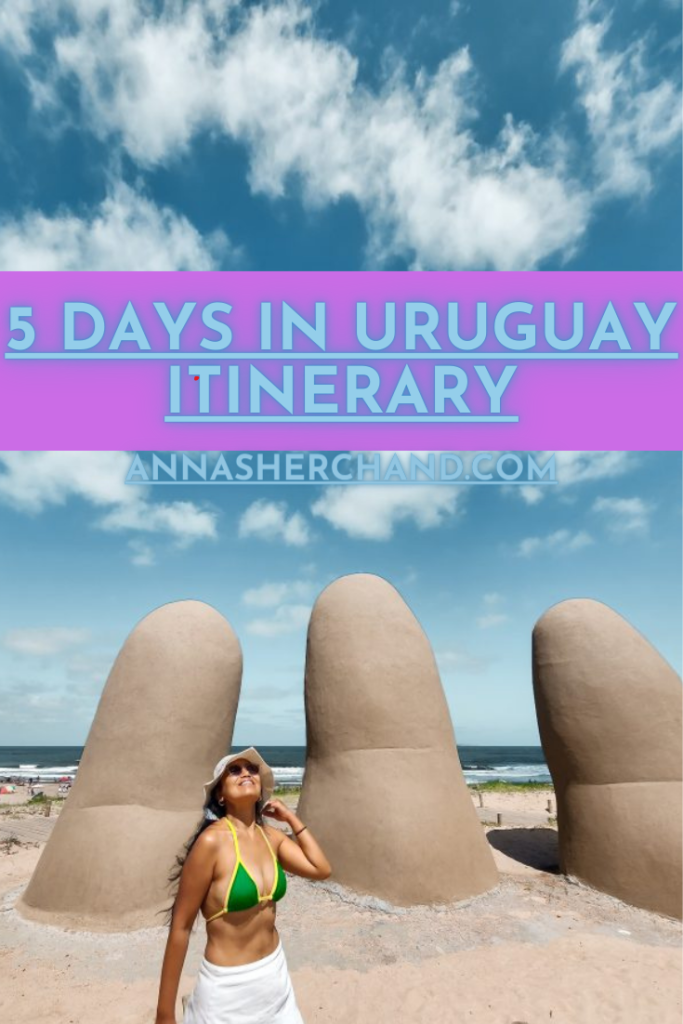
If you have any questions about these 5 days in Uruguay itinerary Solo female travel to Georgetown Guyana Backpacking one month in Central America itinerary Solo trip to Peru One month itinerary Solo female travel Colombia 7 days backpacking in Ecuador itinerary 5 days in Oaxaca itinerary 2 days in Mexico City itinerary 7 Days Itinerary in Georgia 4 Days in Azerbaijan Itinerary Best places to visit from Split 2 days in Split, Croatia Solo traveling to Mostar Solo female travel to Kotor Solo female travel to Budva Solo female travel Albania Warsaw by Train covers warsaw travel tips Check out One day in Luxembourg , western Europe Day trip from Zurich to Liechtenstein Travel tips to South America Fiji solo travel guide Australia east coast must-see Backpacking in Melbourne, Australia Digital nomad guide to Melbourne 14 best area to stay in Melbourne CBD Master Sydney travel guide Solo travel guide to Brisbane Exploring Adelaide the best way is a must-read Important travel tips for Uluru trip Melbourne day trips in winter Day Hikes in Melbourne Weekend getaway? Check out things to do in Ballarat Perth solo itinerary Top 5 must do in Darwin, Australia How to go from Dublin to Howth Solo female travel Romania Read a recent day trip to Zaanse Schans from Amsterdam How about a solo itinerary to Canberra – Australia’s capital city? Solo trip to Peru , travel tips to South America Check out the 7 days Hanoi travel guide. Book accommodation through trusted Booking.com I have detailed travel resources right here. Save money, learn what and how. If you like this article, follow my adventures on Instagram , Facebook , YouTube , Twitter , and Pinterest , or read about me travel blogger from Australia but most importantly sign up to my e-mail list to keep up with updates and travel posts!
- ← French Guiana Tour Day Trip
- Venezuela Itinerary And Travel Tips →
Leave a Reply Cancel reply
Your email address will not be published. Required fields are marked *
Heart for Wander
Uruguay Travel Guide: Best Things to See & Do
I wasn’t sure what to expect from my trip to Uruguay. To be honest, I hadn’t heard much about this country before my trip. None of my friends had been there. I couldn’t remember seeing any social media posts about it pop up on my feed. But after spending just four short days in this small South American country, Uruguay completely stole my heart! I think it’s a very underrated destination, which makes it even more charming and unique. So happy to share a few tips to help you plan your very own trip to Uruguay!
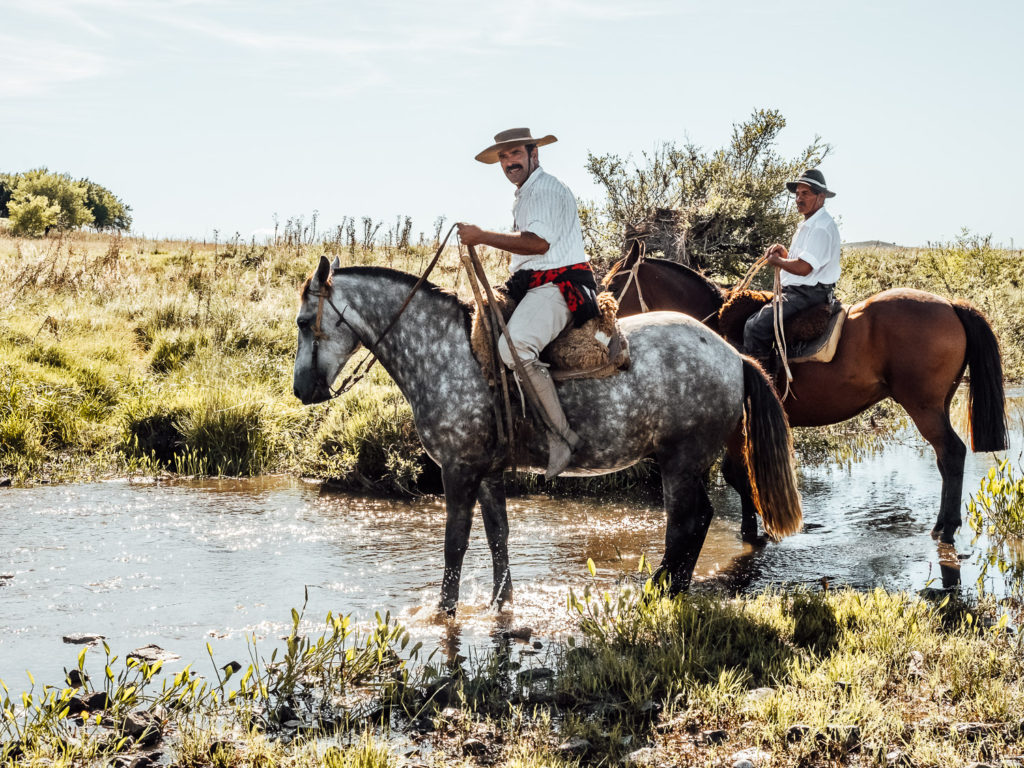
Things to know
Uruguay is considered one of the safest countries in South America. But you should still practice basic safety guidelines and be aware of your surroundings.
Montevideo is located just across the river from Buenos Aires. You can easily hop on a ferry and take a day trip to Argentina.
GETTING AROUND
Uruguay has an efficient bus system with reasonable fares. You can also take taxis or Ubers (both are affordable in Uruguay) or rent a car if you’re planning to do a road trip and see multiple towns.
BEST TIME TO VISIT
The climate in Uruguay is mild. It doesn’t really get cold there (just a bit chilly), and that makes Uruguay a great year-round travel destination. October through March are considered to be the best months for traveling there. However, January is the busiest month, so expect to see more people and higher prices.
English isn’t widely spoken in Uruguay, so it would be helpful to know a bit of Spanish or learn some basic phrases before the trip.
things to do on your trip to Uruguay
Visit montevideo.
If you’re flying to Uruguay, you will most likely spend at least a day or two in its capital Montevideo. It’s a great city with unique architecture, a laid-back vibe, amazing restaurants, coffee shops, and friendly people!
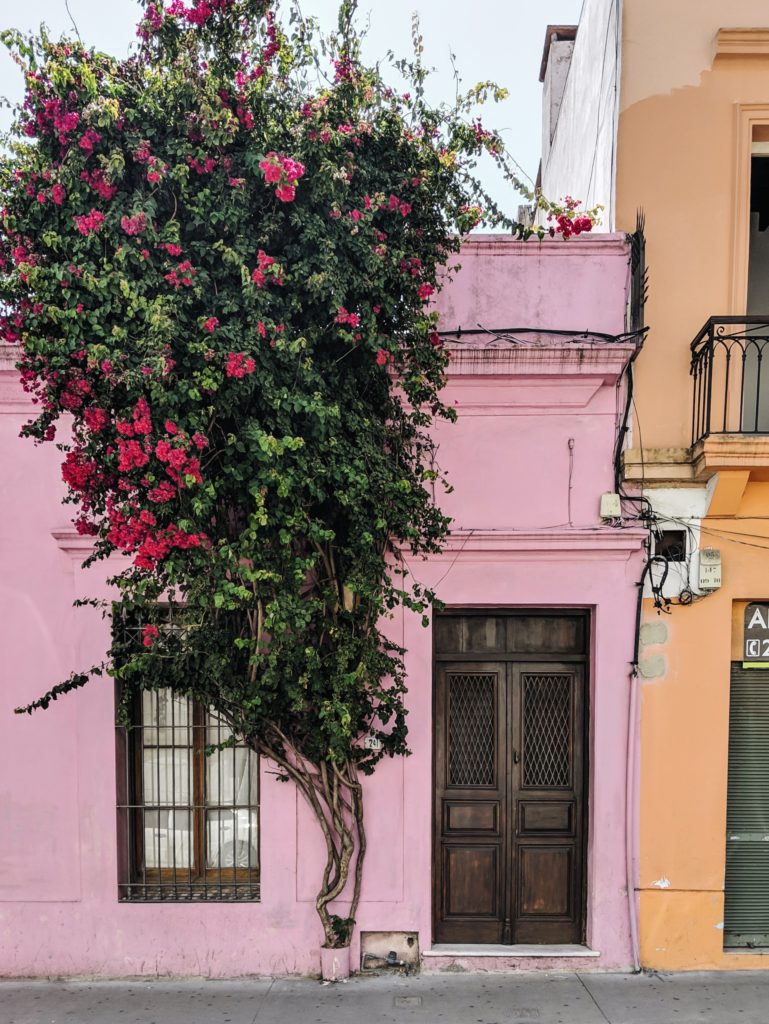
Here are some things you should do in Montevideo:
- Take a leisurely walk along La Rambla . This is where all the locals hang out. People come there to go for a run, cycle, drink mate or just meet up with friends. I suggest doing it at sunset for the best views.
- Visit Mercado del Puerto , a historic market located in Montevideo’s old port. There you’ll be able to taste lots of Uruguayan traditional dishes. Make sure to try their famous drink called Medio y Medio—a mix of dry white wine and sparkling wine.
- Take a guided tour of Solís Theatre , Montevideo’s historic theater. You’ll be astonished by the grandeur and beauty of this neoclassical building designed by the Italian architect Carlo Zucchi in the 19th century.
- Drink Yerba Mate , Uruguay’s national drink that’s been around for centuries. It’s a type of tea made from the Ilex paraguariensis plant. It’s caffeinated and will give you the same boost of energy as coffee would.
Montevideo’s food science is rich and diverse. There you’ll find traditional restaurants serving local cuisine, along with hip European-style coffee shops and cafes. Here are a few spots I recommend checking out:

where to eat in Montevideo
- Cafe La Farmacia – an antique pharmacy turned into a cafe in Montevideo’s old city.
- The Lab – a small chain of coffee shops in Montevideo with high-quality coffee.
- Jacinto – Lucía Soria’s restaurant was featured on Bourdain’s Parts Unknown: Uruguay. I loved the ambiance and interior of this place and the amazing food they served!
- Escaramuza Libros – I am always on the lookout for places that combine bookstores and cafes and I’m so glad there’s one in Montevideo too. It’s located in a beautiful historic building with high ceilings and big windows – a must-visit!
- Café Brasilera – the oldest cafe in Montevideo that’s been a popular place among writers, artists, and musicians for over 140 years.
- Piwo Helados – a lovely cafe and ice cream shop in Montevideo Old Town.

Visit Punta del Este
Punta del Este is often called “Miami of Uruguay” and “Monaco of South America.” It’s the most famous resort town in the country, and has beautiful beaches, luxurious hotels, a vibrant nightlife, and great restaurants. In the summer season (end of December – February) it’s where all the celebrities and businessmen come for vacation. The rest of the year, Punta del Este looks more like a ghost town.

Things to do and see in Punta del Este:
- Visit La Mano , the hand in the sand in Punta del Este. This modern sculpture is probably one of the most photographed spots in Uruguay. It’s quite a popular tourist spot, so arrive early in the morning if you want to have the sculpture to yourself.
- Experience Punta del Este’s food scene that’s mostly focused on seafood. Restaurants there can be quite pricey, but it’s totally worth it to splurge a bit!
- Check out Casa Pueblo , a building constructed by the Uruguayan artist Carlos Páez Vilaró. It’s worth a visit for anyone interested in beautiful and unique architecture.
- Go museum-hopping in Punta del Este. There is no shortage of amazing museums in Punta del Este: Museo del Mar, Museo Ralli, Maam, and Uriburu Museum of Contemporary Art. It’s up to you to decide which ones you want to visit. Or maybe you’ll have time for all of them!
- Spend a day at one of many beaches or go surfing!
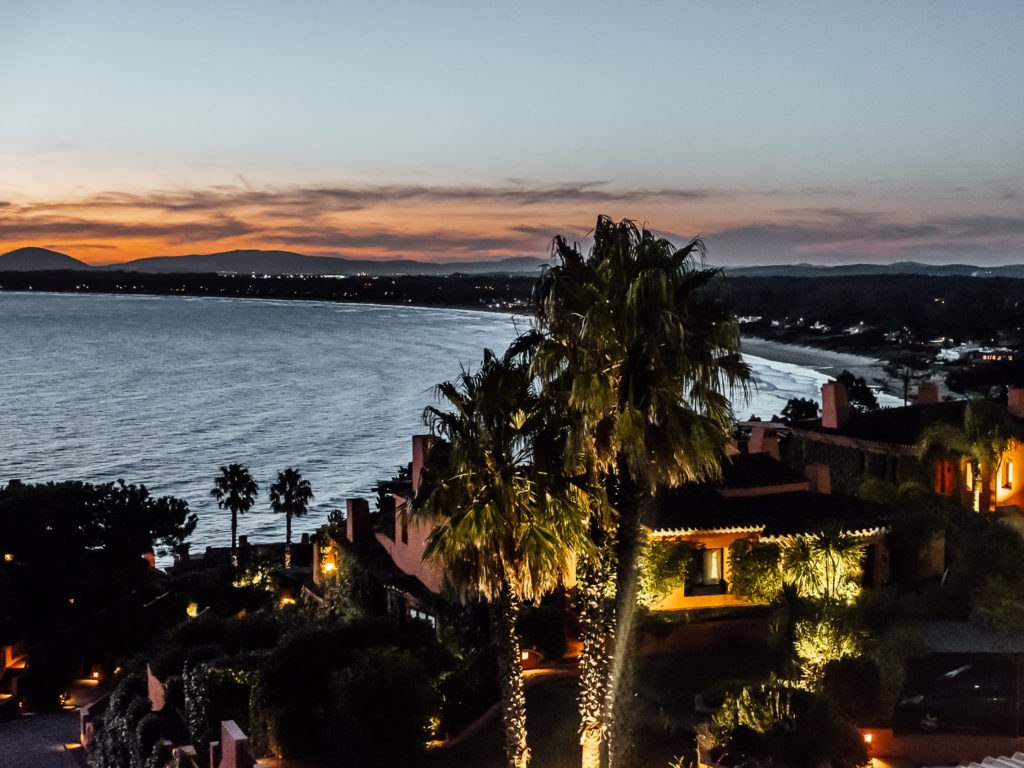
Visit Jose Ignacio
José Ignacio, a tourist hotspot that was once a sleepy fishing village, is located about 3 hours away from the capital Montevideo, and it’s a must-visit for anyone looking for a beautiful oceanside getaway. Jose Ignacio is a charming little town with beautiful sandy beaches, an iconic lighthouse, and high-end hotels and restaurants. Lots of celebrities come to Jose Ignacio, however, the town has managed to keep its laid-back vibe, and most of the year it’s pretty quiet and peaceful there.
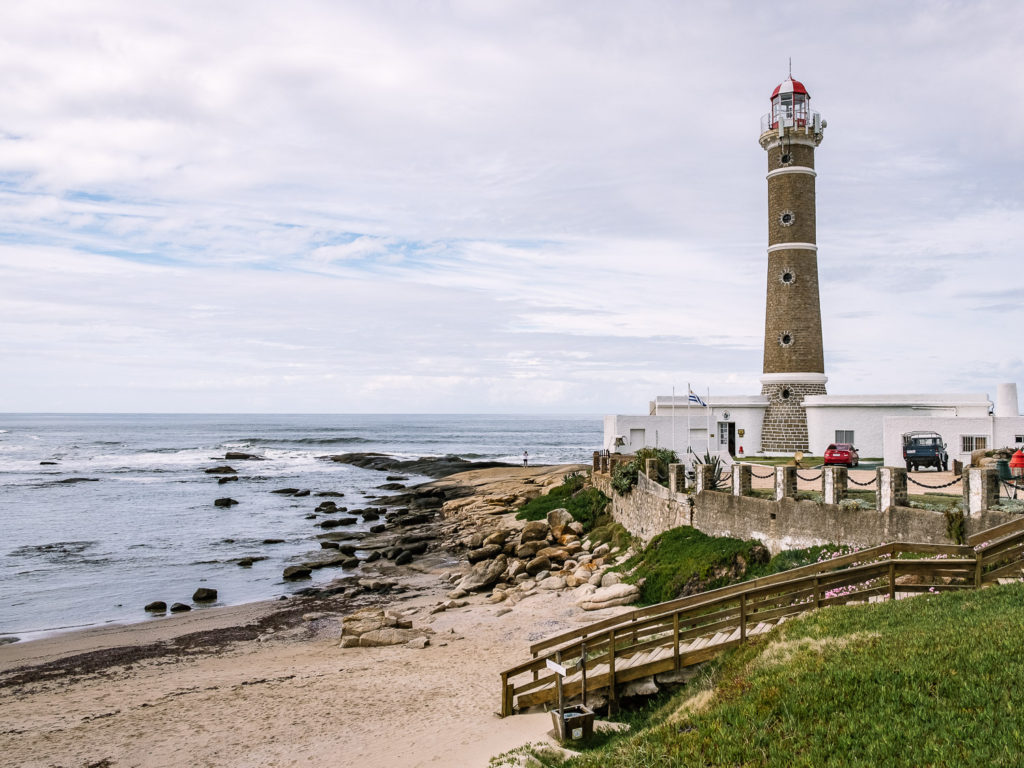
Visit a Vineyard
Uruguay is often overshadowed by its neighbors Argentina and Chile when it comes to wine, but in recent years, the wine industry of Uruguay has been getting more and more attention. Uruguay’s geographical location is perfect for wine production and Tannat, Uruguay’s signature grape, produces high-quality, bold red wines. There are about 250 small family-owned wineries, and many of them offer guided tours and wine tasting. Since most of the wine produced in the country is consumed locally, with only a tiny portion exported, one of the best ways to experience authentic Uruguayan wine is to travel there!
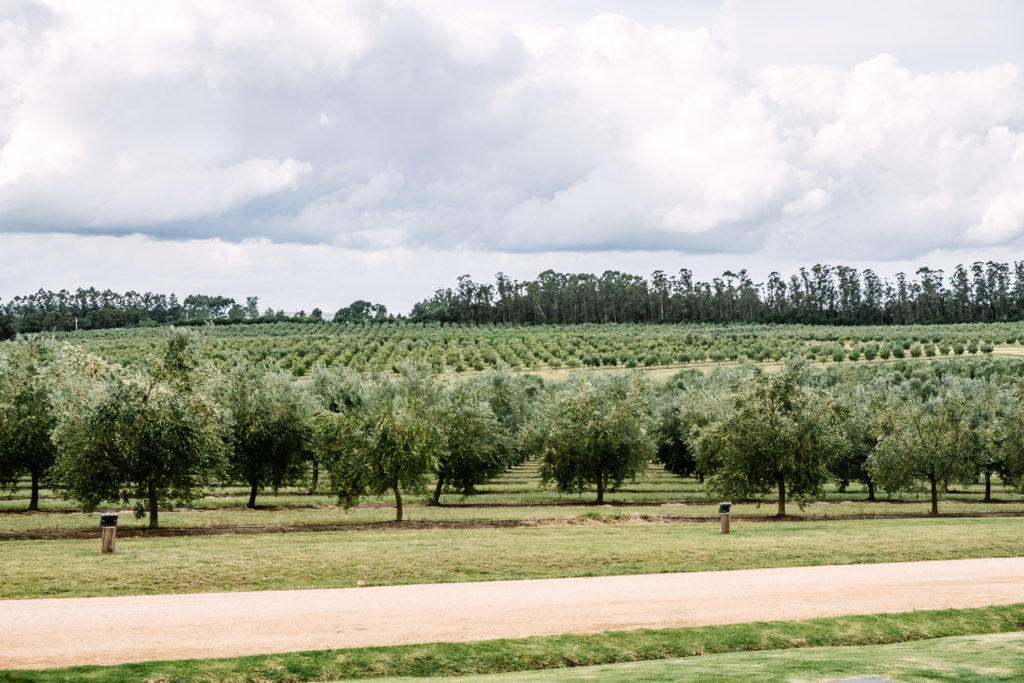
Go Horseback Riding
Horseback riding is an essential part of Uruguayan culture. Whether you know your way around horses pretty well or have absolutely zero experience, riding a horse in Uruguay is a must-do! There are plenty of full-day and half-day tours available for people with various levels of experience. You choose the tour that suits you best: riding around a vineyard and doing a wine tasting afterward, riding along one of Uruguay’s picturesque beaches, or across the rolling hills of Uruguay’s farmland. No matter which option you choose, the experience will be magical!
It was my first time ever riding a horse and I did it on a farm. Our guides were very helpful at explaining what to do. I had so much fun pretending to be a Gaucho for a little bit!
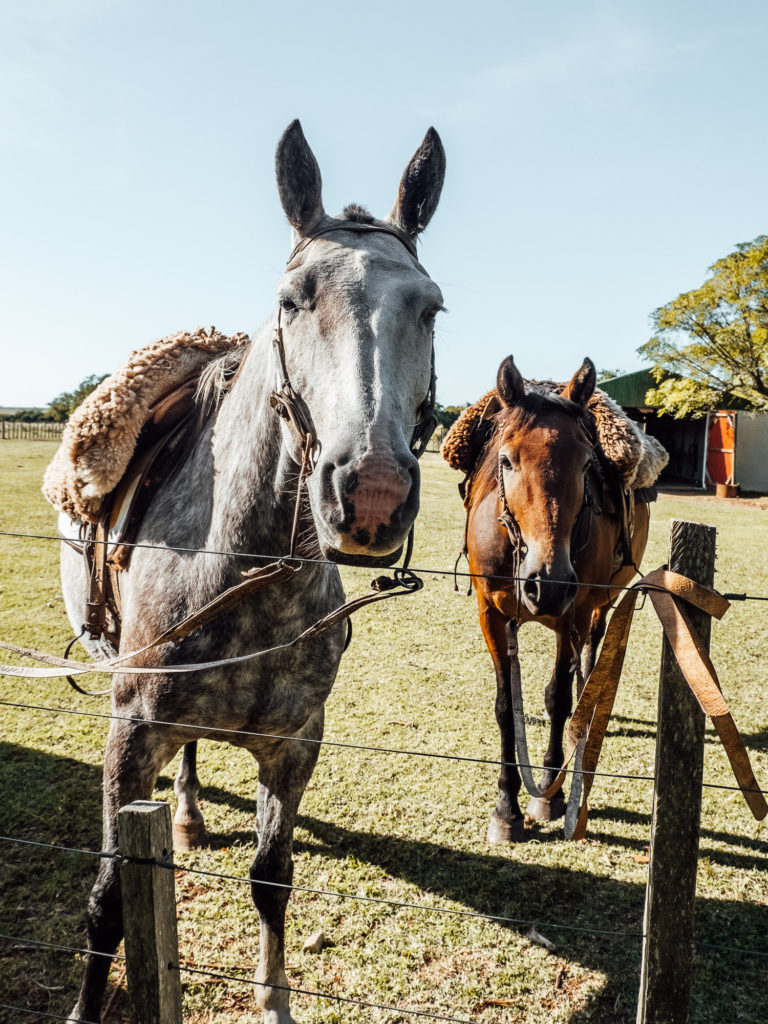
Experience a traditional Asado dinner
It would be a crime to visit Uruguay without experiencing a traditional Asado dinner. Asado is the Uruguayan version of barbecue, and it’s the most popular type of meal there. It consists of lots of meats and vegetables cooked on a special grill—a parrilla—over a wood fire. For locals, Asado is more than just food. It’s the tradition of getting together and sharing a meal with friends and family.

We had our special Asado dinner at the El Tapado farm in Tacuarembó, where Verde Farm’s beef comes from. All the beef we ate there was 100% grass-fed Verde beef raised in the timeless gaucho tradition, with respect for the land, the animals, and the environment.

This was possibly one of the best meals I’ve had in my entire life. It lasted for hours because, in Uruguay, you slow down to enjoy the simple things in life. We sat outside talking to the farm owners, drinking wine, listening to Uruguayan musicians, dancing, and, later, gazing at the stars. It was more than just a meal, it was an unforgettable experience.
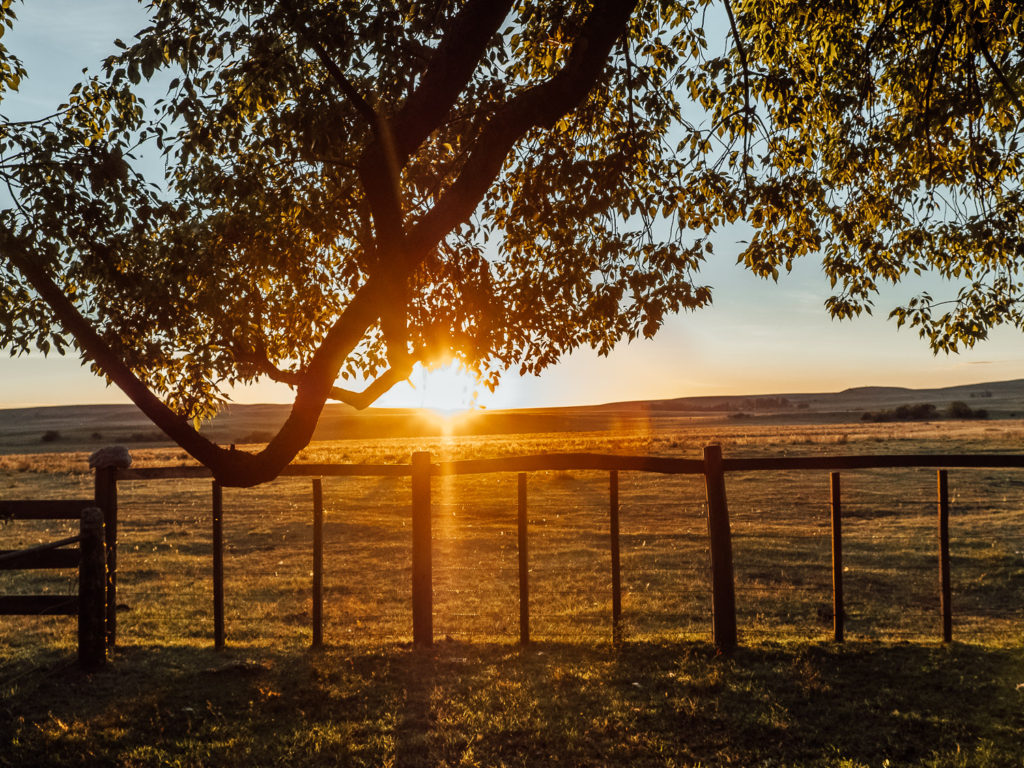
There is something special about Uruguay that makes you fall in love with this country. It’s not just the historical sights, amazing food, and landscapes, but also the people that welcome you with open arms and make you feel like a part of their family. Our trip to Uruguay was very short just—3 full days—but it felt like we were there for much longer. Time flows differently there, because the pace of life is much slower and you are never in a rush.
Uruguay is a small country with a very big heart, a place everyone should visit at least once in their life.
Similar Posts
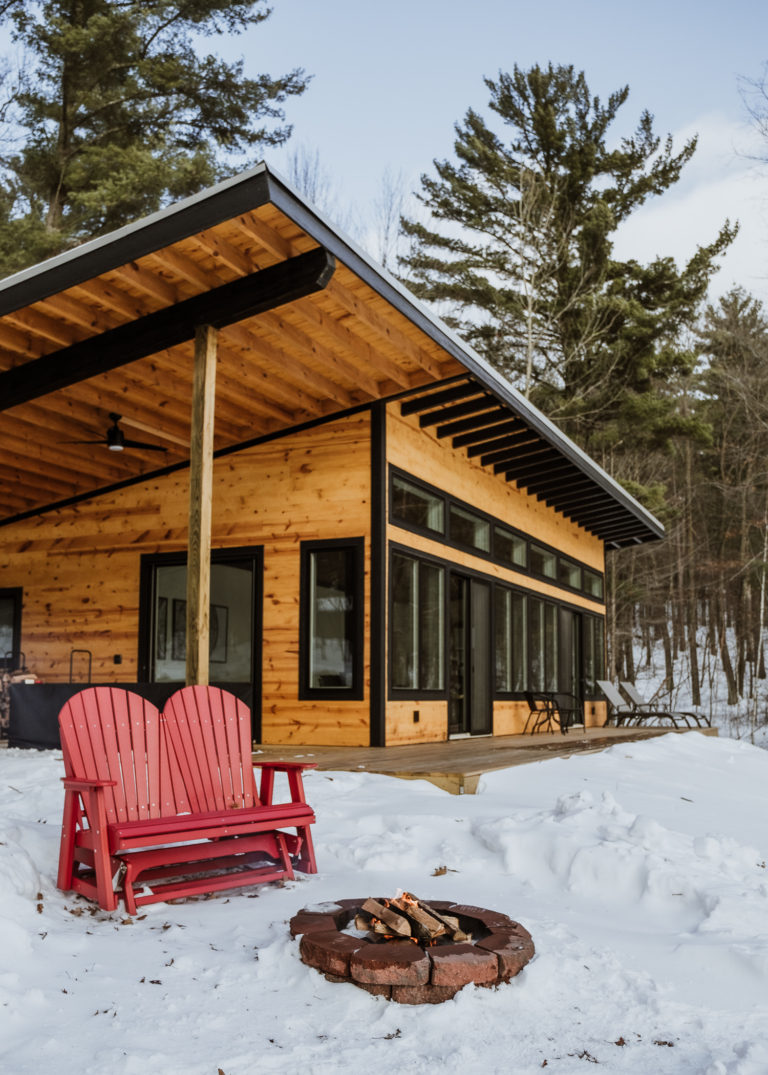
Hayward Haus: a Modern Cabin in Northern Wisconsin
Recently, we had the distinct pleasure of staying for several days at Hayward Haus, a beautiful cabin in northern Wisconsin. The cabin was completed in…
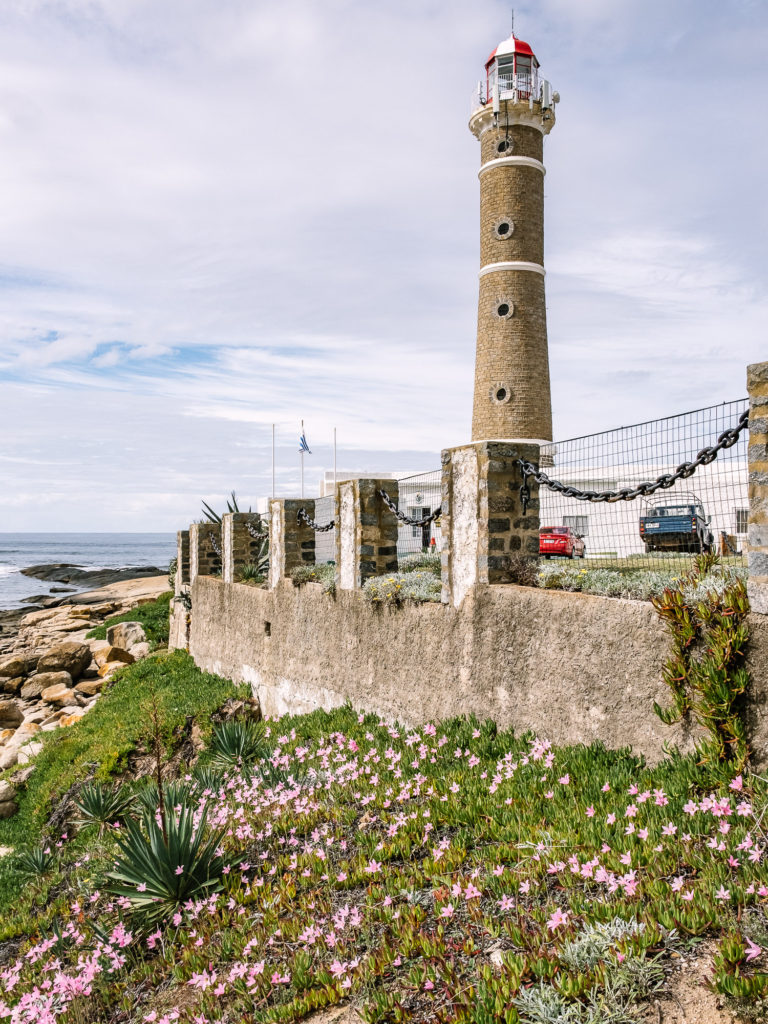
José Ignacio Travel Guide: Uruguay’s Secret Beach Town
José Ignacio, the former sleepy fishing village turned tourist hotspot on the Uruguayan Atlantic coast, is located about 3 hours from the capital Montevideo. This…
A Neighborhood Guide to Beacon Hill, Boston
Beacon Hill is one of the oldest and most picturesque neighborhoods in Boston. In addition to a rich history, it has beautiful architecture and lots…
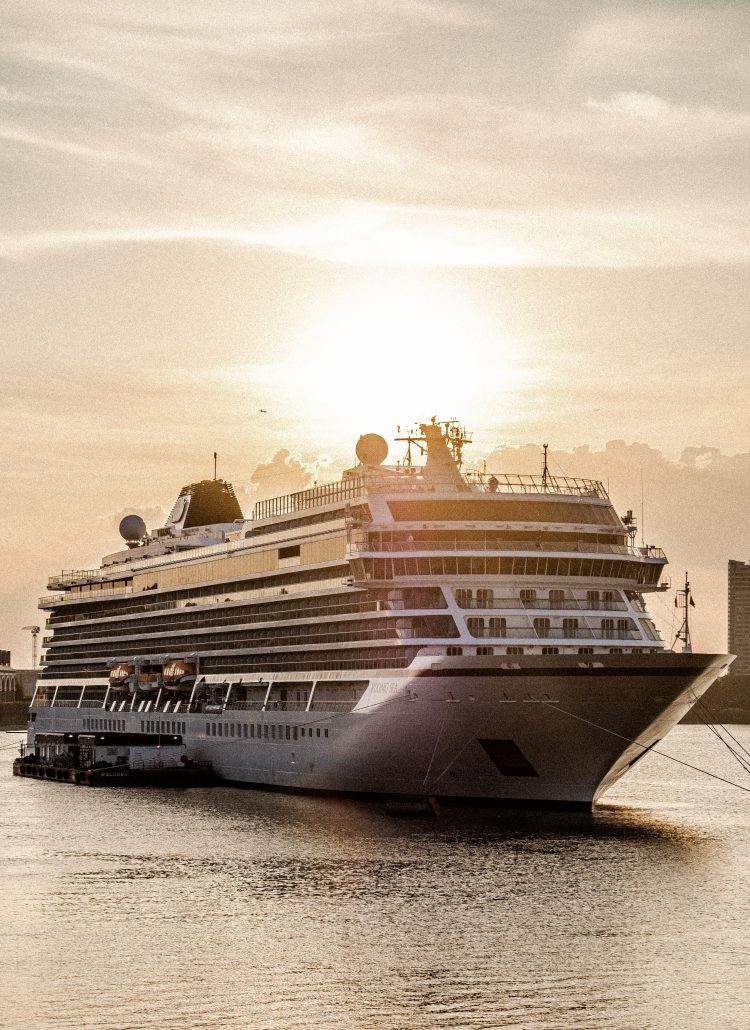
Viking Cruises – Into the Midnight Sun
Our cruise on the Viking Sea from London, England to Bergen, Norway was one of, if not the, best trips of our lives. My husband and I…
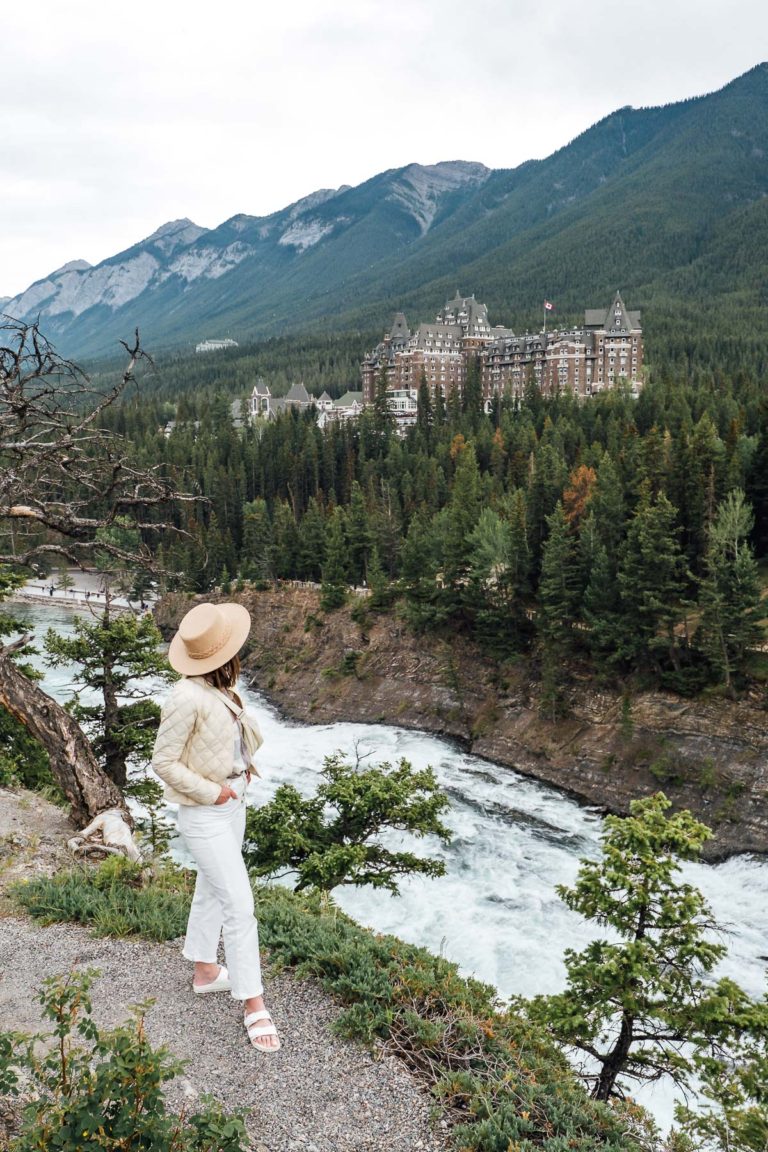
Fairmont Banff Springs: 6 Reasons to Stay in this Iconic Hotel on Your Banff National Park Trip
Fairmont Banff Springs is the most iconic hotel in Banff, and maybe even all of Canada! Often referred to as the “Castle in the Rockies,”…
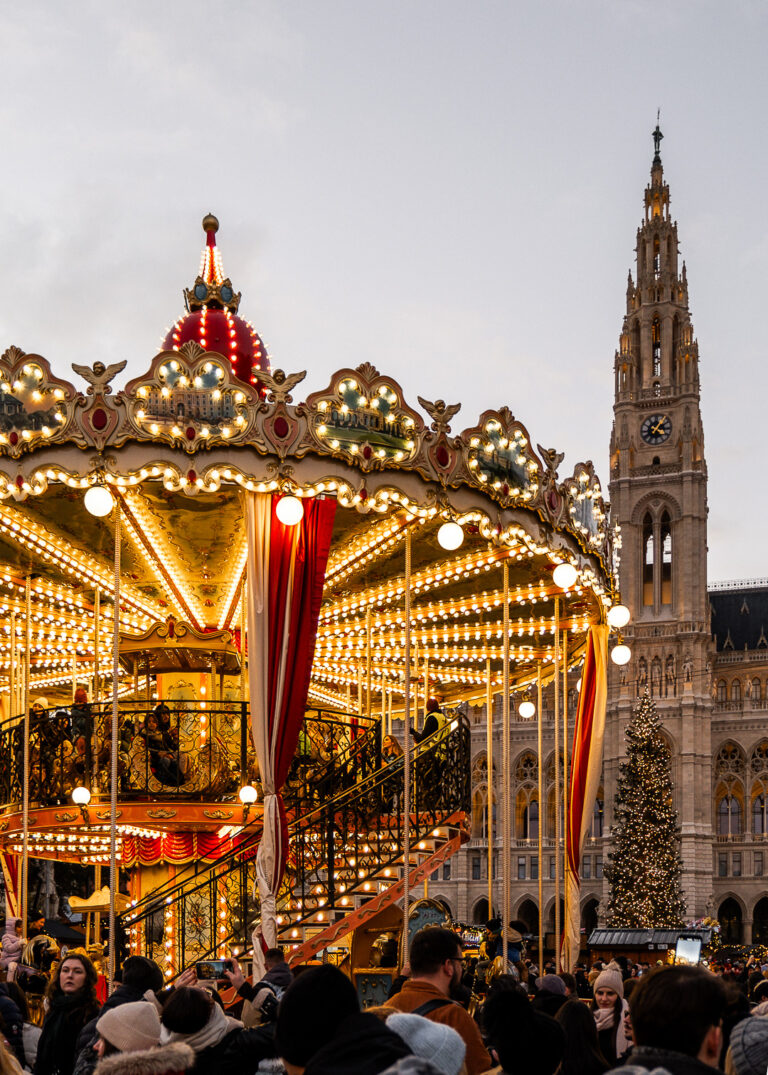
Danube Christmas Delights: Festive Adventure with Viking Cruises
We recently returned from a week-long journey on the Danube Christmas Delights river cruise with Viking Cruises. Our adventure began in Budapest, Hungary, and ended…
One Comment
- Pingback: José Ignacio Travel Guide: Visiting Uruguay's Secret Beach Town - Heart for Wander
Comments are closed.

1 Week in Uruguay Itinerary: Take This Awesome Coastal Road Trip in 2024
Planning a quick visit to Uruguay? This one week in Uruguay itinerary has you covered. Come discover one of South America’s most underrated destinations!
A tiny country of just 3.5 million people, Uruguay is often overlooked by travellers. But if you’re not adding an Uruguay itinerary to your South American adventure, you’re missing out .
Squeezed between Argentina and Brazil, its 660-kilometre-long Uruguay coast stretches alongside the Atlantic Ocean. It’s considered safe and has quite the progressive government .
It has all the energy and passion of Buenos Aires – just packed into a country far smaller than Argentina. It’s also an easy country to travel , and the best way to visit Uruguay is on a week-long coastal road trip .
Read on for the highlights of an Uruguay road trip that will take you from historical sites to heaving party cities to relaxed beach towns – all within a week.
This blog post may contain affiliate links, meaning if you book or buy something through one of these links, I may earn a small commission (at no extra cost to you).
What's in this article (Click to view)
Uruguay road trip itinerary
You’ll need at least one week in Uruguay to experience the highlights of the country and get the most out of this coastal road trip. How many days in Uruguay comes down to how much time you have – but a week is the minimum, I think.
Of course, more time to travel Uruguay means more time chilling out on the beaches and exploring the small towns and big cities, so you can extend the itinerary I’m outlining in this article.
If you do only have one week, a suggested Uruguay travel itinerary is:
- Days 1 & 2: Depart Buenos Aires, explore Colonia del Sacramento, overnight in Carmelo and then enjoy the Carmelo wineries
- Day 3: Drive to Montevideo and explore the city
- Days 4 & 5: Drive to Punta del Este, relax on the beaches
- Days 6 & 7: Drive to Punta del Diablo and chill out
- Day 8: Return to Colonia del Sacramento to get the ferry back to Buenos Aires
The Uruguay map below shows the route for this road trip.
How to get to Uruguay
This article assumes that you’re in Buenos Aires, Argentina, and looking to visit Uruguay from there.
If that’s the case, then the easiest way to get to Uruguay is by ferry from Buenos Aires . The daily ferries travel to Colonia del Sacramento, Montevideo and Punta del Este. It’s a short, comfortable trip and the ferries have food and drinks on board. The main ferry companies are Buquebus , Seacat and Colonia Express . Check each out to compare prices and schedules.
Some airlines do fly internationally into Uruguay’s capital, Montevideo, but most flights to Uruguay connect through Buenos Aires or São Paulo. Search for and compare flights to Uruguay .
Alternatively, you can cross into Uruguay by land from Argentina and Brazil at one of the many border crossings.
How to hire a car in Uruguay
The best way to do this Uruguay itinerary is to take a road trip . All the major car companies have offices in Montevideo or are a short walk from the ferry terminal in Colonia del Sacramento. Having your own car means you can see all the best places to visit in Uruguay at your own pace .
RENT A CAR IN URUGUAY
Most cars for rent will be manual (stick), but you can search around for an automatic.
Keep in mind that when driving in Uruguay, you need to drive with your headlights on at all times. Uruguayans drive on the right-hand side and of course seatbelts are mandatory at all times.
If you don’t want to drive, you can still follow this Uruguay itinerary on public transport. Bus travel in Uruguay is easy , with regular services between the major towns and cities.
When to visit Uruguay
The best time to visit Uruguay is between October and March , when the weather is warmer. However, summer brings throngs of tourists from Argentina, who mostly head directly to Punta del Este. The beaches are usually quieter between October and December (although of course that means the water is likely still chilly!).
We visited Uruguay over Christmas and the temperature was perfect – although we did have a couple of days of light rain.
Now that we’ve got a few of the logistics to plan your trip to Uruguay out of the way, let’s get stuck into the road trip itinerary!
Stop 1: Colonia del Sacramento
Only 50 kilometres from Buenos Aires by ferry, Colonia del Sacramento is a popular day trip destination from Argentina . It’s a UNESCO World Heritage site and the historical district is a lovely place to explore for an afternoon. On a clear day, you can see Buenos Aires’ skyline across the Río de la Plata.
Pick up your rental car here in Colonia. You’ll only need a small car as there’s no off-roading on this itinerary.
Things to do in Colonia del Sacramento
- Wander the Barrio Histórico’s cobblestoned streets and you’ll come across beautiful homes and colourful trees. You can see the gate and walls that were built in 1745, all still well preserved.
- Listen hard in Calle de los Suspiros , “the street of sighs” and learn about the many legends about how this street got its name.
- Climb El Faro , the lighthouse, for views over the city.
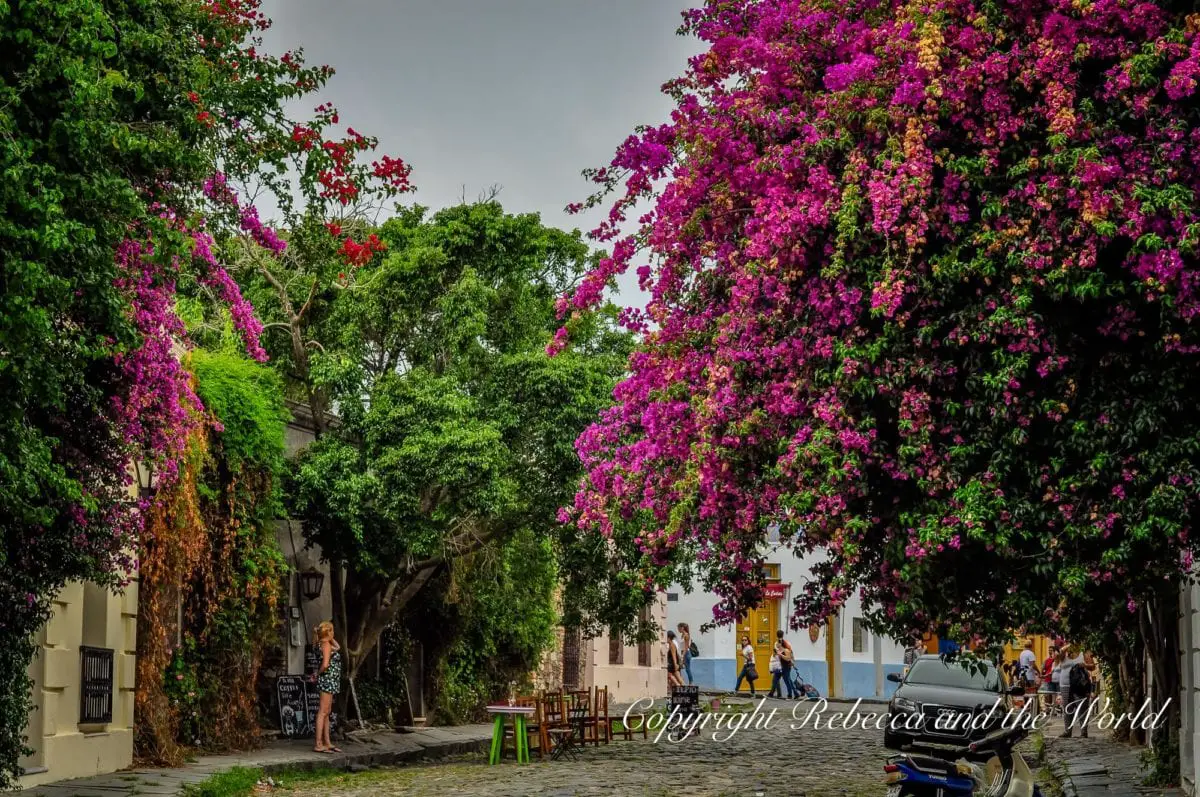
Where to stay in Colonia del Sacramento
I recommend spending a few hours in Colonia del Sacramento and then starting your road trip, but if you do want to stay the night, there are plenty of hotels in Colonia del Sacramento .
- The Radisson Colonia del Sacramento has beautiful views over the river, and has indoor and outdoor pools. It’s within walking distance of the historical centre. Check prices and book on Booking.com or Expedia
- Posada Boutique Las Terrazas Hotel has the cutest outdoor pool area. Rooms are on the small side but staff are friendly and helpful. Check prices and book on Booking.com or Expedia
- If you’re looking for a more affordable option, El Viajero Colonia Hostel and Suites has both private and dorm rooms. A huge buffet breakfast is served each morning. Check the latest prices and book on Booking.com | or Expedia
Stop 2: Carmelo
While not as well-known for wine as its neighbour, Uruguay is fast becoming a hub for wine lovers looking for less-visited vineyards. Carmelo is the perfect place to taste the heady Tannat varietal that the country produces. It’s a rustic, tranquil town with plenty of outdoor activities to keep you occupied.
After Colonia del Sacramento, take a little detour to Carmelo and spend a night or two here. Not many tourists have Carmelo on their list of places to visit in Uruguay, but they’re missing out!
Things to do in Carmelo
- Sample wine at a few of the local wineries. Almacen de la Capilla , Bodega Irurtia and El Legado all offer tours and tastings.
- Have lunch in the country-style home at Finca Narbona .
- Catch the sunset on the beach . Of course, this is a river, but the gentle waves will trick you into thinking you’re by the ocean.
- Get outdoors and go horseback riding through the countryside, or go fishing along the Río de la Plata.
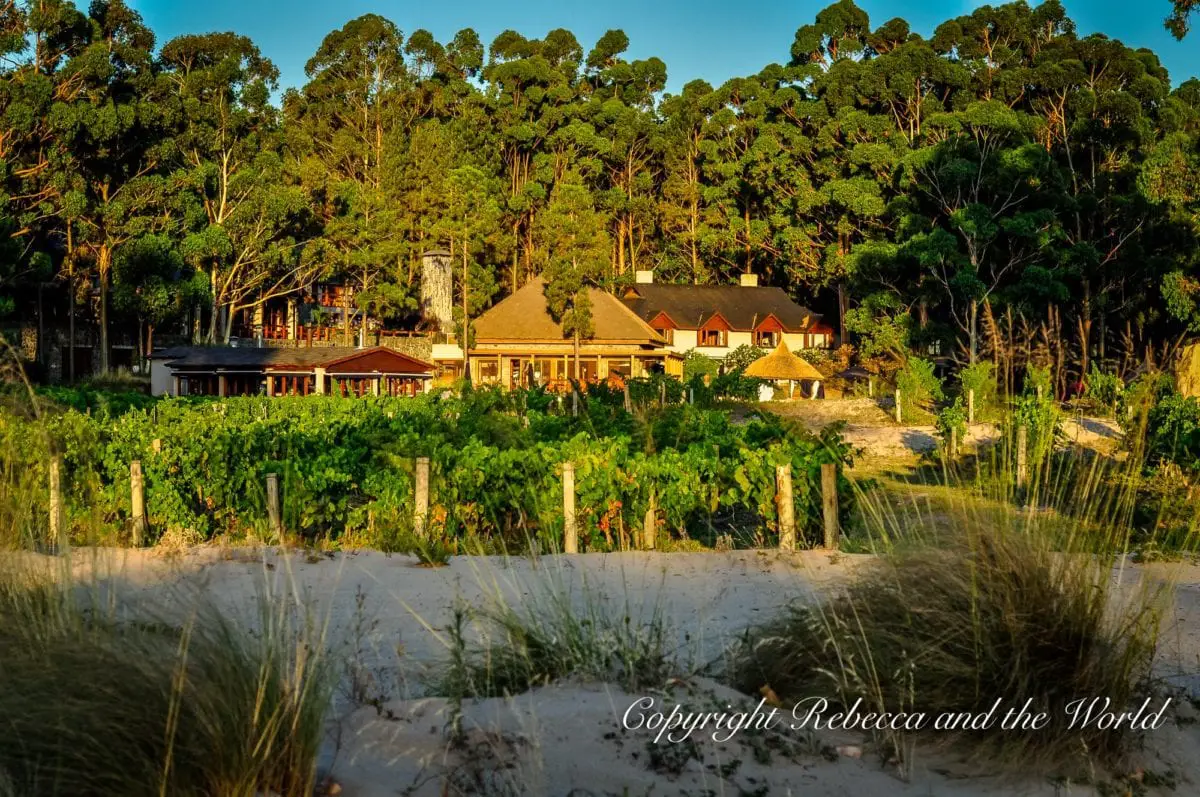
Where to stay in Carmelo
- We stayed at Carmelo Resort & Spa . The bungalows are huge, with enormous glass windows that overlook the vineyards outside. The spa is incredible, and the whole resort is tranquil. It’s the perfect place for an Uruguay vacation for couples. Check prices and book online at Booking.com or Expedia
- Located at the winery, the Narbona Wine Lodge , is rustic and spacious. There are sitting rooms with fireplaces and staff can arrange picnics by the river. Even if you don’t stay here, make sure to book a meal here! Check availability and book online at Booking.com or Expedia
Stop 3: Montevideo
Lying almost directly across the Río de la Plata from Buenos Aires in Argentina, Uruguay’s capital , Montevideo, is a fun city to visit. It’s like a smaller version of Buenos Aires , with the same passion and culture .
Things to do in Montevideo
- Explore the Ciudad Vieja (old town), especially the bustling Mercado del Puerto (Pérez Castellano) , the city’s old port market building. On weekends there’s a street market and a lively atmosphere. There are plenty of restaurants and the tell-tale smell of an asado (barbecue) underway.
- Take a tour of Montevideo with a guide who can share the history and culture of the city.
- Make sure you have a glass (or two) of medio y medio , a mix of sparkling and red or white wines – Uruguay’s version of Prosecco (it’s delicious!).
- Try yerba mate , a drink you’ll see everyone in Uruguay (and Argentina and Paraguay) sipping. This drink isn’t for everyone, but it’s a huge part of the cultural fabric of the country.
- On Sundays, head to Feria de Tristán Narvaja (Tristán Narvaja and Colonia, and the streets around) , a huge flea market.
- Plaza Independencia commemorates José Artigas, Uruguay’s national hero, with a huge statue and an underground mausoleum that holds Artigas’ remains.
- Wander along La Rambla , a fun spot on a Sunday when locals pack this coastal promenade.
- Museo de los Andes (Rincón 619) , a sombre museum about the 1972 Andean plane crash in which 29 Uruguayans died. If you’ve seen the movie Alive you’ll be familiar with this tragic story.
- Museo del Gaucho (Avenida 18 de Julio 998) is a museum that celebrates all things gaucho (cowboys). (Updated: The museum is currently closed for renovations)
- Learn how to make delicious alfajores – cookies sandwiched together with dulce de leche.
- Have a night out on the town with this tango show and dinner .
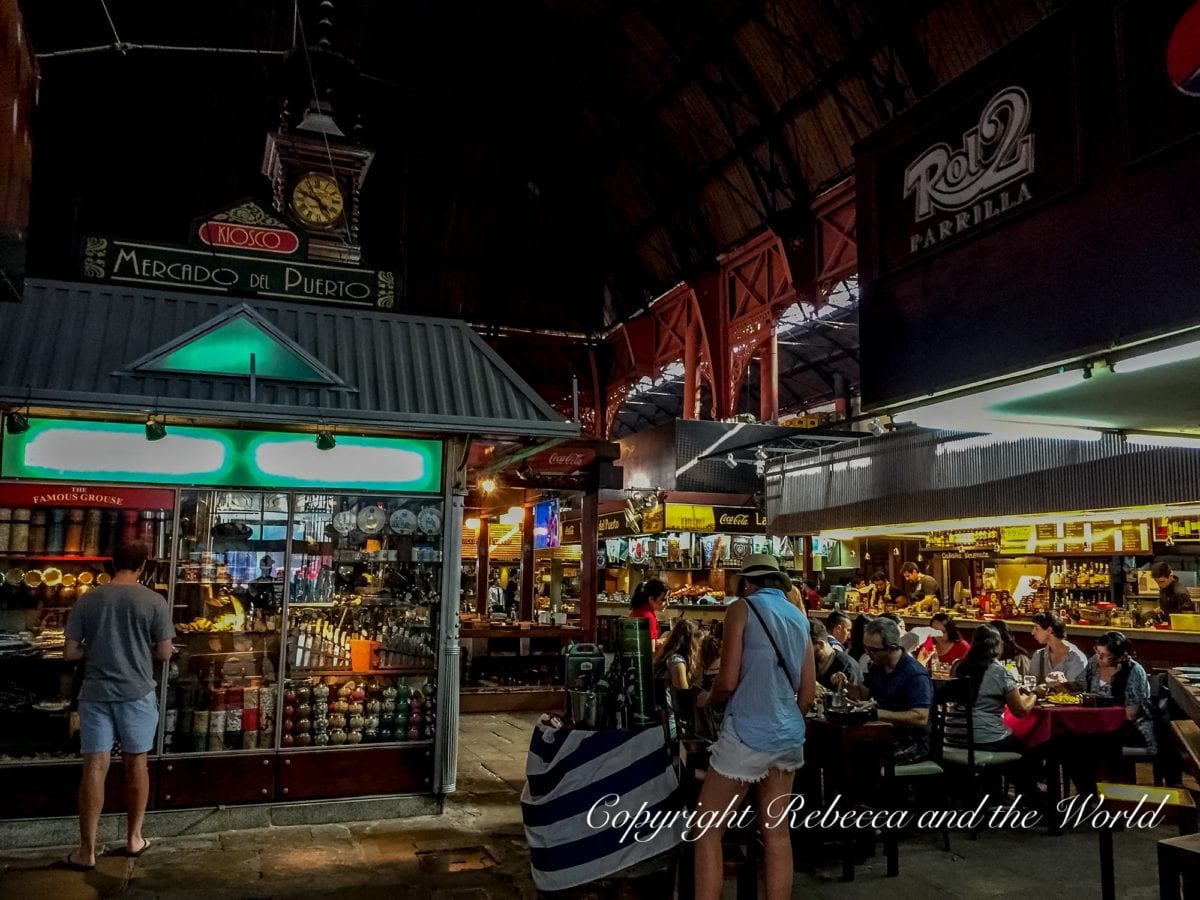
Where to stay in Montevideo
- Casa Roberto is delightfully decorated. Some rooms have a terrace or patio and it’s conveniently located. Check availability and book online at Expedia | Read reviews on TripAdvisor
- Located right in the historic part of the city, the rooms at Alma Histórica Boutique Hotel have old-world charm. Check availability and book online at Booking.com or Expedia
Stop 4: Punta del Este
Known as the “St Tropez of Latin America”, Punta del Este is where the Argentine elite go to see and be seen .
During summer, the beaches of “Punta” swarm with tourists and prices go up accordingly. It’s got a great party scene and lots of high-end dining choices.
You can’t visit Uruguay without stopping here. Although, if your idea of fun is more about quieter beaches than parties, then you can skip Punta del Este.
Things to do in Punta del Este
- Hit the beach . Punta has kilometres and kilometres of beautiful sand. Playa Brava and Playa Mansa are the two main beaches in Punta del Este, but you can check out other smaller beaches like La Barra de Maldonado .
- Pose in front of La Mano en la Arena (“the hand in the sand”), a sculpture by Chilean artist Mario Irarrazabal. It stands as a warning swimmers of the dangers of the ocean.
- Marvel at Casapueblo , a gleaming white building that looks like it belongs in Santorini. Designed by Uruguayan artist Carlos Páez Vilaró, it’s located on the side of a cliff in Punta Ballena. It’s one of the coolest things to see in Uruguay.
- Take a day trip to José Ignacio , a stylish beach town. Have lunch at Parador La Huella where all the beautiful people hang out. The restaurant is right on the beach and serves a lot of fresh seafood.
- Visit the world’s second-largest southern sea lion colony on Isla de Lobos , about 10 kilometres offshore.
- This full-day tour of Punta del Este covers the highlights of the city, including La Mano en La Arena and Casapueblo.
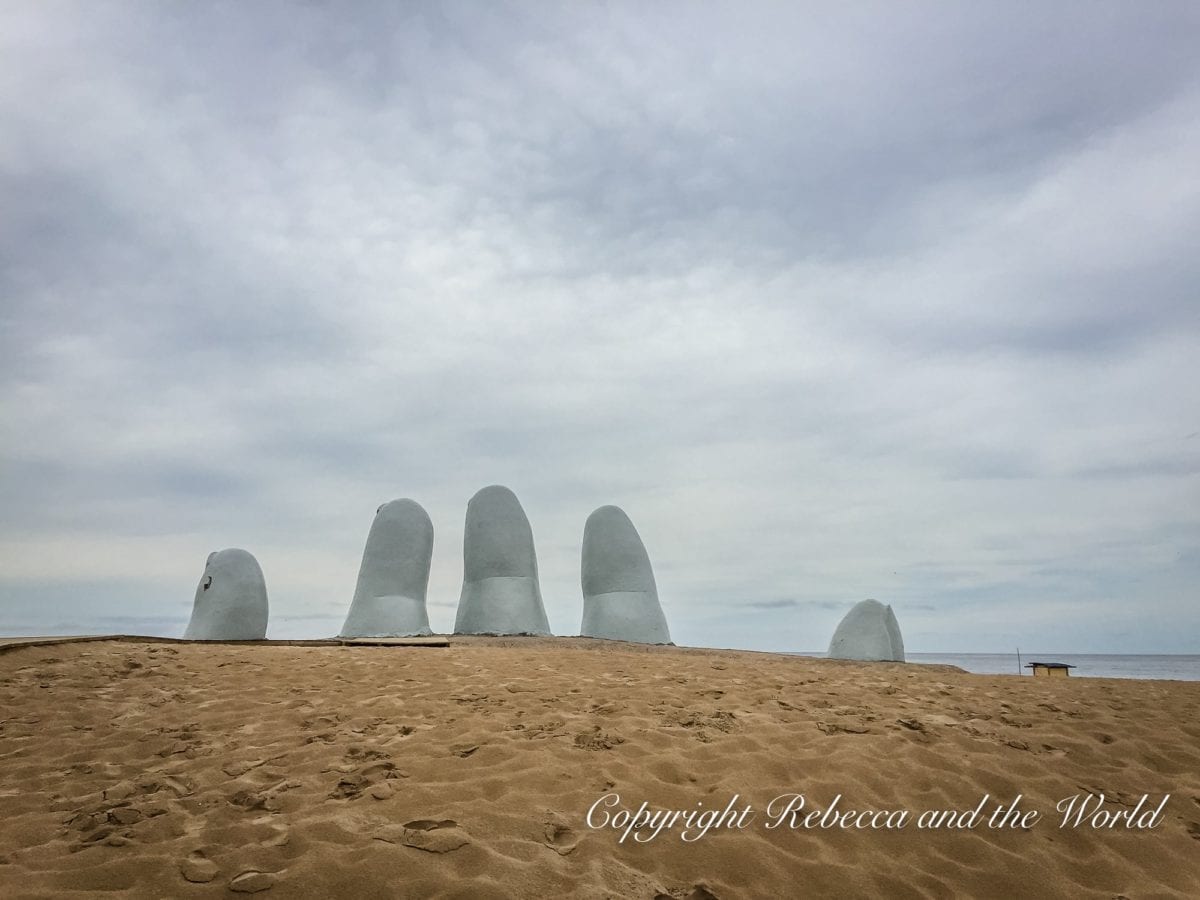
Where to stay in Punta del Este
- Minimalist and modern in design, The Grand Hotel is right on Brava Beach. Some rooms have ocean views. Check availability and book online with Booking.com or Expedia
- We loved the nautical-themed rooms at Hotel Atlantico . This cute, boutique hotel has a wonderful pool and outdoor area perfect for sunbaking. Check availability and book online with Booking.com or Expedia
Stop 5: Punta del Diablo
Only 45 minutes from the Brazilian border, this former fishing village is now one of Uruguay’s hottest destinations . It’s not big and flashy like Punta del Este and that’s what draws people here.
Strolling along the streets in the late afternoon, sipping a beer over a plate of fresh seafood and listening to the waves crash on the beach are what makes this a heavenly coastal escape .
Things to do in Punta del Diablo
- Hang out on the beach – you’re here to relax.
- Take a day trip to Cabo Polonio and really get off the grid. This small town can only be reached by huge trucks that cut across the sand dunes. There are no paved roads and little electricity. If you have more than one week in Uruguay, consider adding a day or two on to your itinerary and stay here. (If you’re not doing a road trip in Uruguay, then consider this day trip to Cabo Polonio from Punta del Este .)
- Go hiking in Santa Teresa National Park . It’s free to enter, and pathways lead through the forest and to Uruguay beaches on the coastal side of the park.
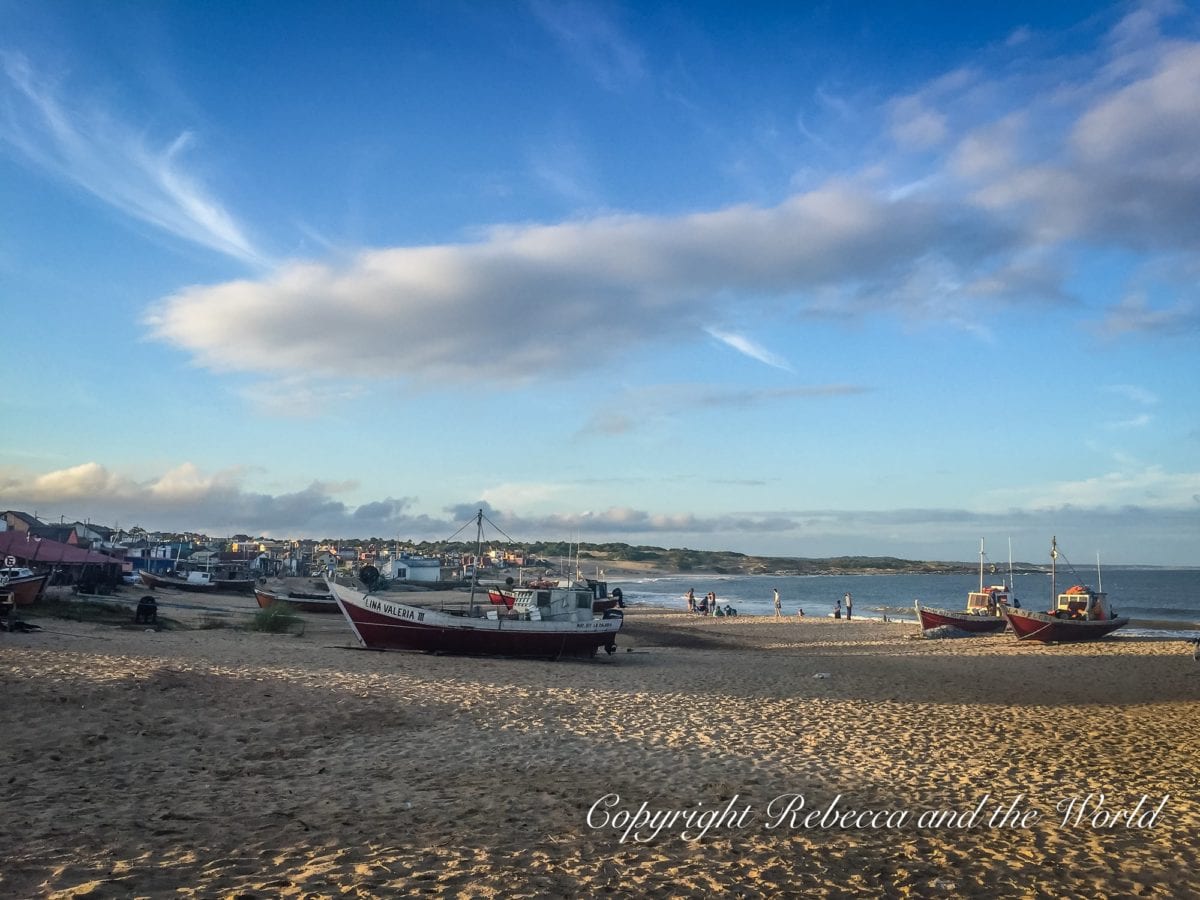
Where to stay in Punta del Diablo
- Located right on the beach, at Remanso del Diablo you can sit in your in-room private hot tub while watching the waves crash onto the beach. We stayed here on our trip and loved its casual vibe. Check availability and book online with Booking.com
- El Diablo y El Mar is a small posada with only a few rooms, set just a few hundred metres from the beach. Check availability and book online with Booking.com or Expedia
Return to Buenos Aires
To end your Uruguay road trip, make the 6.5-hour journey back to Colonia del Sacramento inland (via Ruta 13 and then Ruta 8).
Or, arrange to drop your rental car in Montevideo (there’s usually an additional fee to do so).
From either city you can catch a return ferry back to Buenos Aires.
I hope you have a great Uruguay road trip ! Enjoy the country’s beautiful coastline.
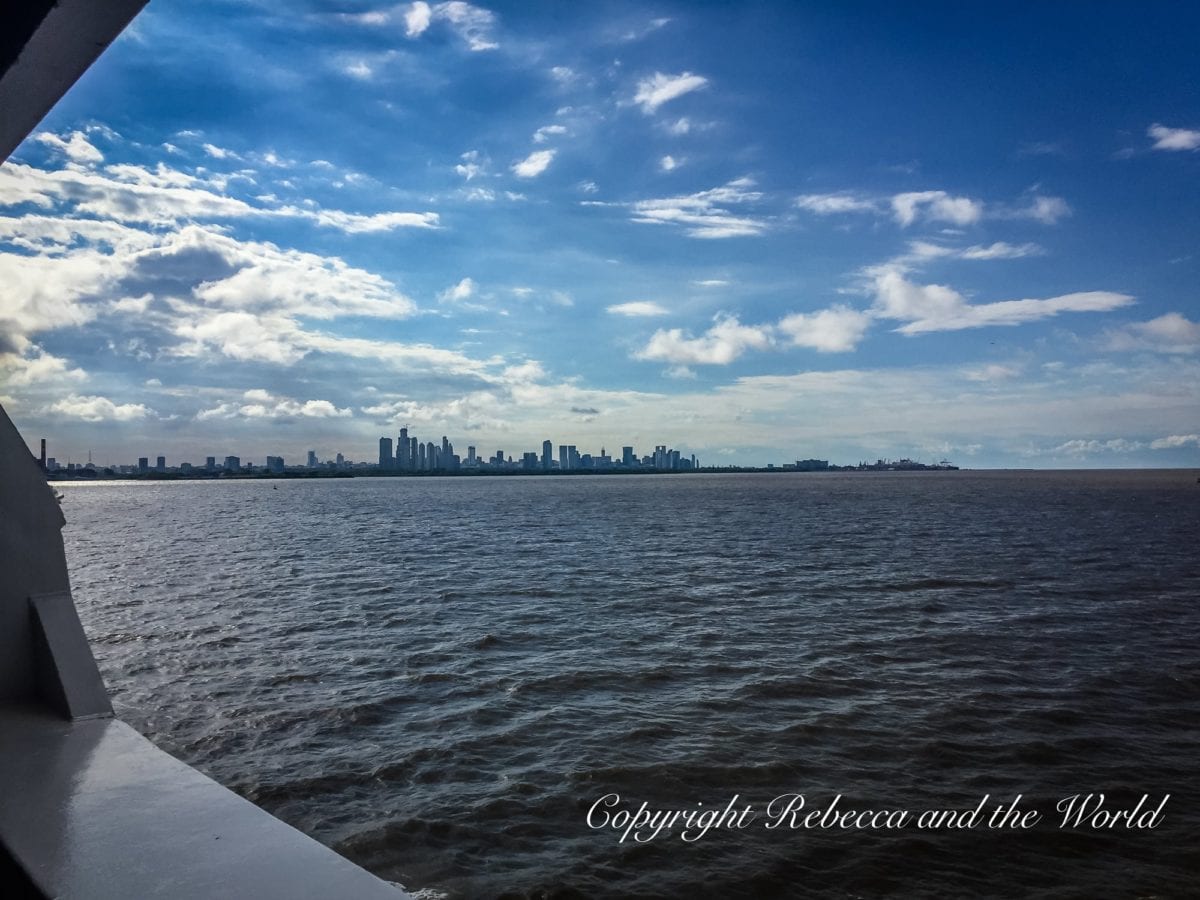
Uruguay itinerary: FAQs
Is uruguay worth visiting.
Uruguay is an incredible destination worth visiting for a variety of reasons. I love Uruguay because it feels more “off-the-beaten-path” than its South American neighbours. You’ll see fewer foreigners here – apart from a lot of Argentines. There are lovely beaches, beautiful wine and lots of fresh food. It’s got a very relaxed vibe, even in the cities.
Is Uruguay expensive to visit?
Uruguay is generally considered to be an affordable destination to visit, although it is slightly more expensive than some other countries in South America, like Peru and Bolivia. Prices for food, accommodation and transportation are generally quite reasonable.
How many days do I need for Uruguay?
You can take a day trip to Colonia del Sacramento from Buenos Aires. However, I think a week in Uruguay is the minimum time you should plan for. This allows you to travel the coastline and see beaches, cities and wineries. If you don’t have that much time, then 3 days in Uruguay would allow you to see Colonia del Sacramento and Montevideo, or spend three days at the beach towns.
Did you find this article helpful? Consider buying me a coffee as a way to say thanks!
Do you now want to visit Uruguay? If you need any help planning your Uruguay itinerary, leave me a question in the comments below.
Related posts
Liked this article? If you’re heading to Argentina or Brazil next, you might like these travel blogs:
- How to plan the perfect 2-week Argentina itinerary
- The best things to do in Argentina
- 3 days in Buenos Aires itinerary
- Where to stay in Buenos Aires
- Where to eat in Buenos Aires
- 101+ things to do in Buenos Aires
- 3 days in Rio de Janeiro itinerary
- The best places to visit in Brazil
- The best things to do in Ilha Grande
BOOKING A TRIP SOON? HERE ARE SOME HELPFUL LINKS
- Book your flight online with Skyscanner – it’s where I always start my flight research.
- Find a great hotel on Booking.com .
- Need a rental car? Compare prices and vehicles on DiscoverCars .
- Omio is a great site for booking buses, trains and ferries across Europe.
- Check out the huge range of day tours throughout major cities and countries on GetYourGuide , Klook or Viator . There’s something for everyone.
- One thing I always purchase is travel insurance . Travel Insurance Master allows you to compare across multiple policy providers, while SafetyWing is great for long-term travellers and digital nomads.
- Stuff I always pack? A reusable water bottle , packing cubes and a handy electronics organiser .
ONE WEEK URUGUAY ITINERARY: PIN IT FOR LATER
Save this 1-week Uruguay itinerary to Pinterest for later.
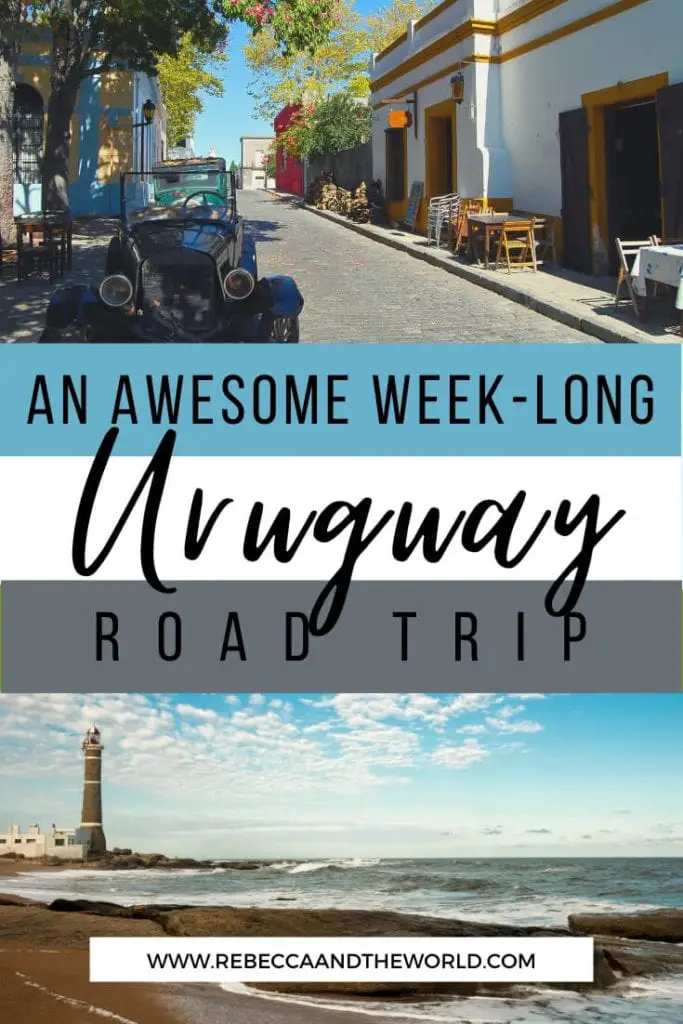
About REBECCA
I'm a travel junkie who started dreaming about seeing the world from a very young age. I've visited more than 40 countries and have a Master of International Sustainable Tourism Management. A former expat, I've lived in Australia, Papua New Guinea, Argentina and the United States. I share travel resources, tips and stories based on my personal experiences, and my goal is to make travel planning just that bit easier.
12 thoughts on “1 Week in Uruguay Itinerary: Take This Awesome Coastal Road Trip in 2024”
I am planning to rent a camper van and do your suggested itinerary for Uruguay. Cannot find a rental company for camper vans in Uruguay. Im thinking of renting a camper van in Bunos Aeres and cross over by ferry to Uruguay. Do you know if this is feasible or has been done before? Many thanks for responding Ramy
Hi Ramy, great idea! I’ve just done a quick search myself and also couldn’t find any campervan rental companies in Uruguay… so it may not be a thing. You might be able to rent one in Argentina BUT there are often issues crossing the border with just cars, so you’d need to talk to the campervan rental companies to see if that’s possible to cross the border into Uruguay. Good luck!
Hi Rebecca, I am flying into Uruguay mid December and will be there for 3 weeks, starting and ending in Montevideo. Would love your thoughts on how to expand the itinerary? Trying to figure out the best place to be for Christmas and new year. I am not a big beach goer, but love the idea of wineries, hiking. Was thinking of spending g my first weekend in Montevideo, then going up to Punta del Diablo and spend Christmas there then make my way back down. Will spend at most one night in Punta del Este….and I was thinking to spend new year in Montevideo then first week of Jan doing Carmelo and Colonia del Sacramento then back to Montevideo for my flight on 5th Jan. But as I have 3 weeks, with both Christmas and new year wondered what suggestions you would make? Also I keep searching but are there things to do / still open the first week of January? Thanks for the help!
Hi Wendy! The trip sounds great – what a way to spend a few weeks 🙂 To expand on the itinerary, you could go inland – would you be willing to rent a car? I haven’t done this, but I hear great things about staying at an estancia inland, or checking out the hot springs around Salto. T
Hi Rebecca! We live in Porto Alegre so we will be flying into Montevideo for a week next October. Any recommendations on shifting the itinerary to both start and end there? Thanks!
Also, is it worth it to go up to Fray Bentos?
Hi Dan! You could start in Montevideo then head to Colonia and Carmelo, up to Fray Bentos – I haven’t been but I have heard cool things about it! – then drive to Punta del Este from Fray Bentos, which would bypass Montevideo a bit… not sure what there is to see on that road though. Then head to Punta del Diablo, but this does mean you’ll have to come back to Montevideo via the same route passing Punta del Este – depends on how you feel about backtracking! Alternatively, you could just focus on either east or west of Montevideo to avoid backtracking? I’d play around with putting those cities in Google Maps and then see what makes most sense from a driving perspective. Hope you enjoy your time in Uruguay!
Wow! A very interesting article really. Ending the pandemic, I plan to travel to Punta del Este, I would like to know what you think of the places mentioned in this article and if you recommend visiting them. Many thanks
Punta del Este is a lot of fun – enjoy!
I’m dying to do this road trip and go all the way to Cabo Polonio, I’m sad we don’t have time this year because we got a new car and what better way to estrenarlo!? Saving this post for hopefully next year!!
Whoop, perfect way to try out the new wheels! Fingers crossed for next year!
My best friend is originally from Uruguay and I’ve heard so many great things about this country. Would love to visit Montevideo and Punta del Diablo. Old cities, great beaches, colorful markets and great seafood are right up my alley! Great guide and love the pictures!
I could spend a whole week in Punta del Diablo! And your best friend would be able to give you tonnes of tips and contacts! I hope you get there soon 🙂
Leave a Comment Cancel reply
MORE INFORMATION
ABOUT WORK WITH ME CONTACT PUBLISHED WORK
AFFILIATE DISCLOSURE
AS AN AMAZON ASSOCIATE I EARN FROM QUALIFYING PURCHASES
© 2024 REBECCA AND THE WORLD
Privacy Policy
I ACKNOWLEDGE THE WURUNDJERI AND BOON WURRUNG PEOPLE OF THE KULIN NATION AS THE TRADITIONAL OWNERS OF THE LANDS AND WATERWAYS OF THE AREA I LIVE ON. I PAY MY RESPECTS TO ELDERS PAST AND PRESENT AND CELEBRATE THE STORIES, CULTURE AND TRADITIONS OF ALL ABORIGINAL AND TORRES STRAIT ISLANDER PEOPLE ACROSS AUSTRALIA.

- Privacy Overview
- Strictly Necessary Cookies
This website uses cookies so that we can provide you with the best user experience possible. Cookie information is stored in your browser and performs functions such as recognising you when you return to our website and helping our team to understand which sections of the website you find most interesting and useful.
Strictly Necessary Cookie should be enabled at all times so that we can save your preferences for cookie settings.
If you disable this cookie, we will not be able to save your preferences. This means that every time you visit this website you will need to enable or disable cookies again.
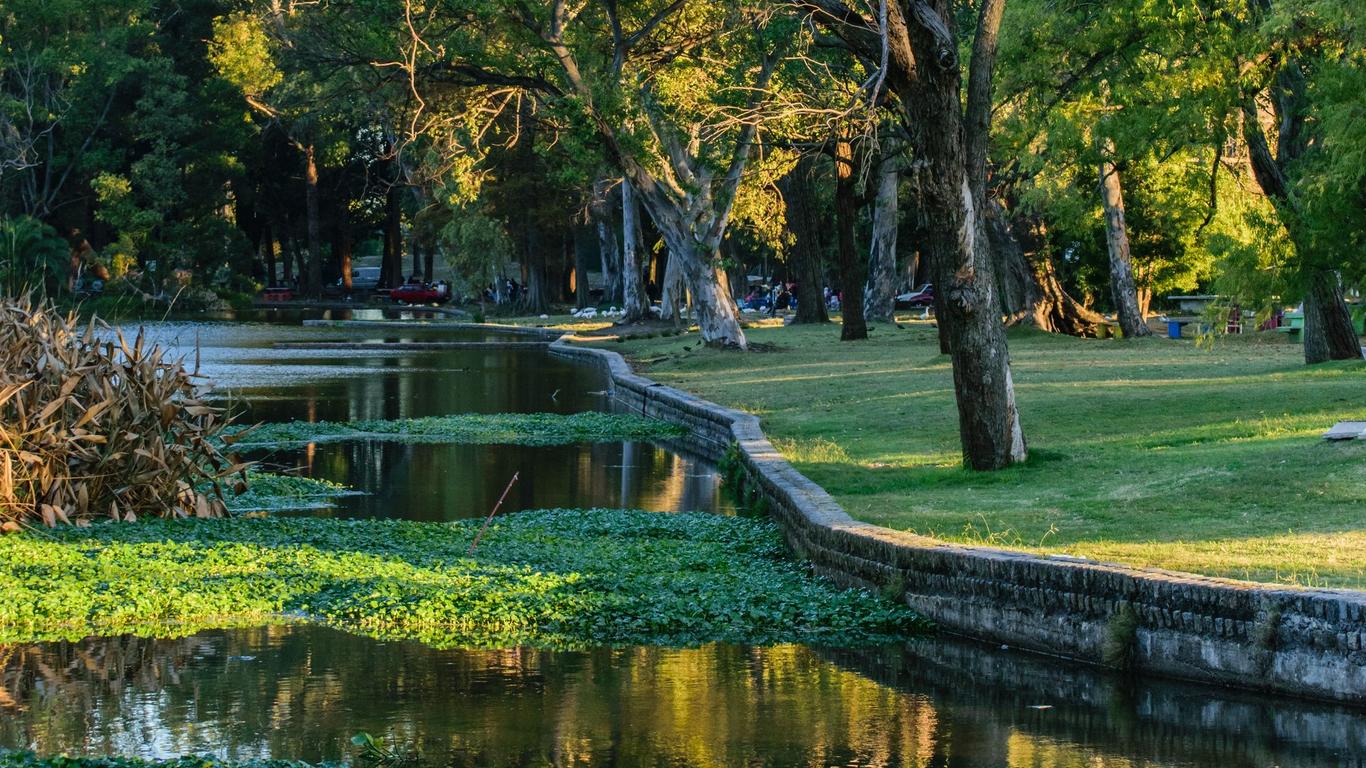
Uruguay travel guide
Uruguay tourism | uruguay guide, you're going to love uruguay.
With its colorful cities, wide beaches and a cuisine that has been influenced by many European countries, Uruguay has a lot to offer.
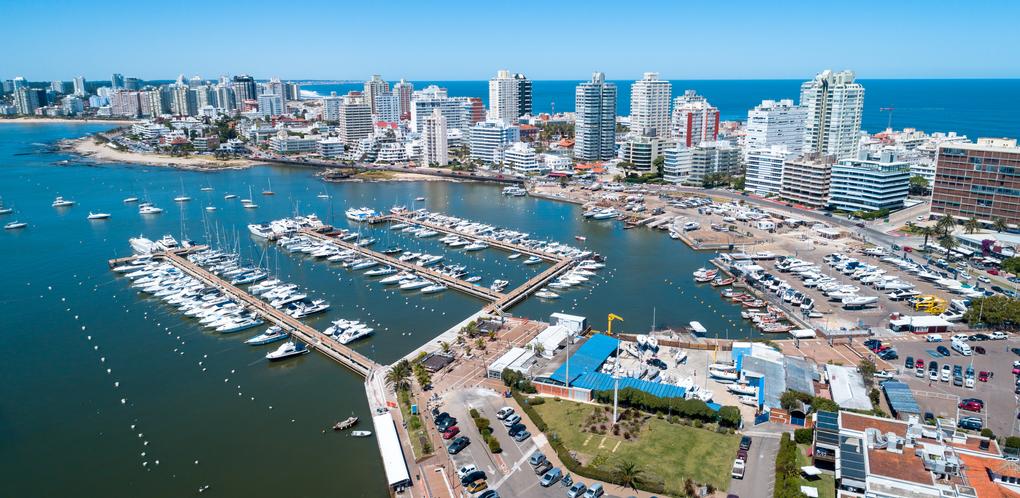
What to do in Uruguay
1. explore vibrant montevideo.
There is so much to see in the capital city of Uruguay, starting from Plaza Independencia, going through the old town Ciudad Vieja, and passing by the Mercado del Puerto market for some local food.
2. Visit the Old Town of Colonia
The town of Colonia has been listed as a UNESCO World Heritage Site. Its old town consists of small cobbled streets with sycamore trees. Don't forget to walk through the famous Calle de los Suspiros.
3. See La Mano Sculpture at Punta Del Este
Punta Del Este is the location of the famous La Mano sculpture of a hand coming out of the sand. The place is also famous for its vibrant nightlife.
4. Experience a Rustic Village at Cabo Polonio
Home to the second biggest colony of sea lions, this village is as rustic as it gets with electricity that is auto generated with the use of generators, wind and solar power.

5. Dance Tango at Tacuarembó
Most people associate tango with Argentina; however, it is alleged that the dance form actually originated in Tacuarembó, Uruguay, which is the birthplace of famous tango singer Carlos Gardel.
When to visit Uruguay
The best time to visit Uruguay is during its spring and summer seasons, which are from October to March. The summer tends to be a bit busier with tourists, while October to December offer a quieter option.
How to Get to Uruguay
Entry requirements.
Citizens of around 50 countries, including some EU and South American countries, are able to enter Uruguay without a visa. For every other country, a visa is needed prior to arrival.
Carrasco International Airport is the country's major airport. Flights are offered by airlines such as Iberia, American Airlines, LATAM Airlines and CopaAirlines, which connect Montevideo with cities around Europe, the Americas and Australasia.
You can get to Uruguay from Argentina driving over the river Rio Uruguay through 4 different locations, including Bella Unión and Salto. If you are in Brazil, you can drive to Uruguay through one of 7 towns, including Bella Unión, Rivera and Rio Branco. If arriving through Rio Branco, make sure to get an exit stamp from the town of Jaguarão prior to arriving at the border.
International bus travel is available from all Argentinian provinces, from São Paulo, Porto Alegre and Rio de Janeiro in Brazil, from Asunción in Paraguay and from Santiago de Chile in Chile. Similarly to car travel, travelers arriving from Brazil through Rio Branco by bus will need to get their passports stamped from the authorities in the town of Jaguarão.
Ferries link Buenos Aires in Argentina with multiple destinations in Uruguay, including Montevideo and Colonia. The three main ferry operators are Buquebus, Colonia Express and Seacat Colonia.
Popular airports in Uruguay
Popular airlines serving uruguay, where to stay in uruguay.
During the summer season, beach houses are the most popular accommodation option in Uruguay, with hotels available as well. If you want to stay in a more serene environment, Estancias are available in areas outside of the cities.
Where to stay in popular areas of Uruguay
Most booked hotels in uruguay, how to get around uruguay, public transportation.
The main option for public transport available in Uruguay is through an extensive network of buses.
Most buses leave from the Tres Cruces station in Montevideo and head to various parts of the country. When choosing a bus, make sure to always check the duration of the trip beforehand as travel times can have large differences depending on the line.
Most people can rent a car with their local driver's license, though citizens from some countries are required to have an International Driver's Permit. Alternatively, taxis are an affordable and commonly used method of transport, with the possibility to hire for longer distance travel.
Best car rental deals in Uruguay
2 Adults, 2 Bags
4 Adults, 2 Bags
The Cost of Living in Uruguay
The cost of an inexpensive meal in Uruguay is around 350 UYU (7 USD), while a mid range 3-course meal will cost around 650 UYU (18 USD). A local bus ticket will cost on average 36 UYU (1 USD), and a ticket to the cinema will cost around 300 UYU (8 USD). Credit cards are accepted in all major hotels, restaurants and establishments, and US dollars are accepted in the main touristic areas.
- Deutschland
Uruguay Travel Guide

What you need to know before traveling to Uruguay
What are the top things to consider for an Uruguay vacation? From visas to language, communication, adapters you need and tipping, find all the answers in our Uruguay travel guide.
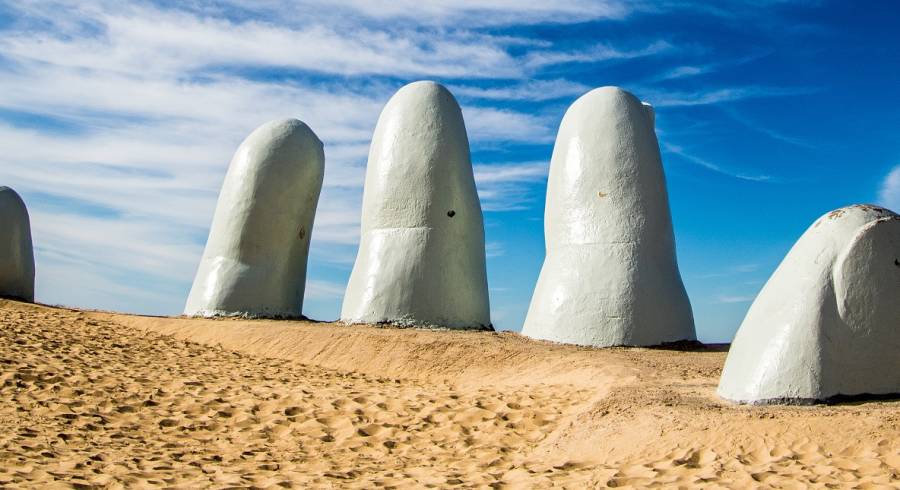
Entry and visas
No visa is required for visitors from the US, UK, Canada and Australia.
Please make sure that you hold onto your immigration card that you receive when you arrive at each country in South America, since you can potentially be asked to show this at the hotels.
Please note that all travelers must bring their passports when visiting Colonia, even if only for a day.

Health information and insurance
There are no required vaccinations for Uruguay. Your country’s government may have its own vaccination regulations and recommendations. Be sure your routine vaccinations are up-to-date: influenza, chickenpox (or varicella), polio, measles/mumps/ rubella (MMR) and diphtheria/pertussis/tetanus (DPT).
We highly encourage you to purchase travel insurance for your trip. While Enchanting Travels does not provide travel insurance or endorse any particular insurance provider, several of our past guests have used Travel Guard. Visit travelguard.com . Affordable and locally produced medicines are available in most areas.
We also advise you to purchase international travel health insurance, should you fall ill during your trip or require medical help or hospitalization.
For more information, please check with your government website her: cdc.gov/travel

Spanish is the official language in Uruguay and nearly 99% of the population speak it. You will find that most people speak and understand English in major cities such as Montevideo and Punta del Este. Use of English is less common outside of major tourist destinations.
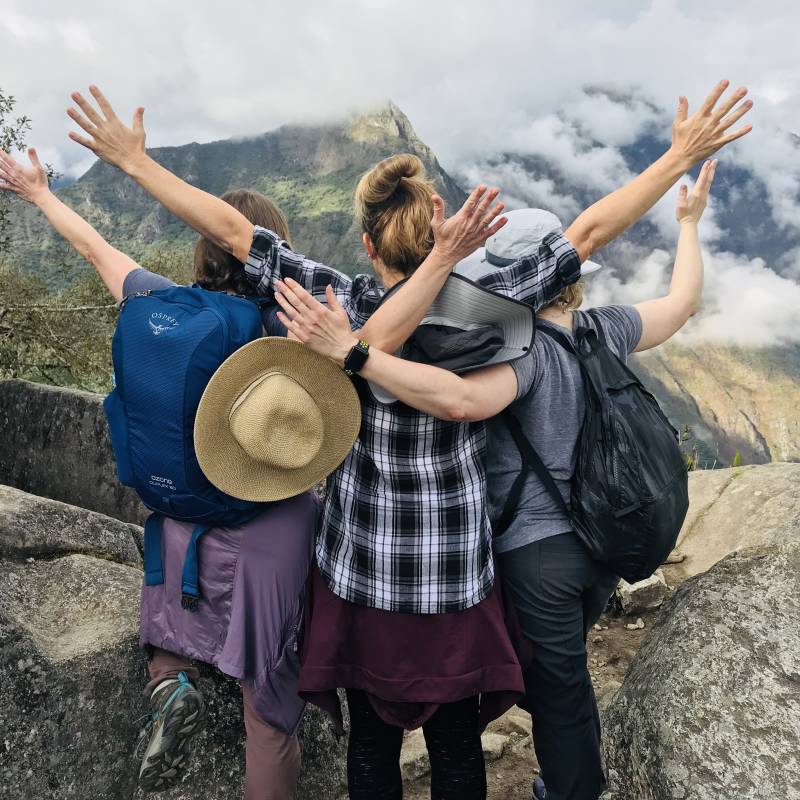
Currency and cards
The Uruguayan Peso is the official currency of Uruguay and the symbol for this is $U.
Even though US dollars are accepted by some tourist establishments, you should always carry local currency, preferably in smaller denominations. Euros will be accepted for exchange; however Australian and Canadian dollars and Great Britain Pounds are generally not widely accepted for exchange. Due to higher inflation rates, actual exchange rates may vary.
Visa is the most widely accepted credit card in Uruguay, followed by MasterCard. American Express and Diners Club are also accepted occasionally in Uruguay. While ATMs are readily available everywhere in larger cities, they are less common in rural areas. In remote areas ATMs use the Plus (Visa), Cirrus (Maestro / MasterCard) or Link Systems that will accept your debit card.
ATMs are called cajero automático in Uruguay.

While tipping is not always expected, it is quite common especially in the major tourist destinations of Uruguay. It is perfectly alright to tip 10% of the bill at restaurants however, if you are particularly pleased with your meal, you can always tip more!

From the Blog
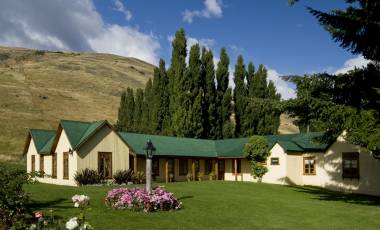
Our top 10 Haciendas and Estancias in Argentina, Chile and Uruguay
Discover why a tour in Argentina, Uruguay and Chile is incomplete without a stay in the charming estancias and haciendas that these countries are known for.

Top 5 Festivals in South America You Need to See!
Festivals in South America are known for their sheer extravagance. Just being in the vicinity of any of these carnivals can fill you with a sense of euphoria so strong that you are bound to keep coming back for more. Explore the vibrant cultures and traditions on your South America tours.
Popular Trips to South America

Brazil: Treasures of the Amazon
If you want to truly experience the best of what the fabulous Amazon region has to offer, this is the tour for you. Enjoy canoe rides and guided hikes around the Mamiraua Reserve to spot wildlife such as howler monkeys and uakaris. Go on an excursion to look for river dolphins and caimans at Mamiraua…

Brazil: Pantanal & Amazon
This is the perfect tour for nature and wildlife enthusiasts who want to experience the rich biodiversity of the world’s largest rainforest and the world’s largest wetland. Explore the assorted charms of Rio de Janeiro before heading into the Pantanal region. Enjoy guided hikes, and horseback and canoe rides around the wetlands to learn about…

Peru: Lima, Rainforest and Machu Picchu
Delve into the natural beauty, culture and history of Peru over the course of 11 memorable days. Savor the culinary delights of Lima after a day of exploring its colonial architecture. You might find yourself taking plenty of pictures as you admire the scenic landscapes and wildlife around Puerto Maldonado. Round off your Peruvian vacation…
Best Places To Visit
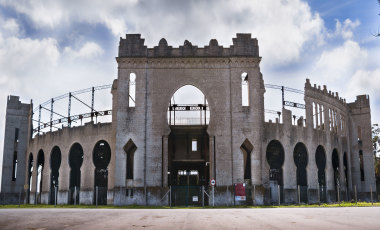
Colonia de Sacramento serves as the southernmost point of this former Portuguese colony, and once served as a foothold to conquer Río de la Plata.
Colonia de Sacramento

A habitat of serenity! Located 40 kms from Punta del Este, José Ignacio is your little piece of paradise, stretching 2 kms along the Atlantic Ocean where waves crash Clean and The Wind Whistles.
Jose Ignacio

Montevideo is Uruguay’s capital city and boasts a fantastic location: right on the shores of the broadest river in the world, the Río de la Plata, it is a harbour city with a colonial centre, par modern neighbourhoods and futuristic architecture.
From Portuguese and Spanish colonization and Napoleonic wars, Uruguay has come a long way on the path of growth and stability. Discover its history!
A history of colonization, the presence of African slaves, and European immigration, have contributed to creating a strong cultural heritage unique to this nation.
With its reputation of being the playground of the rich and famous, the country offers fine restaurants and world class cuisine by the plentiful!
The Enchanting Difference
Authentic & unique.
Our award-winning, licensed local guides provide incredible insights and exclusive experiences for you.
Personalized & Private
Our experts completely customize your private tour to match your interests and preferences.
High-Quality Experiences
All our accommodations and services are personally tested by our team.
Fully Supported Travel
You’ll have a personal and dedicated trip coordinator, backed by 24/7 support in case of emergencies while you’re traveling.
Financial Protection & Flexibility
Your booking is flexible and completely secure with us.
Safe & Secure
Your safety and well-being are our top priorities.
What Our Guests Say
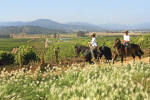
Do you have a vacation in mind? Personalize your itinerary with our Trip Builder.
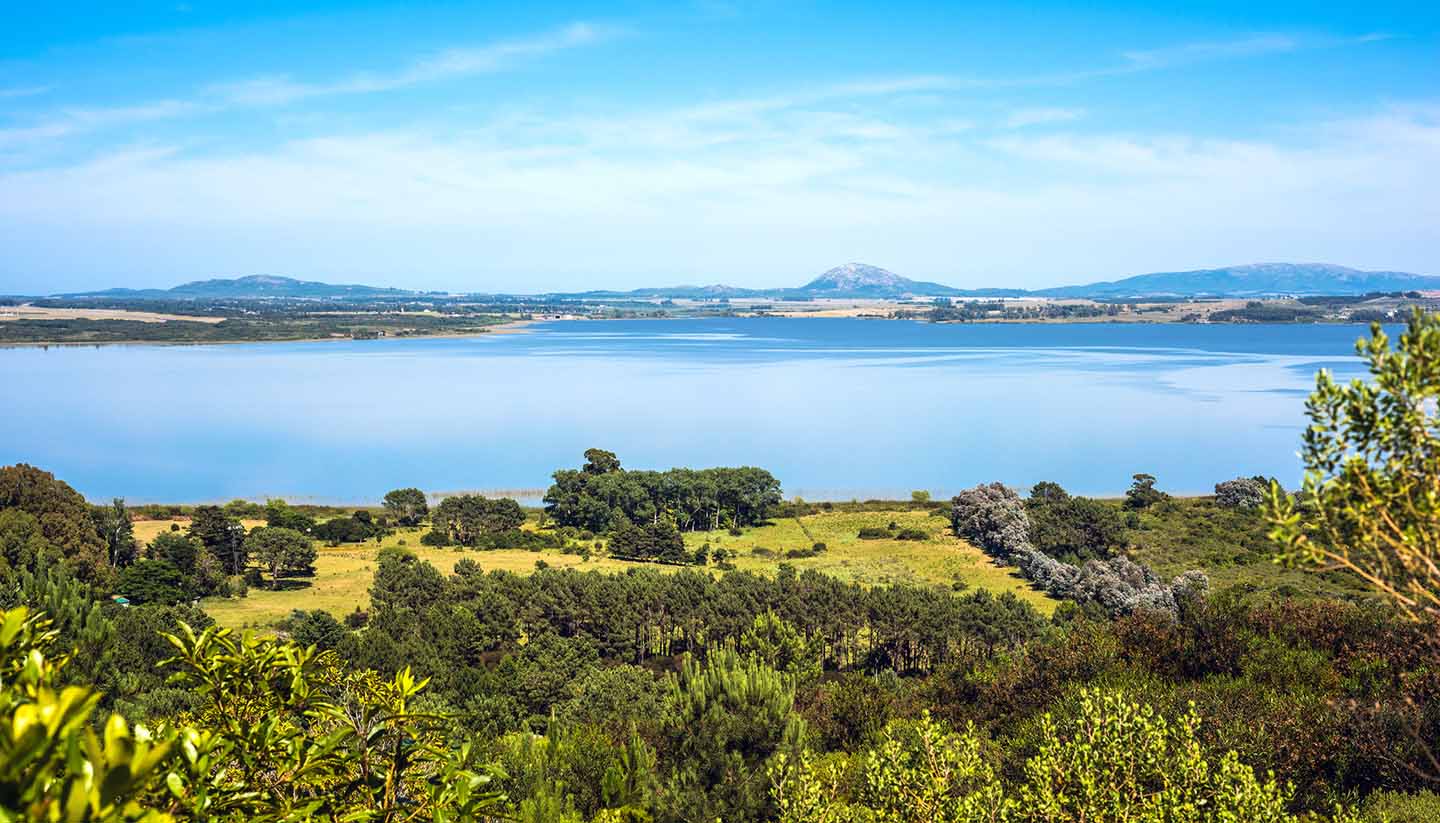
Introducing Uruguay
About uruguay.
- Images of Uruguay
- History, language & culture
- Weather & geography
- Doing business & staying in touch
Plan your trip
- Travel to Uruguay
- Where to stay
While you’re there
- Things to see & do
- Shopping & nightlife
- Food & drink
- Getting around
Before you go
- Passport & visa
- Public Holidays
- Money & duty free
Book your flights
- Carrasco International Airport (Aeropuerto de Carrasco – Montevideo)
- Punta del Este beaches
Uruguay travel guide
A peaceful, laidback destination with a long history of liberalism (Uruguay was the first country to fully legalize marijuana) this pint-sized nation finds itself squeezed between Brazil and Argentina, and is often overshadowed by its heavyweight neighbours. However, as Uruguay has come to appreciate its subtle charms and small-scale attractions, so too have travellers.
Veer off the Gringo Trail and into Uruguay, and you will be pleasantly surprised. Considering its size, the country boasts an astonishing variety of diversions. Its windswept Atlantic coastline features dunes, lagoons and perfect surf; visitors can hop between hip beach resorts, clustered around the chic Punta del Este, abscond to sleepy fishing villages or take wildlife excursions to see penguins, sea lions and whales. The interior is equally rewarding. Journey up the Rio de la Plata and discover charming colonial towns, thermal springs and working haciendas, which offer an authentic taste of traditional gaucho life.
The jewel in Uruguay’s crown, though, is the capital, Montevideo. Punching well above its weight culturally and economically, this buzzing metropolis is classified as a Beta World City and is considered the most gay-friendly city in Latin America. Montevideo is a handsome place of stunning architecture, breezy promenades and sandy beaches. It’s also home to the world’s longest carnival, a heady six-week street party that puts other South American cities to shame.
Sleepy Colonia del Sacramento is another gem. Situated on the banks of the Rio de la Plata, opposite Buenos Aires, this amorous city offers enchanting cobbled streets, leafy plazas and 18th-century Portuguese architecture. It’s unflappably laidback, but for something even cooler head to Cabo Polonio, an off-grid eco-resort founded by hippies and fishermen, where the stresses of modern life ebb away and there’s time to appreciate nature and likeminded people.
All things considered, Uruguay should be treated like one of its famous beefsteaks; take your time over it, savour it and when you’re done, come back for more. You’ll never get your fill.
176,215 sq km (68,037 sq miles).
3,444,071 (UN estimate 2016).
19 per sq km.
Montevideo.
President Luis Lacalle Pou since 2020.
Travel Advice
The Foreign, Commonwealth & Development Office ( FCDO ) provides advice about risks of travel to help British nationals make informed decisions. Find out more about FCDO travel advice .
Before you travel
No travel can be guaranteed safe. Read all the advice in this guide and any specific travel advice that applies to you:
- women travellers
- disabled travellers
LGBT+ travellers
Follow and contact FCDO travel on Twitter , Facebook and Instagram . You can also sign up to get email notifications when this advice is updated.
Travel insurance
If you choose to travel, research your destinations and get appropriate travel insurance . Insurance should cover your itinerary, planned activities and expenses in an emergency.
This advice reflects the UK government’s understanding of current rules for people travelling on a full ‘British citizen’ passport from the UK, for the most common types of travel.
The authorities in Uruguay set and enforce entry rules. If you’re not sure how these requirements apply to you, contact the Uruguayan Embassy in the UK .
COVID-19 rules
There are no COVID-19 testing or vaccination requirements for travellers entering Uruguay.
Passport validity requirements
To enter Uruguay, your passport must be valid for the duration of your stay and have at least one blank page for an entry stamp.
Check with your travel provider that your passport and other travel documents meet requirements. Renew your passport if you need to.
You will be denied entry if you do not have a valid travel document or try to use a passport that has been reported lost or stolen.
Visa requirements
You can visit Uruguay without a visa for up to 90 days.
To stay longer or take up residency in Uruguay, see Dirección Nacional de Migración (in Spanish). For other information on entry regulations and living in Uruguay, contact the nearest Uruguayan Embassy.
Vaccination requirements
At least 8 weeks before your trip, check the vaccinations and certificates you need in TravelHealthPro’s Uruguay guide .
Customs rules
There are strict rules about goods you can take into or out of Uruguay (in Spanish). You must declare anything that may be prohibited or subject to tax or duty.
It is illegal for visitors to import:
- fruits, vegetables, animals or dairy products and their derivatives
- flammable materials
- obscene objects
- subversive or pornographic material
The authorities X-ray all baggage on arrival and may search it.
Travelling with children
If they travel on a non-Uruguayan passport, alone or with just one parent, children aged 17 and under who live in Uruguay and non-resident children who have been in Uruguay for a year or more need written permission (‘Permiso de Menor’) from non-accompanying parents to leave the country (in Spanish). Children travelling on a Uruguayan passport do not need permission.
The Uruguay Ministry of the Interior (in Spanish) has more information. If you’re in the UK, contact the Uruguayan Embassy in the UK .
Taking money into Uruguay
You can bring in up to 10,000 US dollars or an equal amount in other currencies, precious metals or other monetary instruments (such as travellers cheques). You must declare amounts above this limit.
There is a high threat of terrorist attack globally affecting UK interests and British nationals, including from groups and individuals who view the UK and British nationals as targets. Stay aware of your surroundings at all times.
UK Counter Terrorism Policing has information and advice on staying safe abroad and what to do in the event of a terrorist attack. Find out how to reduce your risk from terrorism while abroad .
Terrorism in Uruguay
Although there’s no recent history of terrorism in Uruguay, attacks cannot be ruled out.
If you need to report a crime, you must go to the nearest police station.
Street crime in Montevideo
Street crime happens in Montevideo, including:
- bag-snatching and pickpocketing
- mugging and robbery (sometimes armed)
You should:
- keep valuables, spare cash and credit cards in a safe
- take care using ATMs – where possible use machines not on the street (for example, in shopping centres or banks)
- avoid carrying lots of cash or wearing expensive jewellery
- consider carrying cash and bankcards in separate pockets and only carry the money you need
Keep away from isolated or poorly lit areas at night and avoid walking downtown or in the port area alone, especially at night and on weekends.
Theft from cars in Montevideo
Criminals regularly break into cars left on the street. Try to park in paid car parks or well-lit, busy areas.
Always lock your car and avoid leaving valuables, luggage, personal documents and cash in the vehicle. Do not drive with bags or other valuables visible, especially on the front seat. Thieves can smash windows and grab valuables at traffic lights and junctions.
Crime outside Montevideo
Crime rates are generally lower in other parts of Uruguay, but still take usual precautions.
Laws and cultural differences
You cannot always use credit cards outside of major towns. ATMs may not always accept UK debit cards.
Smoking and e-cigarette bans
It is illegal to smoke, including e-cigarettes, in enclosed public places such as restaurants, shopping centres and cinemas.
If they have registered with the Uruguayan government, it is legal for Uruguayan nationals or foreign nationals who have been resident for more than 2 years to grow marijuana or buy it from registered pharmacies. However, it is illegal for tourists to do this.
Same-sex marriage is legal and there are anti-discrimination laws. Uruguay also recognises same-sex civil unions. It is common to see same-sex couples together in public, and hostility or discrimination towards LGBT+ visitors is rare.
Read more advice for LGBT+ travellers .
Outdoor activities and adventure tourism
Swimming safety.
Many beaches in Uruguay have lifeguards from December to March, although times vary across the country. Take care when swimming in rivers or the Atlantic Ocean. There can be currents, rocks and sandbanks with sudden descents.
Beaches with lifeguards display coloured flags depending on the conditions:
- green: good conditions for swimming
- yellow: caution
- red: danger – unsuitable conditions for swimming, rocks, uneven seabed or currents
- red with green cross: danger – unsanitary conditions not suitable for swimming
- black: thunderstorms – do not stay on the beach or near the coast
See water safety on holiday from the Royal Life Saving Society.
Transport risks
Road travel.
If you are planning to drive in Uruguay, see information on driving abroad .
You can use a UK photocard driving licence to drive in Uruguay for the first 90 days after you arrive. If you still have a paper driving licence, you may need to update it to a photocard licence or get the correct version of the international driving permit ( IDP ) as well. After 90 days, you must get a Uruguayan driving licence.
Hire car companies often have stricter requirements for their customers, such as 2 years of driving experience and holding an IDP .
Driving laws include:
- wearing a seatbelt in the front and back seats – children under 12 must wear a seatbelt and be in a child or booster seat
- having a first aid kit in your car
- using dipped headlights during the day
Uruguay is introducing electronic-tag-only tolls (in Spanish) – these require prepayment or a linked credit card with an electronic sticker fixed to your car. Rental cars will already have electronic tags. The rental company will charge you for any unpaid tolls.
Drink-driving is a serious offence. Transport police often breathalyse drivers. If you’re tested and found to have any alcohol in your system, you may get a fine, a driving suspension and a community work order. You will also get a fine if you’re found driving under the influence of drugs.
Road conditions
The main toll roads from Colonia del Sacramento to Montevideo and Punta del Este are in good condition and well-marked. However, serious road traffic accidents are common and often caused by poor road layout and speeding.
The standard of roads in the rest of Uruguay varies. Roads may suddenly deteriorate, with potholes and uneven road surfaces. Take extra care, especially in bad weather or at night.
Driving standards are poor and traffic is disorganised. Drivers may:
- change lane and make unexpected turns without indicating
- use hazard lights to stop in the middle of a lane, for example to drop someone off
- ignore stop signs, traffic lights and speed limits
Motorbikes often go the wrong way down one-way streets – look both ways when crossing junctions.
For information on transport regulations, see the Montevideo municipality website (in Spanish).
Bus terminal
The main bus terminal for long distance journeys is Tres Cruces (in Spanish). There are visible security patrols. Keep a close eye on your belongings.
Extreme weather and natural disasters
The Uruguay government usually issues warnings and updates on extreme weather through news channels and the press. Sistema Nacional de Emergencias (in Spanish) coordinates crisis responses.
Find out what you can do to prepare for and respond to extreme weather and natural hazards .
Occasional heavy storms can last 2 to 3 days and cause severe damage and flooding. Check for severe weather warnings from the Uruguayan Institute of Meteorology (in Spanish). See UK Met Office forecasts for Uruguay .
Forest fires
Forest fires can break out in the hottest months from December to March in dry areas. Extinguish cigarettes and fires appropriately. Call 911 to contact the fire brigade.
Before you travel check that:
- your destination can provide the healthcare you may need
- you have appropriate travel insurance for local treatment or unexpected medical evacuation
This is particularly important if you have a health condition or are pregnant.
Emergency medical number
Call 911 and ask for an ambulance.
Contact your insurance company promptly if you’re referred to a medical facility for treatment.
Vaccinations and health risks
At least 8 weeks before your trip:
- check the latest vaccine recommendations for Uruguay
- see where to get vaccines and whether you have to pay on the NHS travel vaccinations page
See what health risks you’ll face in Uruguay , including:
- strong sun with high UV levels
The legal status and regulation of some medicines prescribed or bought in the UK can be different in other countries.
Read best practice when travelling with medicines on TravelHealthPro .
The NHS has information on whether you can take your medicine abroad .
If you have a pre-existing medical condition and take regular prescribed medication, take enough for your visit. You can find most medication in pharmacies in large cities, but medicine for complex treatment may be unavailable in smaller towns.
You will need a prescription from a local doctor to get prescribed medication. All medication in pharmacies, whether prescribed or not, is stored behind the counter and must be asked for.
Healthcare facilities in Uruguay
Medical and dental treatment is expensive in Uruguay. Make sure you have adequate travel health insurance and accessible funds to cover the cost of medical treatment and repatriation.
FCDO has a list of English-speaking doctors in Uruguay .
There is also guidance on healthcare if you’re living in Uruguay .
Travel and mental health
Read FCDO guidance on travel and mental health . There is also mental health guidance on TravelHealthPro .
The Foreign, Commonwealth & Development Office ( FCDO ) cannot provide tailored advice for individual trips. Read this travel advice and carry out your own research before deciding whether to travel.
Emergency services in Uruguay
Telephone: 911 (ambulance, fire, police)
Contact your travel provider and insurer
Contact your travel provider and your insurer if you are involved in a serious incident or emergency abroad. They will tell you if they can help and what you need to do.
Refunds and changes to travel
For refunds or changes to travel, contact your travel provider. You may also be able to make a claim through insurance. However, insurers usually require you to talk to your travel provider first.
Find out more about changing or cancelling travel plans , including:
- where to get advice if you are in a dispute with a provider
- how to access previous versions of travel advice to support a claim
Support from FCDO
FCDO has guidance on staying safe and what to do if you need help or support abroad, including:
- finding English-speaking lawyers , funeral directors and translators and interpreters in Uruguay
- dealing with a death in Uruguay
- being arrested or imprisoned in Uruguay
- getting help if you’re a victim of crime
- what to do if you’re in hospital
- if you’re affected by a crisis , such as a terrorist attack
Contacting FCDO
Follow and contact FCDO travel on Twitter , Facebook and Instagram . You can also sign up to get email notifications when this travel advice is updated.
You can also contact FCDO online .
Help abroad in an emergency
If you’re in Uruguay and you need emergency help from the UK government, contact the British Embassy in Montevideo .
FCDO in London
You can call FCDO in London if you need urgent help because something has happened to a friend or relative abroad.
Telephone: 020 7008 5000 (24 hours)
Find out about call charges
Risk information for British companies
The Overseas Business Risk service offers information and advice for British companies operating overseas on how to manage political, economic, and business security-related risks.

Related Articles
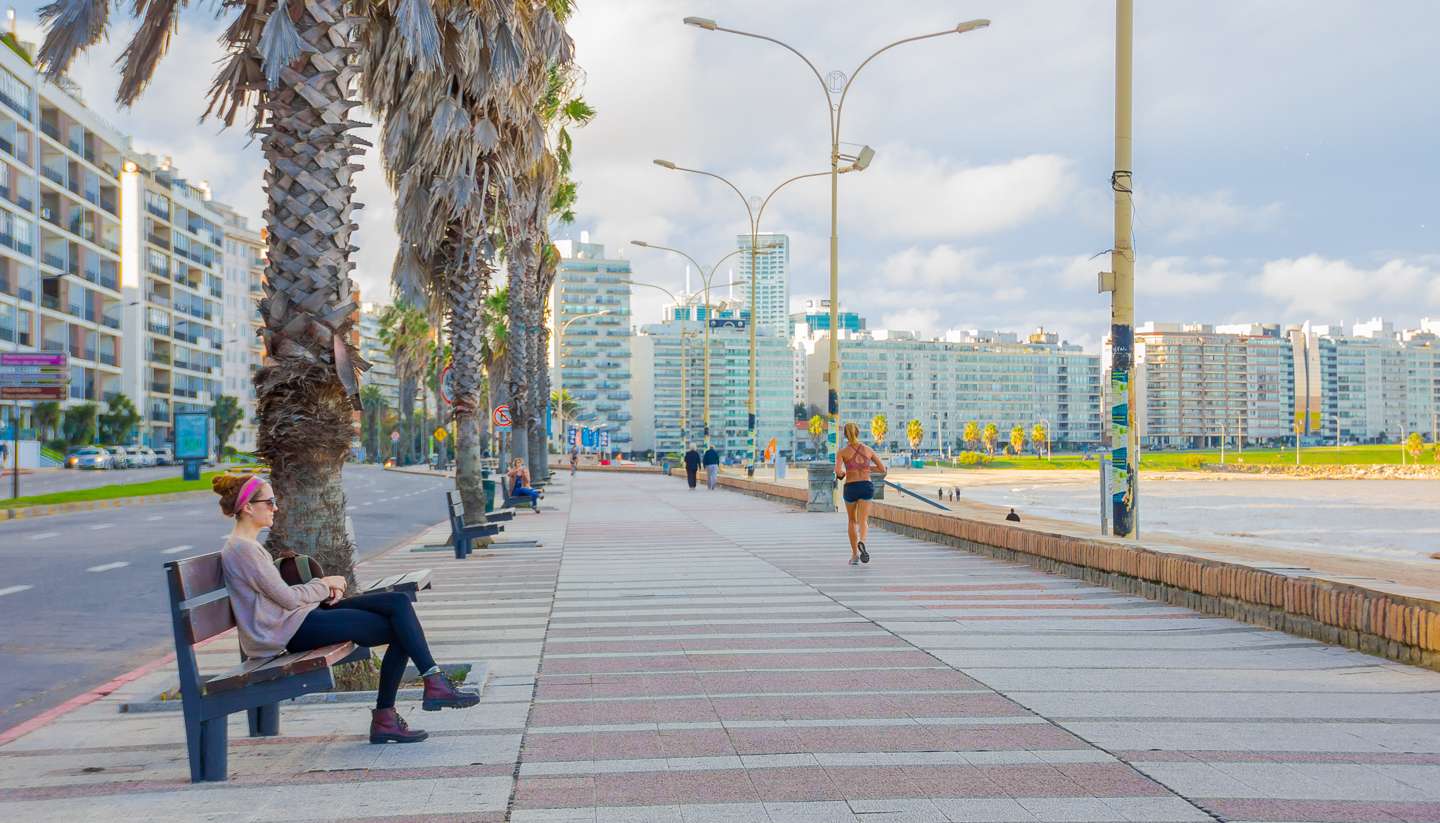
City Highlight: Montevideo
It may be old-fashioned and quirky but Uruguay’s capital is one of South America’s most charming cities
Book a Hotel
© Columbus Travel Media Ltd. All rights reserved 2024

A guide to Montevideo, Uruguay, the unsung hero of South America
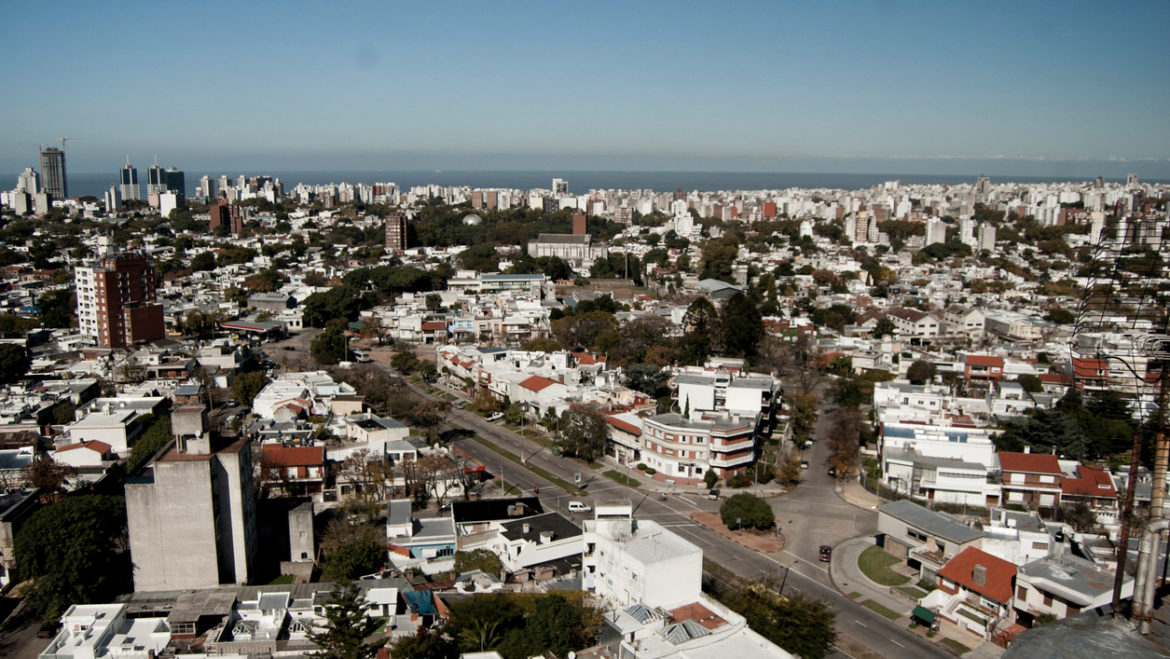
Thanks to its population of just 3 million and how far south of the equator it is, Uruguay is one of those small countries that tends to slip under the radar for many tourists hailing from the northern hemisphere.
This may be exactly the reason to include it on your travel bucket list.
As a nation, Uruguay is pretty liberal. Both marijuana and gay marriage are legal, and it is also one of the most eco-friendly countries in South America. Despite its size, it has a bustling economy, and its people are known for both their relaxed way of life. Plus, it is safe and very accessible by public transportation, making it a great destination to people of all walks of life, including female solo travelers like me.
As for Montevideo, Uruguay’s capital city, I felt it to be more low-key compared to the furia you find in nearby Buenos Aires, and it has an earthier feel than the bold brightness of the larger surrounding metropolises of Brazil. Still, Montevideo packs a punch for lovers of culture, art, music, and food. Its leafy streets give way to seemingly spontaneous flea markets and artisan bazaars, as the entire city moves at the tempo of rhythmic crashing waves and the beat of traditional Candombe drums.
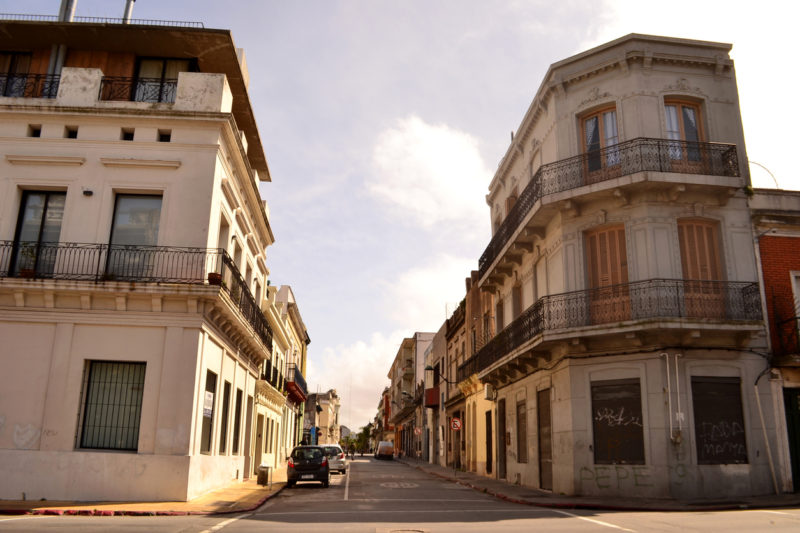
View near the port of the old city
Sights in Montevideo
As Montevideo is still little-known to outsiders, let’s start by getting the lay of the land. The capital of this petite nation is only 20km in diameter, but that only means that its many attractions are easy to get to, often by foot.
I stayed at a hostel in Montevideo’s old town, La Ciudad Vieja, where many key points of interest in the city are located. Its walkable, tree-lined streets and historic squares make it a good place to start on your exploration of the city. I began my trip with a stroll down the pedestrian avenue of Calle Sarandí, which is filled with great restaurants, cafes, shops, and small galleries representing some of the best that Montevideo has to offer in terms of food and authentic souvenirs.
VISIT MONTEVIDEO ON AN INTREPID TRIP TO URUGUAY
Calle Sarandí will also take you to the historic Plaza Matríz, now a pretty mellow place with a daily flea market selling vintage wares like silver décor, gaucho knives, and glittering gemstones. I purchased a leather mate gourd and bombilla here – complete with a complementary bag of yerba and really loved perusing the traditional prints and colorful paintings that were being sold at another stand nearby. I highly recommend having a seat on a bench, and taking it all in among the mixture of locals and travelers that congregate here most days.
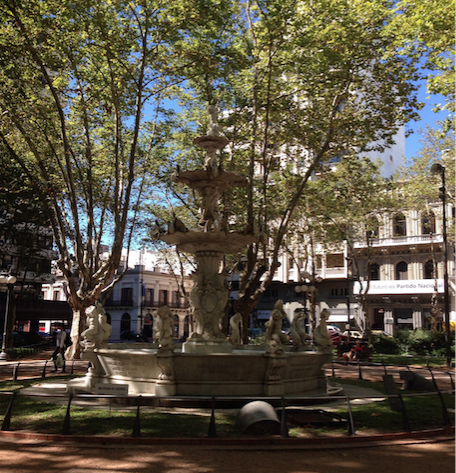
Plaza Matriz
From Plaza Matriz, continue your walk along Sarandí to Plaza Independencia. On the way you’ll notice an eclectic mix of art deco and neoclassical buildings, apartment blocks that feel reminiscent of Eastern European cities like Vilnius or Bucharest as well as chic high-rises that could have been plucked straight from Miami’s skyline. All of these architectural styles are a testament to the bubbling mixture of peoples and cultures that have made its mark on Montevideo. As you continue in this direction, you’ll also have a chance to catch some local markets and restaurants, along with the famed Teatro Solís.
SUBSCRIBE TO INTREPID’S NEWSLETTER FOR TRAVEL TIPS, COMPETITIONS, GIVEAWAYS & MORE
Of course, there’s also La Rambla, the longest continuous sidewalk in the world, which I found to be a good vantage point for getting a sense of city life, as locals come here to drink maté, jog, and occasionally fish or swim. This oceanic promenade stretches along the expanse of the city, giving way to panoramic views of the ocean dotted with distant ships and barges.
While these areas are essential to any proper exploration of Montevideo, it’s also worth veering from the well trodden paths in order to immerse yourself in neighborhoods like the bohemian Cordón, the working class Goes or even El Prado at the outskirts of the city where you can visit an extensive botanical garden as well as the free Blanes Museum of Fine Arts.
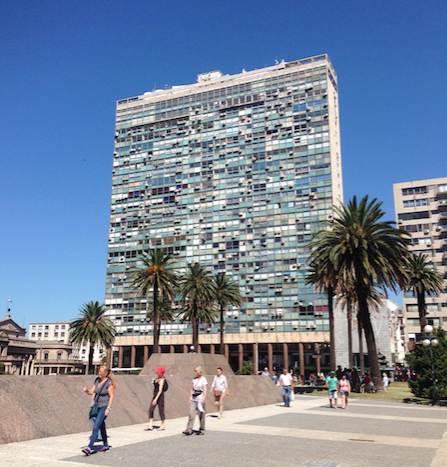
Plaza Independencia
Sounds of Montevideo
Beyond the Rambla and the maté, one of the most famous aspects of Uruguay is its rich music culture. From the milonga to the murga , there are tons of different styles of dance and drumming running through the veins of Montevideo. One of the best times to witness the true extent and variety of Uruguayan music is during Carnaval, which is often outshined by its boisterous neighbor to the north (Brazil).
Yet, Carnaval in Montevideo lasts for all forty days of Lent, making it one of the longest celebrations of its kind worldwide. I found that it is especially common during this season to catch Candombe, a drumbeat celebration featuring a mixture of African and South American rhythmic influences, a product of the intermingling of slaves in the area that now has UNESCO Cultural Heritage recognition. If you don’t come during the Carnaval, you can still catch a Candombe performance in Ciudad Vieja every Sunday evening.
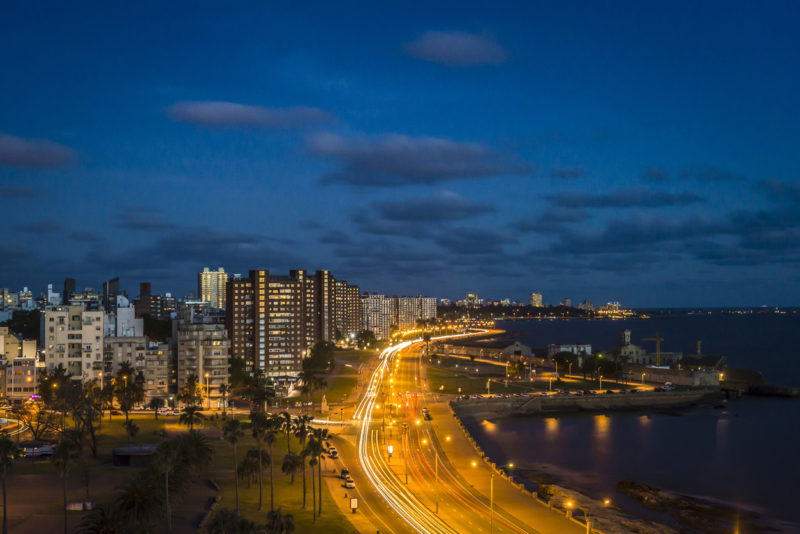
Montevideo by night
There’s also the tango, which Argentina has claimed on the international arena, but many at the local level will hotly contest this. As the cultural similarities and proximity of both places make them deeply intertwined, it may be impossible to know its true origins. Either way, you can watch an evening performance or even take a free class at Plaza Liber Seregni near Tres Cruces Bus Station most weekdays.
If you’re looking for something more contemporary, there’s no better spot to dive into the parallel universe of South American indie rock than La Trastienda where Argentine bands like Usted Señalemelo and Perras on the Beach, along with Uruguayan greats like Vela Puerca come to play. If you want to dance but keep it especially cutting edge, try Phonotheque, a bumping electro-club, that’s known for its impeccable sound and light systems.
READ MORE: WHERE TO FIND THE MOST BEAUTIFUL PLACES IN URUGUAY
Eats in Montevideo
Classic Uruguayan cuisine includes things like the asado , alfajores with a heavy layer of dulce de leche, and of course, yerba maté. These are all worth trying, and if you’re looking for some veteran establishments as a gateway into what’s what, I recommend starting with a cortado coffee at the renowned Café Brasilero, which has roots dating back to the 1870s and is still frequented by many locally famous intellectuals, writers, and artists. For a proper asado, Mercado del Puerto is not a place to miss, and for something a bit more locally oriented, there’s also La Otra.
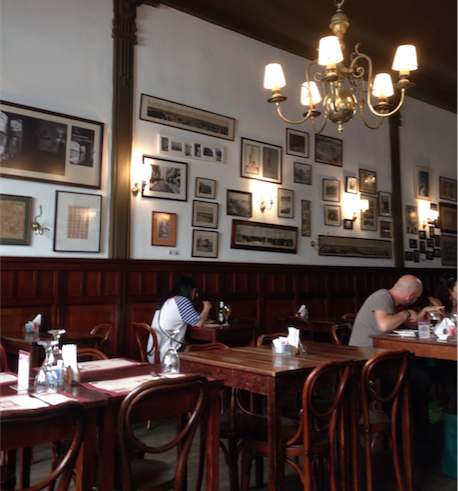
Café Brasilero
On the more modern end of things is Jacinto, which I found ideal for both tasty salads and decadent pastries like alfajores dipped in chocolate and covered with coconut shavings. Chef and owner Lucía Soria studied under the renowned Francis Mallamnn.
READ MORE: WHY TO VISIT COLONIA, ANOTHER FOODIE GEM IN URUGUAY
Maybe it’s the hippy vibes and newly liberal character taking hold of the city, but there is also an abundance of health food stores and restaurants serving vegan and superfood fare. One of the best in this realm is La Fonda. Here, friendly staff served me heaping portions of vegan spiced quinoa, roasted seasonal veggies, and fresh flatbread with homemade chutney.
Montevideo is the capital of a small country whose sights, sounds, and savory delights are set in a wonderfully mellow atmosphere. My impromptu trip ended up being one that soothed my soul in ways I hadn’t known I needed.
Ready to visit the gem of South America? Check out Intrepid’s range of Uruguay tours.
(Image credits from top to bottom: iStock/timelineberlin, iStock/quelo73, Lily Cichanowicz x2, iStock/Global_Pics, Lily Cichanowicz.)
Feeling inspired?

Lily Cichanowicz
I am an American writer and journalist currently based in Berlin where I settled down after several wayward months of meandering across Europe, Asia, and Central America. My interests on the topic of travel include exploring the ethics and benefits of cultural interchange as well as recounting my culinary adventures abroad. You can find out more about my work at lilycichanowicz.com or on Twitter @liliaceaeflora.
You might also like
The 7 best places to go on a..., 10 surprising facts about ethiopia, galapagos or madagascar which unique destination should be..., travelling to chile here’s the best time to..., 10 reasons to visit samoa, the 10 antarctica questions you want answered, australia or new zealand where to go on..., 10 epic spots to stop at on your..., small group travel vs coach tours: which is..., costa rica or mexico: which country to check..., 7 of the best destinations for solo travellers....
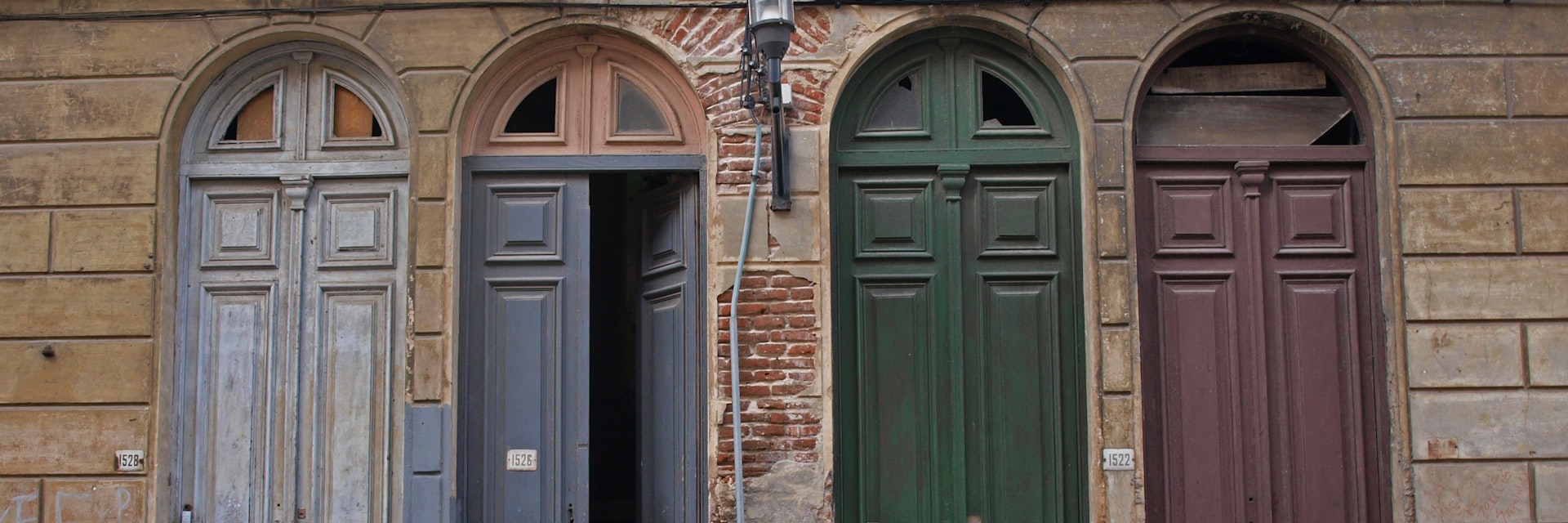
Art Deco and neoclassical buildings jostle for space in Montevideo while music, theater and the arts are alive and well. Plus, there's a strong international flavor in this vibrant, eclectic city.
Best Things to Do
Leave the planning to a local expert.
Experience the real Montevideo. Let a local expert handle the planning for you.
Attractions
Must-see attractions.

Museo Nacional de Artes Visuales
Uruguay’s largest collection of paintings is housed here in Parque Rodó. The spacious rooms are graced with works by Blanes, Cúneo, Figari, Gurvich,…

Teatro Solís
Just off Plaza Independencia, elegant Teatro Solís is Montevideo’s premier performance space. First opened in 1856, and completely renovated during the…
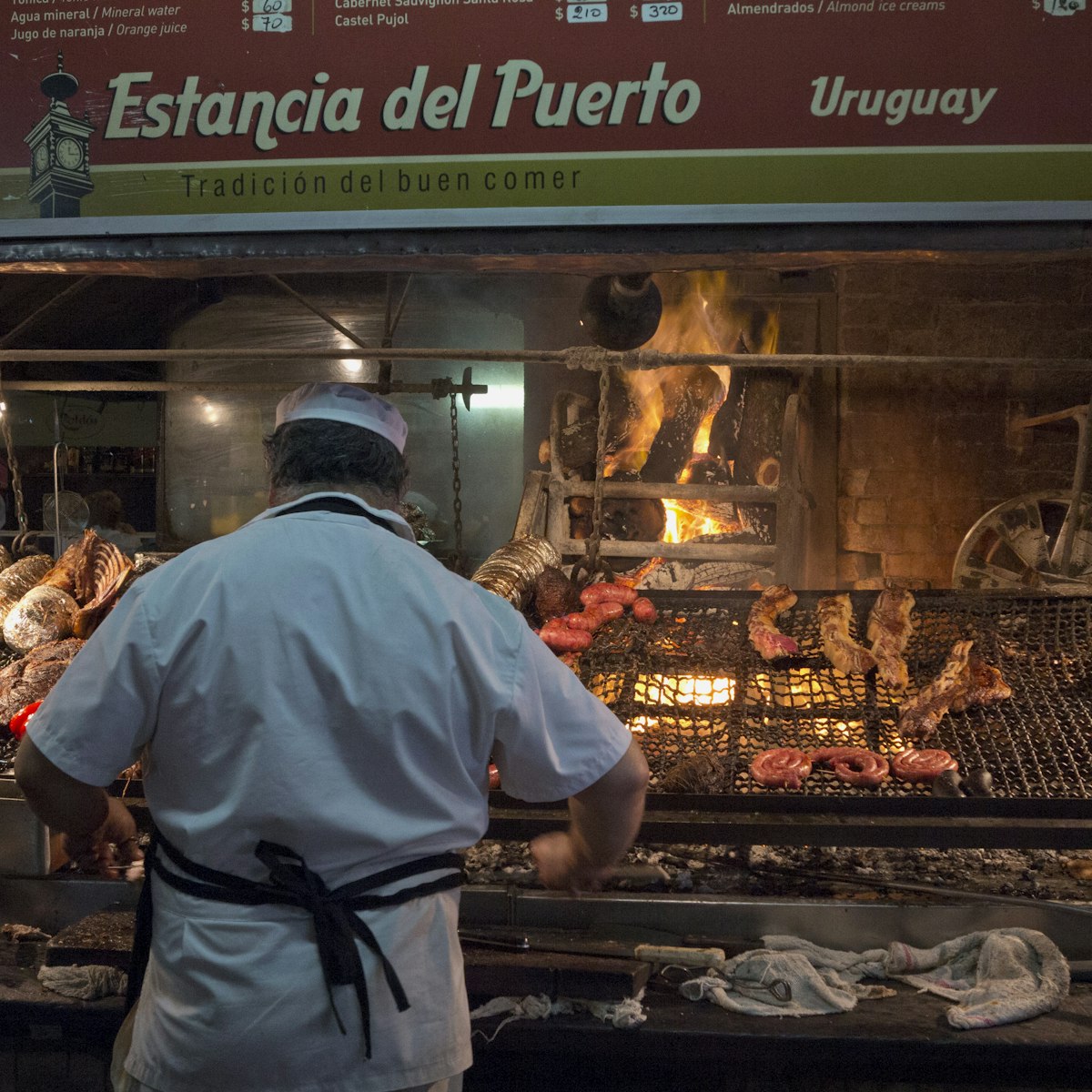
Mercado del Puerto
No visitor should miss Montevideo’s old port market building, at the foot of Pérez Castellano; the building's impressive wrought-iron superstructure…

Museo del Gaucho
Housed in the ornate Palacio Heber, this museum eloquently conveys the deep attachments between the gauchos, their animals and the land. Its superb…
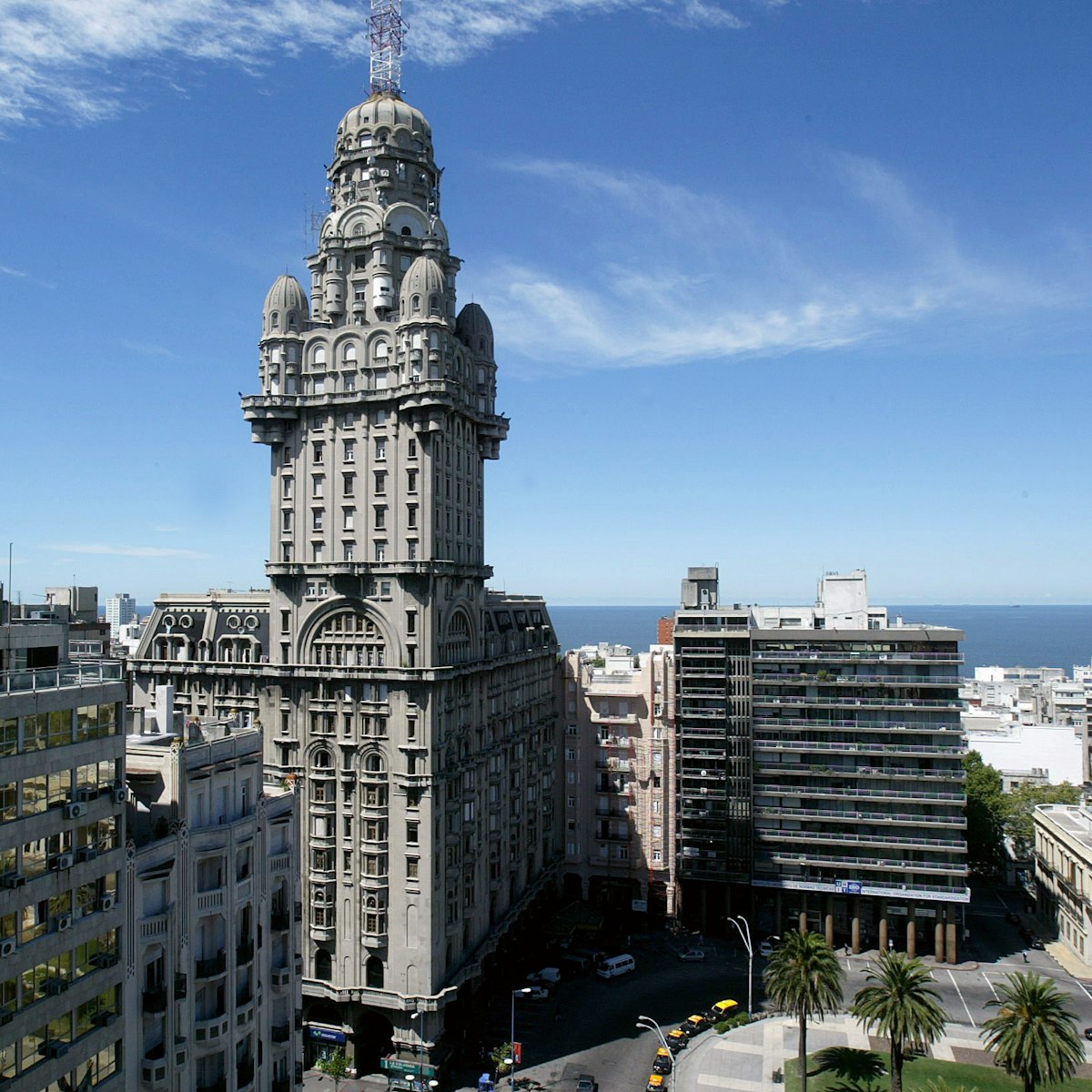
Palacio Salvo
On the east side of the Plaza Independencia, the 26-story structure with the crazy beehive hairdo is Palacio Salvo, the continent's tallest building when…

Plaza Matriz
Also known as Plaza Constitución, this leafy square was the heart of colonial Montevideo. On its west side stands the Iglesia Matriz, Montevideo’s oldest…
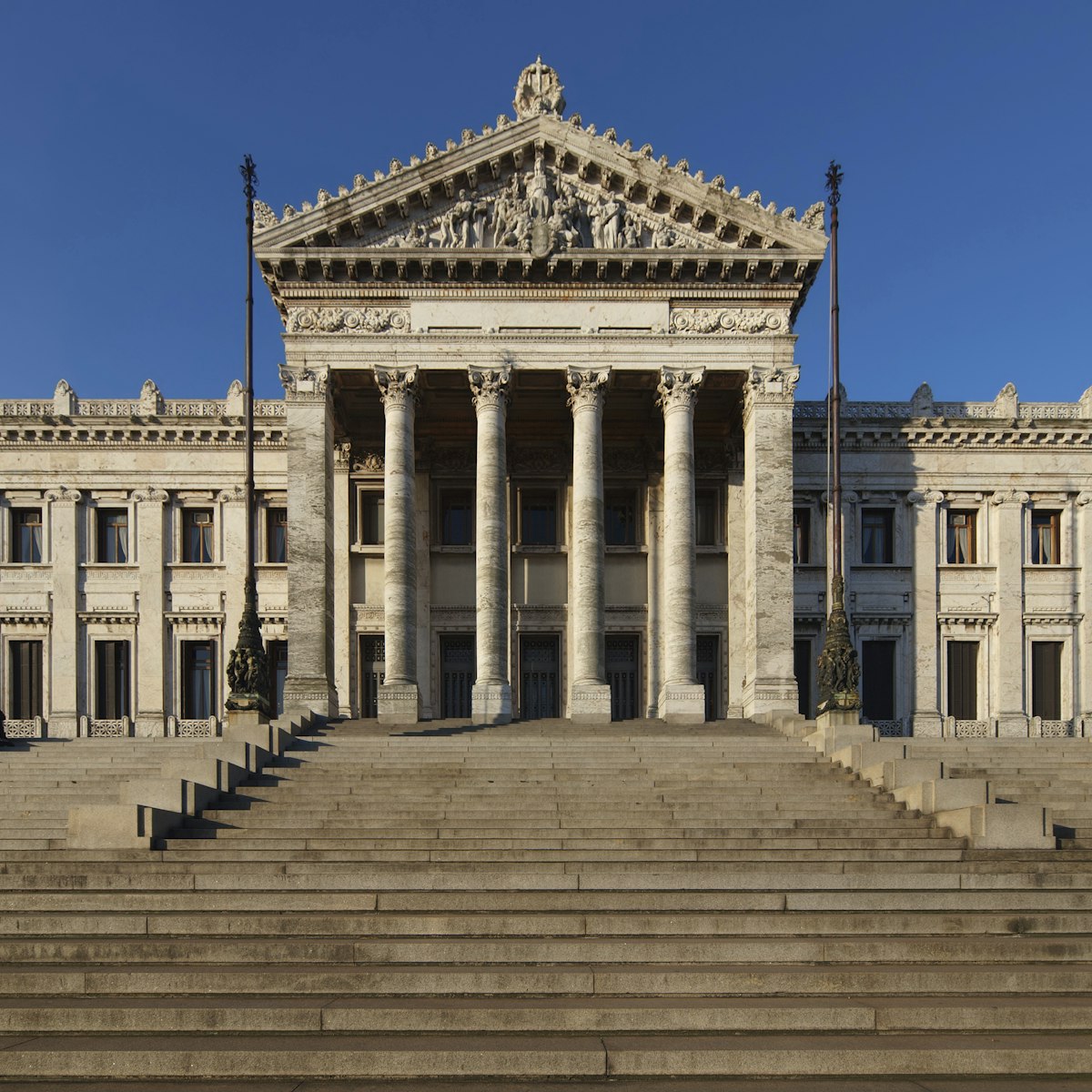
Palacio Legislativo
Dating from 1908, and still playing host to Uruguay’s Asamblea General (legislative branch), the three-story neoclassical parliament building is also open…

Plaza Independencia
Montevideo's largest downtown plaza commemorates independence hero José Artigas with a 17m, 30-ton statue and the subterranean Mausoleo de Artigas, where…
Top picks from our travel experts
A local’s guide to montevideo, uruguay.

Castillo Pittamiglio
On the Rambla between Punta Carretas and Pocitos is this eccentric legacy of local alchemist and architect Humberto Pittamiglio. Its quirky facade alone…

Museo del Fútbol
A must-see for any fútbol (soccer) fan, this museum displays memorabilia from Uruguay’s 1930 and 1950 World Cup wins. Visitors can also tour the stands.

Museo del Carnaval
This museum houses a wonderful collection of costumes, drums, masks, recordings and photos documenting the 100-plus-year history of Montevideo’s Carnaval…
Plan with a local
Experience the real Uruguay
Let a local expert craft your dream trip.
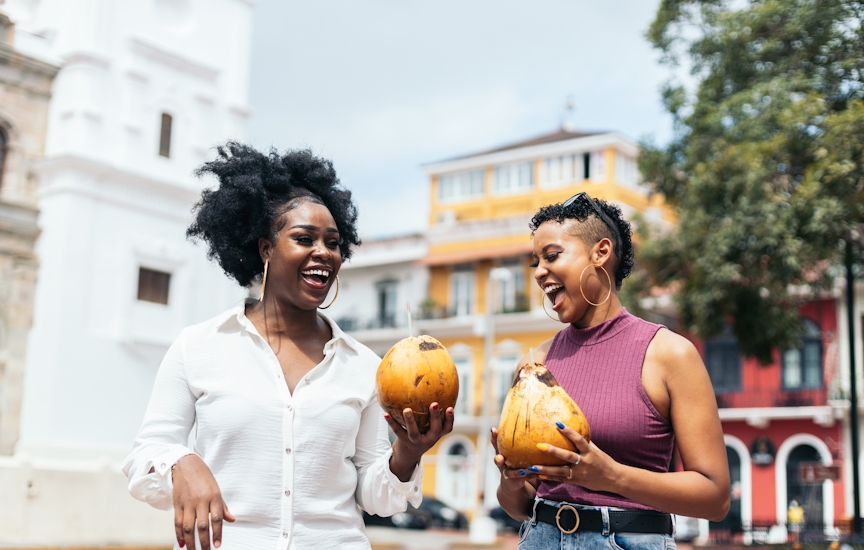
Latest stories from Montevideo

Best in Travel - 2023
Nov 15, 2022 • 7 min read
Lola Méndez takes you on a four-day culinary adventure, eating your way through South America's secret foodie destination.
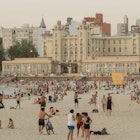
Oct 25, 2022 • 6 min read

Jan 22, 2019 • 6 min read
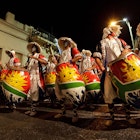
Sep 25, 2015 • 4 min read
in partnership with getyourguide
Book popular activities in Montevideo
Purchase our award-winning guidebooks.
Get to the heart of Montevideo with one of our in-depth, award-winning guidebooks, covering maps, itineraries, and expert guidance.
Steals & Deals: Up to 77% off wireless earbuds, packing cubes, more travel essentials
- TODAY Plaza
- Share this —

- Watch Full Episodes
- Read With Jenna
- Inspirational
- Relationships
- TODAY Table
- Newsletters
- Start TODAY
- Shop TODAY Awards
- Citi Concert Series
- Listen All Day
Follow today
More Brands
- On The Show
I’m a travel expert. These are 5 things I would never do when planning a trip
Traveling is one of life’s great joys — from seeing new places to meeting people from another culture, seeing the wider world is something to be treasured. But even the most experienced travelers can find some moments stressful.
On May 8, travel journalist Mark Ellwood joined TODAY to talk about some of his best tips after a lifetime of living out of his own suitcase.
He offered five things he would never do if you want your trip to go off without a hitch.
1. Travel without insurance
Ellwood says that travel insurance is often very low cost and can save you in a pinch.
“It’s the same price as a cup of coffee per day, give or take, and buys you peace of mind when something goes awry," he said.
Ellwood notes many credit cards offer built-in insurance for any trips purchased on that card but he is also a fan of travelinsurance.com or insuremytrip.com. Both are marketplaces where you can shop around for the best plan.
2. Overlook considering all airports
While it might not be the most convenient, Ellwood suggests checking the wider metropolitan area for flights at nearby airports.
“Look for airports nearby — you might score a deal better by searching for, perhaps, Stewart, New York, rather than Newark, (New Jersey)," he said. "Always check nearby airports to both your point of origin and destination.”
3. Exclude lesser-known carriers
“Don’t forget lesser-known carriers," Ellwood says, adding that Breeze Airways his is go-to carrier. He notes that Breeze's home bases are in the southeast and include the following:
“Don’t forget lesser-known carriers,” Ellwood says, adding that Breeze Airways his is go-to carrier. He notes that Breeze’s home bases are in the Southeast and include the following:
- Charleston, South Carolina
- Tampa, Florida
- Norfolk, Virginia
- New Orleans, Louisiana
- Fort Myers, Florida
4. Neglect geotagging luggage
There's no worse feeling while traveling than waiting for your luggage to appear on the baggage carousel, only for it to never materialize.
But geotagging your luggage can at least help you track it down.
“Geotag your luggage — whether AirTag or similar," Ellwood says. "You’ll always know where your luggage is ... or isn’t."
If your bag doesn't make it to your final destination, you can always tell the airline where it is to help them track it down.
5. Think there’s a magic time to book a flight
Despite years of rumors, there's really no day or time that's best to book your travel.
“There is no magic day date time to score a deal," Ellwood says. "Instead, the best time is whenever you receive an alert that your route’s gone on sale."
The way to do this is to track your flights ahead of booking them. Ellwood suggests using Google Flights — just type in where and when you're looking to fly, then toggle the alert tab so you'll be notified of any changes.
"This allows you to watch how much it’ll cost and swoop in the moment an airline cuts the price when you want to fly," he says.
Sam Kubota is a senior digital editor and journalist for TODAY Digital based in Los Angeles. She joined NBC News in 2019.
Choose your own adventure: Where to go and how to save on summer vacations

Revenge travel is so last year.
“It's not necessarily about just getting out of the house anymore,” said Sydney Stanback, Global Insights and Trends lead at Pinterest, which has seen more than 1 billion travel searches and more than 10 billion travel saves over the past year.
Sure, many of the usual suspects are once again among the most popular destinations across multiple search engines this year, but she said this summer, “It's more so about traveling with intention.”
According to NerdWallet’s Summer 2024 Travel Report , 45% of Americans plan to take a trip requiring a hotel stay or flight this summer with expenses averaging just under $3,600. A fifth of those travelers expect to go into debt to pay for vacations.
Here’s what to consider when booking a summer trip, including where to go, when to travel and how to save:
Learn more: Best travel insurance
What is the best place to travel in summer?
The answer is subjective, especially this summer.
“Everyone's kind of choosing their own adventure based off of what their needs are for travel,” Stanback said.
Pinterest’s Summer 2024 Travel Report found summer travelers are most interested in adventure, exploring mysterious or uncharted destinations, and rest. Searches for “quiet life” jumped 530%, but that doesn’t mean the same thing to everyone.
“My mother actually just took a yoga retreat to Panama,” Stanback said. “That's what she needed to do in order to get the rest that she needed and the well-being that she needed. But for me, when I think of rest and restoration, I simply think about going to a beach spa and just sitting and being by myself.”
Solo travel remains popular. Solo travel searches reached an all-time high in Google in January, but again, not for everyone.
“For Gen Z specifically, that need is to gather and reconnect with their community because they were in isolation for so long and during very meaningful moments in their lives,” Stanback said. She noted group travel and road trips are of keen interest to Gen Z.
“It's not necessarily about traveling and going out and going to restaurants and going to bars and clubs,” she added. “We actually see that a lot with younger generations. They’re kind of stepping away from that and really considering their well-being when they're taking time off.”
Where do most tourists go in summer?
Expedia’s Summer Outlook and Google Flights identified the same cities among their most searched summer 2024 destinations based on flights, though rankings varied by platform.
Top 5 domestic destinations
◾ Orlando, Florida
◾ Los Angeles
◾ Las Vegas
Top 5 international destinations
◾ Cancun, Mexico
◾ Paris, host of the Summer Olympics
Allianz Partners found slightly different results in their analysis of “more than six million flight itineraries for trips between five and eight days in length for travel booked between Memorial Day weekend and Labor Day.”
Instead of LA and Vegas, Allianz named Boston and Honolulu among this summer’s top five domestic destinations. Internationally, San Jose del Cabo, Mexico; Oranjestad, Aruba; and Punta Cana, Dominican Republic, made Allianz’s top five, instead of Rome, Paris and Tokyo.
“I am expecting crowds to rival last summer's in popular overseas cities,” Expedia’s travel expert Melanie Fish said, noting how places like Barcelona and Venice are trying to curb overtourism. “They're trying fees and if that's not enough, they're going to have to go even further.”
How can I save on a trip?
Summer trips are already costly for many travelers. “Americans with household income under $100,000 accounted for nearly half (46%) of intended leisure travel spend in summer 2023,” according to Deloitte’s Facing travel’s future report from April.
Expedia’s Fish shared five tips for booking summer 2024 vacations:
◾ Bundle your trip. Booking airfare and a hotel at the same time can earn you deep discounts.
◾ Travel midweek or later in the summer if it's an option. You'll save money and save yourself from fighting crowds.
- ◾ Fly early in the day … The early bird who takes the first flight of the day will typically get a better price and a lower chance of delays and cancellations. ◾ Book once, earn twice. You can stack rewards from your travel credit card (and) your airline.◾ Just go. Don't pressure yourself to create the trip of a lifetime … Do it in a bite-sized chunk if possible.
'Expensive in every way': What travelers should expect this summer
How far ahead should I book travel?
“The sweet spot is now,” Fish said. “We're within that 21- to 60-day pre-travel window to save around 15% on airfare, so now is the time to plan. That means ready, set, but maybe wait until August to actually go.”
She said travelers can save an average of $250 on international flights if they wait until the peak summer travel season passes.
“It's 15% cheaper on average to fly domestically in August versus June, 30% cheaper to fly to Europe in late summer, and 55% cheaper to fly to Mexico and the Caribbean in August,” she said. “Of course, August is peak hurricane season , so that has something to do with that price dip.”
Cruise ship drags dead whale into New York, prompting investigation
The collision with the 44-foot-long, endangered sei whale could have been avoided, experts said.

A cruise ship arrived in New York Harbor with a dead sei whale pinned to its bow, a revelation that has spawned a federal investigation and has led biologists to examine the whale’s carcass to determine the cause of death.
The MSC Meraviglia was returning Saturday from a Bermuda cruise when it sailed into the Brooklyn Cruise Terminal with the 44-foot-long sei whale affixed to its front. MSC, a Geneva-based cruise line, confirmed the incident “with deep regret” in a statement and said it had immediately notified authorities. The National Oceanic and Atmospheric Administration’s Office of Law Enforcement is investigating.
On Wednesday, the whale was towed to Sandy Hook, N.J., for a necropsy. According to NOAA, officials discovered broken bones in the right flipper, tissue trauma in the right shoulder blade region and a belly full of food. Biologists took samples for biotoxin and histopathologic analyses. NOAA spokeswoman Andrea Gomez said the tissue and bone samples can help biologists determine whether the whale died before the collision with the ship or because of it.
The Atlantic Marine Conservation Society is leading the whale examination. Results from the exam could take days to weeks, said Kathleen Collins, senior marine campaign manager with the International Fund for Animal Welfare .
Based on the findings released so far, Andy Rogan, science manager at Ocean Alliance , a whale research and conservation nonprofit, said the cruise ship probably caused the whale’s demise. If so, it would have been a sudden death.
“Whales are huge animals, but compared to a ship that size, it’s still a massive impact. So much weight and power is hitting that whale,” he said. “It’s almost certain that a ship strike killed that whale.”
According to NOAA, vessel strikes and entanglement in fishing gear are the biggest threats to sei whales, an endangered species that inhabits deeper waters off the coastline. Population figures are elusive, but NOAA documented roughly 6,300 sei whales between Florida and Nova Scotia from 2010 to 2013.
Sei whales are feeding during this time of year, and Collins said the whales eat on the surface, placing them in the potential bull’s eye for collisions with a ship’s bow. She said crew members and passengers might not have felt the bump because of the ship’s size. The MSC Meraviglia weighs 171,598 tons; sei whales weigh up to 50 tons.
“It really is a tragic case where this strike likely happened and everyone was oblivious until they came into port,” Collins said. “They likely don’t even know exactly where they struck the whale, either.”
NOAA urges boaters operating along the East Coast to cruise slowly, stay alert and report any sightings of right whales or dead, injured or entangled whales. In its statement, MSC said it follows comprehensive measures to avoid accidents with marine life, such as training deck officers with the Ocean Research & Conservation Association and adjusting itineraries in regions populated by whales.
Collins said voluntarily reducing vessel speeds can help avoid run-ins. However, she said, cruise ships and large tankers prefer to move briskly because they are on tight schedules.
The Cruise Lines International Association did not respond to a request for comment on the industry’s safety protocols.
“The chance of mortality with a vessel strike goes down pretty substantially as you reduce the vessel speed,” Collins said.
Spotters on deck also would help a cruise ship avoid a whale, she said. Such crew members are trained to look specifically for whales in key locations. Marine outlets, agencies such as the Coast Guard and the Whale Alert app share information about whale sightings and locations.
Rogan said there is no “silver bullet” for ships to avoid whales, but advances in technology can help lower the threat. He said hydrophones can pick up whale acoustics, information that NOAA could then disseminate to vessels. At a recent workshop, Rogan said, he learned about infrared cameras that can detect whales within a 360-degree range, particularly in front of a vessel.
Rogan urged the public Thursday to share its outrage about the incident with government agencies and with the cruise line. Collins said she hoped the incident would inspire the cruise industry to act as a better steward in the waters it shares with vulnerable marine life.
The MSC Meraviglia, she noted, is headed next to Canada, a critical ground for North Atlantic right whales, including mothers and their newborn calves.
A previous version of this article misstated the maximum weight of sei whales. It is 50 tons, not 10 tons. The article has been corrected.
More cruise news
Living at sea: Travelers on a 9-month world cruise are going viral on social media. For some travelers, not even nine months was enough time on a ship; they sold cars, moved out of their homes and prepared to set sail for three years . That plan fell apart, but a 3.5-year version is waiting in the wings.
Passengers beware: It’s not all buffets and dance contests. Crime data reported by cruise lines show that the number of sex crimes has increased compared to previous years. And though man-overboard cases are rare, they are usually deadly .
The more you know: If you’re cruise-curious, here are six tips from a newcomer. Remember that in most cases, extra fees and add-ons will increase the seemingly cheap price of a sailing. And if you happen to get sick , know what to expect on board.


35+ Helpful Japan Travel Tips To Know BEFORE You Go
J apan is a remarkable country filled with so much history, natural beauty and modern touches. I’ve just returned from my second trip to Japan and was reminded of so many things I had forgotten about the country! Traveling in Japan is an amazing and enriching experience, however it is also a country filled with traditions and unique ways of operating that visitors may not be used to. Below I share the best Japan travel tips to help you make the most of your trip.
Disclosure: Some of the links in this post are affiliate links, meaning at no additional cost to you, I will earn a commission if you click through and make a purchase.
Top Japan Travel Tips to Know BEFORE You Go
Before you head off to Japan, there are a few things you will need to know in advance and to plan for. While most things on this list can be figured out while in country, a few MUST be done before you leave your home. Whether you opt for the classic tourist circuit Japan itinerary or get off the beaten path , these tips will go a long way to help you enjoy your trip to the fullest.
Get A Japan Rail Pass in ADVANCE
If you want a Japan Rail Pass , it is only available to purchase for overseas tourists BEFORE they enter the country. Once you are in country, you can no longer purchase a JR Pass, so if you plan to use the bullet train between destinations quite a bit, this is a must do before you leave. You must also give yourself plenty of advance notice as well as the pass is still mailed to a physical address.
However, I will say that sometimes it’s not actually cheaper to get a JR Pass. Research the Shinkansen trains here and which trains you plan to take to budget accordingly. Often you can take a train that is just a bit slower, for a lot cheaper.
Regardless, the most important piece of advice for the JR Pass is once it is activated you CANNOT lose it. If you lose it, it is gone. You will not be able to print a new pass. You will not be given a refund. You cannot buy another pass until it is expired as it is connected to your passport. A fellow traveler on my recent trip had this experience, and it was not pleasant to lose a $600 pass on day 1 of his trip!
Keep Your Train Tickets With You
Along with the JR Pass information above, another thing to know when traveling on the trains in Japan is to keep your train ticket with you at all times. One, you will often be asked to show it on many longer distance train journeys and you will need it to exit the stations. Even better is to get a transportation card mentioned below for city travel as it is a little less easy to lose. Trust me, these tiny slips of paper are easy to misplace!
Get an IC Transport Card
There is nothing worse than arriving to Japan, transferring through the airports and needing a drink but unable to get one! Japan’s vending machines and many shops do not take US or foreign credit cards. What do you do when you only have a vending machine as an option in the airport? The best way to deal with this is to download and preload an IC card BEFORE your arrival. Not only does a Suica card or Pasmo card provide easy access to public transportation, it can also be used at vending machines and for small purchases at convenience stores.
Insider Japan Travel Tips You MUST know: If you have an iPhone, you can go to your wallet, click the plus sign, then click Transit Card. Now you can search “Japan” to see the Suica option. Now you can select the amount to add to your card and go through the payment portal. BAM. You are ready to roll upon hitting the ground in Japan.
If you cannot load it on your phone, you can purchase Suica Cards at most train stations. You can also order Suica Cards online and have them mailed to your house abroad prior to your trip to be sure you will have access when in the country.
Learn Basic Japanese Words
While you might find some level of English in the big cities or top tourist spots, much of Japan still exists without much English. I always find this interesting, but again, how cool that they have managed to keep their language and Japanese culture so true to themselves! That said, if you plan to get off the beaten path at all, make sure you know a few phrases and have your Google Translate handy!
The top phrases I found useful while in country include:
Hello – Konichiwa
Thank you – Arigato
Thank you very much – Arigato Gozai mas
Delicious – Oishi
Cute – Kawaii
Cheers – Kanpai
Sorry, Excuse me, Pardon me – Sumi masen
Download Google Translate
One of the most important travel tips I can provide is to download the Google Translate app and Japanese packet as you will often need it. As mentioned above, there is often still quite a bit of a language barrier in Japan, especially in smaller towns or off the beaten path at all. Having Google translate will help you when you want to say something to someone but can’t communicate. The translate will provide it in text for the other person to read which is super helpful. Additionally, you can actually just turn on your microphone and let a person speak into your app and get the translation quickly. This is a great help throughout Japan!
Cash is King
Tipping is not customary.
Contrary to the West, tipping is not customary here and in some cases can be considered rude. To be honest as an American who is asked for a tip at every turn, this was a welcome change. I was so happy to not have to worry about tipping at restaurants, bus drivers or our guides. If you are unsure you can ask, but in general it is not done!
Don’t Expect a Western Breakfast
One of the things I most remembered from my first trip to Japan was the very different, for me, breakfast options. While I am all for trying things and diving into the local culture, sometimes you want a little something that is reminiscent of home. For me that is often breakfast. At most restaurants and hotels, you can expect to see very little western offerings for breakfast. If you want something you are used to (coffee even) you will need to seek out western establishments. I don’t often go to McDonalds at home or abroad, but I sure do like that sausage egg mcmuffin after a week in Japan!
Walk on the Left Side of the Street
Without even noticing it, I found myself crossing over a path of people in the underground to get on the “right” side of the walking path. You will see that people traffic flows very smoothing in Japan and most of that is because of how the Japanese walk on the correct side. Watch the flow of food traffic and you will quickly see where you need to be! When I was in Sapporo, there was an entire city of underground walkways. I quickly realized that everyone was sectioned off in the direction of their travel. It made it very easy to get through even with large end of day crowds. But beware of those very useful, but pesky bumps for sight impaired. They are everywhere and are not really an indicator of which side of the street you should be on!
Get Ready to Take Off Your Shoes
While it isn’t as common to remove your shoes in Japan as it is for say India, you will need to remove your shoes for more traditional establishments including restaurants. We had to remove our shoes at the front door to one of our hotels even and couldn’t put them back on until we were leaving! I love not wearing shoes indoors, but it was not always easy especially when I was wearing my Blundstones that are so difficult to get on/off!
Take Your Passport Shopping
If you would like to take advantage of tax-free shopping, make sure to take your passport with you when you go shopping. Some shops like UNIQLO will automatically give you the tax free savings right away once they see your passport, helping you to avoid doing it at the airport. Other shops will require you get a refund at the airport. If you plan to do any shopping, just take it with you!
Respect the Japanese Traditions
One of the most amazing parts of traveling to Japan is how it is SO different than what many of us are used to. Historically, Japan has been a closed off society. Most of the country is Japanese origin with little Western influence. It is one of the many things that makes it so unique. That said, the most important thing is that you recognize and respect their traditions even if it’s very foreign to you. Take time to learn and ask about the traditions and practice them during your visit. It’s a great way to show respect and fully immerse yourself in the country.
Prepare Yourself for A Japanese Onsen
One of the most beautiful parts of Japanese society is the public bathing system of the onsen. These hot springs are located throughout the country in stunning locations. It is definitely a big part of life here and something tourists should try at least once. I will warn you though, that unless you are having a private onsen, they are completely nude and can be mixed gender as well. I could write an entire article on how to visit an onsen as there are customs and rules to know, but in general you will need to fully shower and bathe with soap before entering the pools, they are totally nude and many do not allow people to enter with visible tattoos. If you are staying in a ryokan with no private shower facility in your room, make sure the staff are aware of any tattoos in advance so they can make arrangements for you.
Transportation Etiquette
Don’t be afraid of shopping at convenience stores.
In Japan, convenience stores are everything. And EVERYWHERE! There are so many varieties from 7-11 to Lawson’s to Family Mart or more local shops like SeicoMart in Hokkaido that you can never be very far from one. Here you can literally get anything you want including breakfast or dinner! You can find ready made meals like fried chicken in Hokkaido to udon noodles, tempura, sandwiches and more. They also have chargers if you happen to have soaked your phone and need a cordless charger. They have candy and sweets, beer, iced coffee and so more more.
Get Ready to Carry Your Trash Around
One thing that is always a surprise to me when I’m in Japan is the lack of trash cans in public spaces. They are not on the roadsides or even that frequently found in shops. You will carry a lot of trash in your pockets all day long! Carry a small plastic bag for your trash to make life easier, but do remember to say no to plastic bags at most places as they are given very freely still or a minimal extra cost.
Separate Your Trash
Japan is not super up on the “use less plastic” concept, but they are very strict about separating their garbage. Hopefully this means they have a much better track record of recycling than we do in the US! If you are not used to separating your trash, educate yourself a bit on what is compostable, what is recyclable and what is landfill trash. At big festivals or events you will find very trash cans (as mentioned above), but when you do, they will expect you to seperate it all into the correct containers.
Eating, Drinking & Smoking in Public
While I am not 100% if there are rules on this, but in general you will notice that the Japanese people do NOT eat, drink or smoke while walking. There are of course designated areas for smoking, which is not allowed all over the place. But for drinking your morning coffee on the way to the train station? Nope, you won’t see Japanese people do this. Is it an unspoken rule or just a custom I am not certain, but I tried to follow suit as much as I could.
Throughout history, Japan has been a closed off society. Would you believe that almost 99% of the country is Japanese? The result is a unique culture with little Western influence and little English. So don’t be surprised if you ask questions or try to converse with people, but don’t receive much of a response. It’s not because they are rude, they simply know they can’t speak your language, and you likely can’t speak Japanese
Japanese Toilets Will Spoil You
Ok, one of the BEST things about Japan has to be their toilets. From the airport to public restrooms, you will find some really great toilets to literally write home about! My absolute favorite that I didn’t realize until I got back home was the heated seats. It really does feel so nice to sit down on a toasty toilet in the middle of the night. There are also several bidet options, drying options and of course also “privacy” sounds/music for many public toilets. Make sure to have your phone handy though as you may need to translate some of the buttons if they aren’t obvious. I have found myself stuff with the water on, not knowing how to turn it off! All of that said, you will also still find squat toilet options in most public bathrooms. They typically have a sign on the door indicating what type of toilet you can expect.
Get an e-SIM For Your Phone
If you haven’t tried an e-SIM yet, you need to get on the wagon. They are SO easy to use, super affordable and available all over the world. For my recently 2 week trip, I used a 10 GB e-SIM card which allowed me to have data access wherever I went. While there is often free Wi-Fi around major cities, often the log-in screen is only in Japanese which makes it challenging to login quickly. Get $3 off your first purchase at AIRLO using my code: KARILY0402
Stay at Ryokan At Least Once
One of the coolest Japanese cultural experiences I can recommend is to stay in a ryokan. A ryokan is basically traditional Japanese inns. While they come in many forms these days including a super traditional ryokan where you sleep on the tatami mats, you can also opt for ones that do have more “western” beds. I have stayed in all various forms and personally I love being able to plop down in an actual bed, but for a one night experience I would recommend trying the super traditional way as well.
As part of the experience, you might find that you have a traditional kaiseki meal for dinner or breakfast, you might also have no private shower in your room or have to take your shoes off at the hotel entrance. It is so fun and cool to see Japanese locals having their dinner or breakfast in the provided yukata (robe in the room) and wearing the slippers. I find this to be one of the most immersive cultural experiences you can have in Japan and well worth the price tag. (Shockingly they are usually quite a bit more expensive than western style hotels).
Japan is Not THAT Expensive
Japan has a reputation of being an excessively expensive country. While it is definitely more expensive than it’s other Asian counterparts, it is also not as pricey as some places in Europe! There are ways to reduce your expenses quite easily. One recommendation to mix up accomodation options – stay in a traditional ryokan, but also stay in chain hotels like Tokyu Stay. We had a great room at Tokyu Stay with a washer/dryer in our room for less than $80 a night. There are plenty of small shops for meals that will run you $5-10 a meal, while more traditional kaiseki meals will cost more. The biggest expense tends to be transport between cities, so that is why it is important to price it out in advance and check for internal flights and getting the JR Pass.
Do NOT Lose (or Keep) Your Hotel Key Card
Traditional hotels still use actual keys, so those are much easier to keep track of and not loose. If you are worried about losing one, you can drop it off with reception before you go out for the day.
Japan Trains Run VERY Timely
While I can’t say that Japanese trains run on time always because I have experienced delays with them, overwhelmingly they do run on a very tight schedule with very little disturbances. This is great as long as you are early, but it’s tough when you are running late! Always plan for delays in the train station and arrive with plenty of time.
Check for Seasonal Festivals
Regardless of when you visit Japan, there is sure to be some type of festival happening. These are often the best places to fully immerse yourself into the culture. For example, the cherry blossoms in the spring often have many festivals that accompany it, which can be quite fun. In Sapporo, there is an Autumn Festival in September that brings in tons of amazing food options every day for visitors to sample.
Bring Snacks With You
Whether it is a bus or train journey, do not plan on food being available. There are no dining cars on trains regardless how many hours they are. We found out the hard way that we needed to always have water and snacks with us because options were not always available. Shockingly though, you can eat and drink on the long distance trains, just make sure to take all of your trash with you.
Tap Water is Safe to Drink
One of the best things about travelling in Japan is that the tap water is safe to drink. I loved not having to purchase water bottles all the time or worry about water being bad quality. I even drank from a mountain spring in Rishiri Island that was crisp and cold and so delicious. Bring you recyclable water bottle and fill up in the hotels every day instead of buying more plastic.
Public Space & Japanese Etiquette
Japan has a concept called “ma” or personal space. Respect it, especially in crowded places with lots of people. Many of these etiquette rules are unspoken, but if you take time to look around you, you will notice that the Japanese people strictly adhere to them. Again, one of the best Japan travel tips I can provide is to look around you and follow what the locals are doing!
Wear Your Bag In Front on Crowded Trains
In places like Paris or New York, you might see people wearing their backpacks on their front on busy trains, but in Japan this is not for safety as much as it is a respect for fellow passengers. When you wear your bag on the front you are making sure that you are not accidentally hitting other people. This culture is one that is very fond of respect for others and I just love this example!
Safety in Japan
Overall I feel VERY safe in Japan at all hours of the day and night. Trains can get super crowded and you will see people wearing their bags in front like I mentioned above, however that is not necessarily for safety as it might be in other cities. All of that said, I would still be aware of your belongings when in crowded public places and wear your mobile on a strap like this one to make sure it isn’t snatched!
Use Google Maps for Train Travel
If you don’t already use Google Maps, one of my top Japan travel tips is to download it now! One of the coolest features of Google maps is that it will tell you how to walk to a train station, which train to get on and even which exit to look for when you arrive to the destination train stations! However it is important to note that oftentimes your internet may not work in the subway stations, so it is a good idea to have it all loaded before you get underground.
Expect Lines at Restaurants
Dietary restrictions are challenging.
In Tokyo you can often manage with dietary restrictions more easily, but once you leave the big city, it can often be quite challenging to deal with dietary restrictions. I personally am allergic to MSG, which meant asking everywhere if I could eat the food prepared. For the most part, most chef’s knew instantly whether they used it or not. In the more rural parts of Japan in the far north of Hokkaido, I ran into a few more challenges. If you are a strict vegetarian, it is also a bit cumbersome to find food that does not include any fish sauce as it seems to be included in a ton. Just take your time and ask around as there are often places that can cater to your needs.
An International Drivers License is Required in Japan
If you plan to hire a car and self drive during your visit to Japan, make sure you acquire an International Driver’s license before you leave home. If you are in the US, this is easily obtained at AAA for around $20 in one day. This is just an additional piece of paper that says that yes, your license is for driving and you are able to drive outside of your home country.
Japanese Wait for the Walking Sign
Just like in Germany, for the most part Japanese people do not jaywalk or cross until the walking sign is illuminated. I have seen a few people here and there cut across the road or go before the walk sign is lit up, but by far the general rule is that you wait patiently on the sidewalk!
Try All the Drinks, But Don’t Expect Much More than Coke
In Japan you will quickly notice that the only western drink you can purchase by and large is Coca Cola and not even diet, just regular coke. I was so surprised when our Japanese exchange student had never had a Sprite, but after my recent visit I was reminded why – it’s tough to come by! Only occasionally did I see a Sprite in a convenience store and almost never in a vending machine. Overall, you will be presented with a ton of drinks that are only Japanese!
Also, I found out after much sampling and discussion with our Japanese hosts – you will never find sweetened tea in the vending machines unless it is Chinese or American. They do not put sugar in their green tea at all. I purchased MANY tea varieties looking for a sweet option, with absolutely no luck!
Buy From ALL the Vending Machines
One of my top Japan travel tips includes buying stuff from the vending machines. I just love the vending machines in Japan. And I love that you can purchase almost anything in the world from them. At one of my onsen visits, they had a vending machine with underwear (new!), razors, earbuds and more. We saw a vending machine selling frozen ramen which would be the perfect take out food if you lived there. You will of course find drinks machines everywhere you go as well. My favorite one of the entire country has to be the “cake in a can” vending machine in Sapporo. The cake was amazing as is the concept. It was pricey, but worth it at least once.
Another great one to look out for and try is a coffee vending machine. You can usually adjust how strong you want the coffee, how much sugar and how much milk. It is so fun to just pay 100 yen and have a hot coffee. Additionally, on most regular machines you can look for the signs that say hot/cold as some machines dispense BOTH hot and cold drinks. You want a hot tea, but your friend wants a cold drink. You got it. Seriously, these machines are the best and one of my favorite things to check out while wandering around towns!
Japan is a country with a rich culture and history, so embracing its traditions and customs can really enhance your travel experience.
There really is no “best time” to visit. There are distinct seasons, each offering unique experiences, so you do not have to only go during the high season of summer (or during the cherry blossom season in spring!). The colorful foliage in fall is worth a trip as is seeing the country blanketed in snow! Wherever you go, have fun and enjoy all the differences that you are sure to find!
MORE TRAVEL AROUND JAPAN
We hope you enjoyed these Japan travel tips! For more travel around Japan, see the links below:
- 3 week Classic Japan Itinerary in Photos: Tokyo, Kyoto, Snow Monkeys & More
- Get off the Beaten Path in Hokkaido: Rishiri & Rebun Islands
- The Best Food in Japan That You MUST Try!
If You Enjoyed This Post, Sign Up To Receive Posts By Email or…
- Join us on Facebook for regular updates and related articles
- Check us out on Instagram to see what we are up to in photos
- Follow us on Twitter for links to great travel articles curated just for you
- Or share this post with others by pinning on Pinterest!
The post 35+ Helpful Japan Travel Tips To Know BEFORE You Go appeared first on No Back Home .
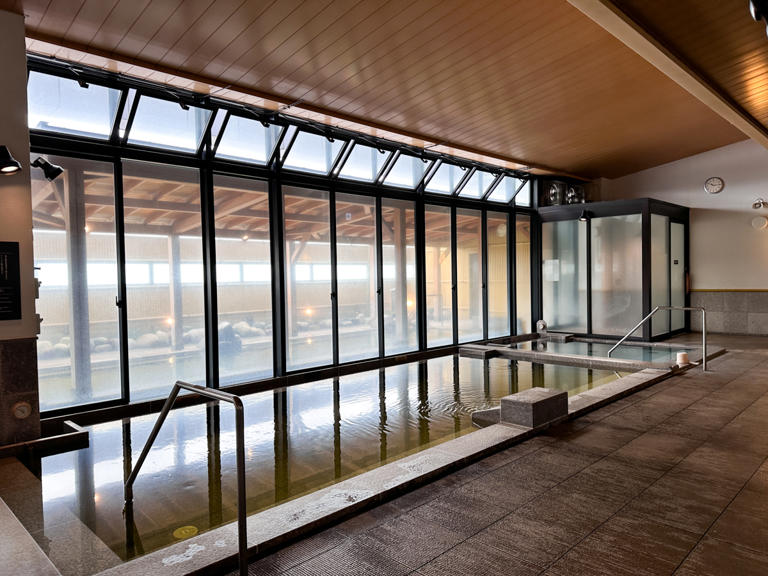
- Search Please fill out this field.
- Manage Your Subscription
- Give a Gift Subscription
- Newsletters
- Sweepstakes
- America’s Best Small Towns 2023 Overview: America’s Best Small Towns 2023
- Welcome to America’s Best Small Towns 2023
- Best Small Beach Town
- Best Small Mountain Town
- Best Small Lake Town
- Best Small Desert Town
- Best Small Food + Culture Town
- Best Small Wine, Beer, + Spirits Town
- Best Small Spa + Wellness Town
- Destinations
- America’s Best Small Towns 2023 Welcome to America’s Best Small Towns 2023 Best Small Beach Town Best Small Mountain Town Best Small Lake Town Best Small Desert Town Best Small Food + Culture Town Best Small Wine, Beer, + Spirits Town Best Small Spa + Wellness Town CLOSE Part of America’s Best Small Towns 2023
America's Best Small Beach Town Is an Old Florida Gem With Crystal-clear Waters and a Scenic Bike Path
Old Florida meets laid-back island living in elegant Boca Grande.
:max_bytes(150000):strip_icc():format(webp)/Skye-Sherman-author-pic-2000-d5983bed0cce41e1bafcdb645c665479.jpeg)
- The Best Times to Visit
Things to Do
Where to stay, where to eat and drink, where to shop, how to get there.
Vito Palmisano/Getty Images
While the state of Florida welcomes almost 140 million visitors each year, only a small portion of them make their way to serene Gasparilla Island and its main hub, Boca Grande. This upscale yet down-to-earth community on the Gulf of Mexico is just the right amount of under-the-radar, except when it comes to its role as “tarpon capital of the world."
In the words of Nikki Heimann, manager of The Pink Pony — an island-favorite ice cream shop opened in 1988 by her grandfather — the stoplight- and franchise-free community is “like stepping back in time.”
“Our beaches are stunningly clean and our water is usually clear and sparkling, with a bountiful variety of sea life,” she says. “A big allure is game fishing in our deep-water pass for tarpon. We have two well-maintained historical lighthouses with a museum and state park on the south end, and a smooth bike path that runs the whole length of the island, so many people enjoy renting a golf cart or bicycle to spend the day cruising around. It’s a great place to visit if you’re looking for peace, tranquility, and quiet time.”
Beyond its looks, Boca Grande is resilient. Along with much of Southwest Florida, especially Sanibel and Captiva islands to the south, it was devastated by Hurricane Ian in September 2022. The Pink Pony reopened soon after the storm, but other establishments were not so fortunate. “Many iconic features of our landscape are gone forever," Heimann says. "Everyone around here has their story and struggle that they’re going through. We are just thankful we didn’t get washed out.”
Back in action, Boca Grande remains a captivating place to visit — a tranquil respite from the frenetic pace of our modern world (and many parts of Florida) with a beachy, small-town allure. In fact, Travel + Leisure rated it the best small beach town in the country in 2023. Find out why for yourself by exploring the village by golf cart, bike, or your own two feet.
Nikki Heimann, The Pink Pony
It’s a great place to visit if you’re looking for peace, tranquility, and quiet time.
Ben Krut/Getty Images
The Best Times to Visit
Like many beach towns in Florida , Boca Grande is a seasonal destination. “Most people enjoy coming to the island during our busy ‘social season’ when the town is bustling with activity and the Florida sunshine is a delightful reprieve from the winter snow up north,” Heimann says. This period lasts from approximately Thanksgiving to spring break.
“Then, we roll into tarpon season, when the fishing families come to town and enjoy the island through summertime,” she continues. “Many downtown businesses close during August and September, so that’d be the time to come if you like to sweat in solitude.”
While mid- to late summer is a crowd-free, quieter time in Boca Grande, you may have trouble securing a stay, as the Gasparilla Inn closes annually from mid-July to early October. However, other hotels stay open, and there are assorted vacation rentals available. When planning your visit, remember that the best time to visit Florida , in general, is spring and winter as hurricane season lasts from June 1 through Nov. 30 each year, so there’s always a chance of storms during the summer and fall.
Getty Images
As one might expect of America’s best small beach town, the best things to do in Boca Grande are in, around, or on the water — namely, fishing, shelling, boating, beaches, and biking. Heimann says the number one thing she recommends is not so much an activity but an experience: enjoying a sunset either on the beach or a paddleboard. Other things to do include climbing the Gasparilla Island Lighthouse (known locally as the “range light”) and heading to Gasparilla Island State Park for swimming, snorkeling, or fishing. Keep an eye out for the tarpon that often jump and roll in the deep waters of Boca Grande Pass. Or, for more tarpon time, go during the annual World’s Richest Tarpon Tournament , a tradition dating back to the early 1980s. Thousands of dollars in prize money is on the (literal) line.
You can see much of what Gasparilla Island has to offer on the Boca Grande Bike Path . The island is only seven miles long and a half-mile across at its widest point, and this 6.5-mile path runs past highlights like Banyan Street, the Boca Grande Historical Society , and the pretty-in-pink Johann Fust Community Library . The north end is close to Glass Bottom Rentals , where Heimann recommends renting a clear kayak to paddle around the old railroad trestles nearby.
Try to score an invite to the members-only Useppa Island ; otherwise, a day trip to Cayo Costa should scratch the island-adventure itch. It’s accessible only via boat or kayak, with a ferry service available from several mainland locations.
Courtesy of The Gasparilla Inn & Club
Gasparilla Inn & Club
The Gasparilla Inn & Club represents old Florida at its finest, striking the perfect balance between ritzy and relaxed. The inn has a variety of accommodation options, from rooms and suites in The Main Inn to private cottages and two- to four-bedroom villas. Guests can take part in a range of activities, from golf to croquet, fitness classes, and spa treatments. The inn has four eateries — just be sure to pack with the dress code in mind.
Boca Grande Hotel
The quaint Boca Grande Hotel offers more laid-back accommodations on the north end of Gasparilla Island, near Uncle Henry’s Marina , but the closest public beach access is three miles away. The property has an outdoor pool, loungers that you can rent out and bring with you to the beach, and a guest laundromat for cleaning up before you repack your suitcase. Next door, you can grab a deli sandwich or ice cream from Kappy’s Market .
The Palmetto Inn
A sister to the Boca Grande Hotel, The Palmetto Inn is located in the Downtown Boca Grande Historic District and just a short walk from the beach. Built as a private residence in 1900, it’s now a charming inn with seven suites and some of the lowest in-season rates on the island.
The Innlet on the Waterfront
Located on the waters of the Boca Grande Bayou, The Innlet on the Waterfront is an unfussy charmer with about 30 waterfront and courtyard-facing rooms. Amenities include a pool, on-site restaurant serving breakfast and lunch, plus a full-service marina if you BYOB (Florida-speak for "bring your own boat"). Be on the lookout for manatees as you enjoy your breakfast on the patio of The Outlet.
Gasparilla Inn
Guests of the Gasparilla Inn will be delighted to find that its restaurants are some of Boca Grande’s best. It has an elegant main dining room (open for breakfast and dinner), the casual Pink Elephant (open for lunch and dinner), and the atmospheric BZ’s, where the public and guests alike can enjoy beverages and snacks while taking in views of The Gasparilla Golf Club and Charlotte Harbor. The Beach Club is another favorite for poolside beverages and lunch but is reserved for inn guests and members only.
The Temptation Restaurant
To experience Boca Grande like a local, order the fish of the day at The Temptation Restaurant . Signature dishes include crab cakes served with roasted shrimp sauce and pan-fried lemony-garlic snapper, while the daily special might be blackened tripletail or chargrilled pompano. The wine list is equally impressive.
Scarpa’s Coastal
Sister to the beloved, family-owned Scarpa’s Italian in Lakeland, Scarpa’s Coastal serves fresh Florida seafood with an Italian flair. It also offers an extensive wine menu with bottles imported from Napa Valley and Italy. Patrons rave about the crab cakes, pasta, and chicken dishes.
Eagle Grille and Miller’s Dockside at Boca Grande Marina
The Boca Grande Marina is home to two restaurants, Eagle Grille and Miller’s Dockside . At Eagle Grille, you’ll find a quieter setting with second-floor waterfront views, while Miller’s Dockside has a sports bar atmosphere right on the water. They have the same menu, full of fresh coastal cuisine like oysters, Gulf grouper, and shrimp.
Sisters Restaurant
It’s not vacation unless you go out for pizza at least once, and Sisters Restaurant is the place to do it. This homey spot offers classic Italian comfort foods to eat indoors or out — and, yes, it really is owned by twin sisters.
The Pink Pony
What’s a beach day without a stop for ice cream? The best place to grab a sweet treat is The Pink Pony, the kind of hometown ice cream shop that once rented out movies on VHS and developed photo film. Things are different now, but visitors can continue at least one generations-old Boca Grande tradition and stop in for hand-dipped Amish ice cream, sorbets, specialty sundaes, shaved ice, all-fruit smoothies, açaí bowls, and coffee drinks. The Pink Pony also has snacks, beer, wine, bagged ice, and souvenirs. And don’t miss Tortuga , the outdoor walk-up window serving authentic Mexican food behind the storefront.
Boca Grande has local, family-owned shops selling souvenirs, art, clothes, and more. Heimann recommends Fugate’s — “a classic island gift store that has a little bit of everything,” she says. Or stop by Barbara Anne’s for a special piece of jewelry to commemorate your trip.
At the family-owned Smart Studio Art Gallery & Shop (which has another location in Maine), you’ll find stunning local art, including original paintings, prints, driftwood sculptures, gifts, and home decor. Or, if you’re in the market for light tackle or outdoorsy clothing and accessories, stop by Boca Grande Outfitters .
Samuel Foster/Getty Images
Aside from the private Coral Creek Airport, which is less than 10 miles from Boca Grande, there are several public airports nearby. The closest is Punta Gorda Airport (PGD), about an hour away, which is serviced by Sun Country and Allegiant Air with nonstop flights from about 50 cities.
There’s also Sarasota Bradenton International Airport (SRQ) and Southwest Florida International Airport (RSW), both of which are about an hour and a half away, and Tampa International Airport (TPA), which is about two hours away by car. Boca Grande is over three hours from both Orlando International Airport (MCO) and Miami International Airport (MIA). No matter where you fly into, there’s just one road onto Gasparilla Island: the Boca Grande Causeway.
America’s Best Small Towns 2023
Related articles.

IMAGES
VIDEO
COMMENTS
Uruguay. Wedged like a grape between Brazil's gargantuan thumb and Argentina's long forefinger, Uruguay has always been something of an underdog. Yet after two centuries living in the shadow of its neighbors, South America's smallest country is finally getting a little well-deserved recognition. Progressive, stable, safe and culturally ...
Summer (December to February): High Season: This is the peak tourist season in Uruguay, especially during January. Expect warm and sunny weather, making it ideal for beach activities and water sports. Festivals: Many festivals and events, including Carnival, take place during the summer months.
Quick Uruguay Travel Tips: Montevideo Sunday Market: Try to be in Montevideo on a Sunday, the day they have their incredible and massive city-wide street market. Renting Cars in Uruguay: You can rent a car and do this whole journey, or you can bus between places and spend a couple of days in each place. The main cities are easily connected by bus.
Diversity. Uruguay is one of the leading countries in the world in terms of diversity. Not only was it the first country in Latin America to allow women to vote, more recently it was the first country to legalise same-sex marriage. Same-sex sexual activity has been decriminalised since 1934, and anti-discrimination laws have been in place since ...
Travel tips: Know before you visit Uruguay Visas and entry. Uruguay's visa requirements differ based on the citizenship and residency of visitors. However, citizens (passport holders) of Australia, Canada, Germany, Great Britain, New Zealand, United States, and many other countries can fill out a tourist card at immigration and will ...
Uruguay Travel Guide - Forbes Travel Guide. Comfortably wedged between Brazil and Argentina, Uruguay is the gorgeous South American country of your travel fantasies. Its verdant interior, colonial-era architecture (especially in capital city Montevideo) and beach-lined coast hit all the vacation high notes — a sublime food scene (look out for ...
Day 3: Colonia del Sacramento. Morning: Start your day by traveling to Colonia del Sacramento, a picturesque city located on the shores of the Rio de la Plata. Colonia is known for its well-preserved colonial architecture and is a designated UNESCO World Heritage site.
Historic Colonia. Colonia del Sacramento, Uruguay's oldest city, lies 112 miles (180km) to the west, across the broad sweep of the tea-colored Río de la Plata from Buenos Aires. Founded by Portuguese colonists in 1680, it passed between Portuguese and Spanish hands for decades. Today its postcard-perfect, UNESCO-protected Barrio Histórico ...
Visit Mercado del Puerto, a historic market located in Montevideo's old port. There you'll be able to taste lots of Uruguayan traditional dishes. Make sure to try their famous drink called Medio y Medio—a mix of dry white wine and sparkling wine. Take a guided tour of Solís Theatre, Montevideo's historic theater.
If you do only have one week, a suggested Uruguay travel itinerary is: Days 1 & 2: Depart Buenos Aires, explore Colonia del Sacramento, overnight in Carmelo and then enjoy the Carmelo wineries. Day 3: Drive to Montevideo and explore the city. Days 4 & 5: Drive to Punta del Este, relax on the beaches. Days 6 & 7: Drive to Punta del Diablo and ...
Our Top Uruguay Itinerary: A Perfect 2-Week Coastal Route. Thinking about visiting Uruguay? With glorious beaches, chilled vibes and great food, an Uruguay itinerary should be on your bucket list.
Out of all the places in Uruguay, this is probably the best place to start. Also, you'll find 'the hand', is a sculpture that is Uruguay is famous for. Uruguay Travel Tips. See these travel tips for Uruguay to ensure you have the best stay whether you're on vacation, backpacking, or traveling with friends. ⤵️ Dan's Travel Tips For ...
Uruguay Travel Guide - View the KAYAK Uruguay country guide for the best Uruguay travel tips. To help you organize your Uruguay trip ideas, this Uruguay visitors guide provides travel information and trip tips about how to get there, where to stay, what to do and more.
From visas to language, communication, adapters you need and tipping, find all the answers in our Uruguay travel guide. Go ahead and dream big. Enchanting Travels experts are here to help you plan the ultimate escape. Tell us your vision for the trip of a lifetime and we'll make it a reality.
Uruguay travel guide. About Uruguay. A peaceful, laidback destination with a long history of liberalism (Uruguay was the first country to fully legalize marijuana) this pint-sized nation finds itself squeezed between Brazil and Argentina, and is often overshadowed by its heavyweight neighbours. However, as Uruguay has come to appreciate its ...
ESSENTIAL URUGUAY TRAVEL TIPS URUGUAY is the underdog that always prevails! Resting between Brazil and Argentina, Uruguay is often overlooked and outshined by its neighboring powerhouse countries. However, Uruguay is truly a hidden gem of South America. Uruguay has beautiful beaches, rolling green hills, farmlands and an authentic gaucho culture.
Get information on Uruguay Travel Guide - Expert Picks for your Vacation hotels, restaurants, entertainment, shopping, sightseeing, and activities. Read the Fodor's reviews, or post your own.
7. Jose Ignacio, Uruguay. Why Visit Jose Ignacio. Jose Ignacio has recently changed from a small fishermen's village to Uruguay's most exclusive and chic beach destination, where celebrities and locals mingle in this laid back spot of the Uruguayan Atlantic coast. It is a great place to relax for a few days at the beach, enjoy the town's ...
Uruguay has great public transportation infrastructure, with local bus fares costing as little as $1USD per trip and longer-distance buses (e.g. from Montevideo to Punta del Diablo) costing about $20USD. Renting a car is also fairly economical, costing about $25USD to $40USD per day with discounts available for multi-day rentals.
A guide to Montevideo, Uruguay, the unsung hero of South America. Thanks to its population of just 3 million and how far south of the equator it is, Uruguay is one of those small countries that tends to slip under the radar for many tourists hailing from the northern hemisphere. This may be exactly the reason to include it on your travel bucket ...
Best in Travel - 2023. 4 days in Montevideo: South America's secret foodie destination. Nov 15, 2022 • 7 min read. Lola Méndez takes you on a four-day culinary adventure, eating your way through South America's secret foodie destination. Beaches. A local's guide to Montevideo, Uruguay. Oct 25, 2022 • 6 min read.
At the mere age of 22, Guru'Guay founder, Karen A Higgs, found herself stranded in Mexico City airport—with just a pocket Spanish dictionary for company. Since then, she's lived most of her life in Latin America. In 2000, she moved to Uruguay and promptly fell in love with this most understated and "European" of Latin American nations.
5 Interesting Wines of Tannat from Uruguay The following wines tasted during the virtual wine event reflect diverse styles of Tannat from Uruguay. A lighter style, Pujol Folklore Tinto 2023 ($23 ...
He offered five things he would never do if you want your trip to go off without a hitch. 1. Travel without insurance. Ellwood says that travel insurance is often very low cost and can save you in ...
Expedia's Fish shared five tips for booking summer 2024 vacations: Bundle your trip. Booking airfare and a hotel at the same time can earn you deep discounts. ... Travel midweek or later in the ...
The US Department of State issued updated travel advisories for American tourists traveling to countries worldwide. These are the countries with travel warnings for American tourists right now.
Local guides, travel tips and the latest industry news. Cruise worker charged with stabbing 3 with scissors on ship off Canada. France tries to shed its rude reputation ahead of the Olympics.
Uruguay Travel Guide. Download our FREE Uruguay Travel Guide and get inspired to travel to Uruguay. Browse through 30 pages of travel planning tips and ideas - a great resource for planning your Uruguay dream vacation. Hidden. Country of Interest. Name * First. Last. Email * Phone.
Insider Japan Travel Tips You MUST know: If you have an iPhone, you can go to your wallet, click the plus sign, then click Transit Card. Now you can search "Japan" to see the Suica option. Now ...
Skye Sherman is a freelance travel writer based in West Palm Beach, Florida. Aside from traveling, she's also a pilot, scuba diver, bookworm, and fourth-generation Floridian.